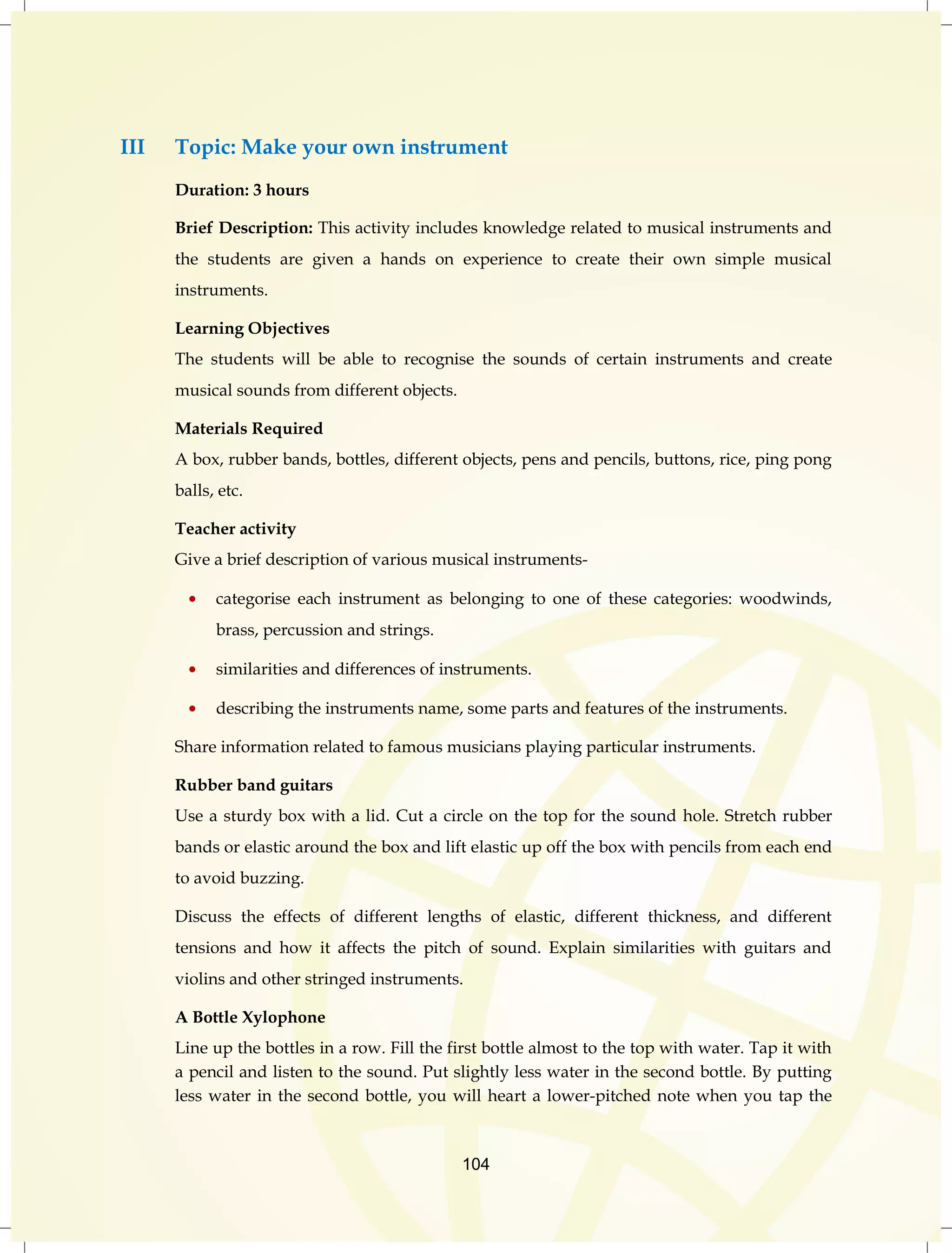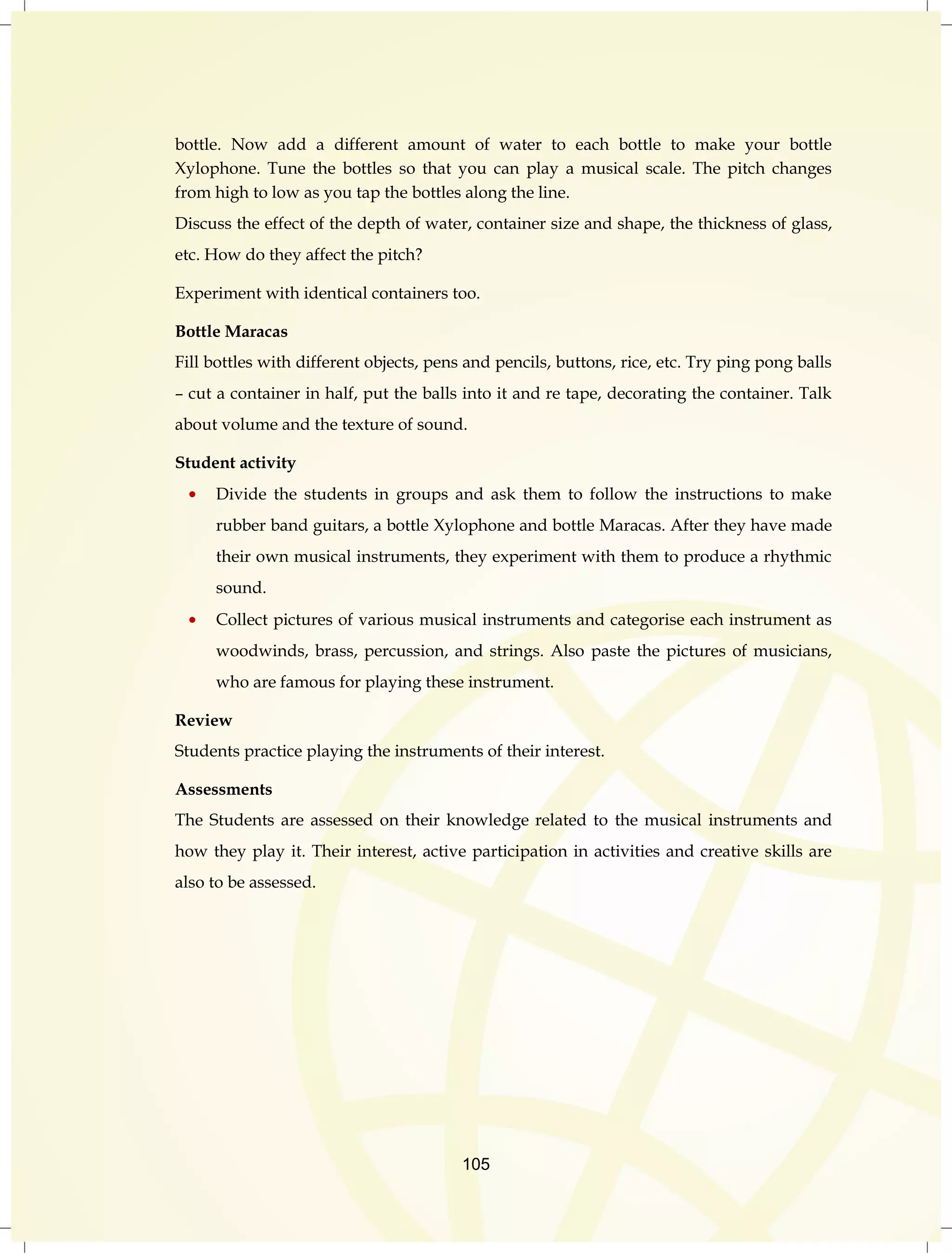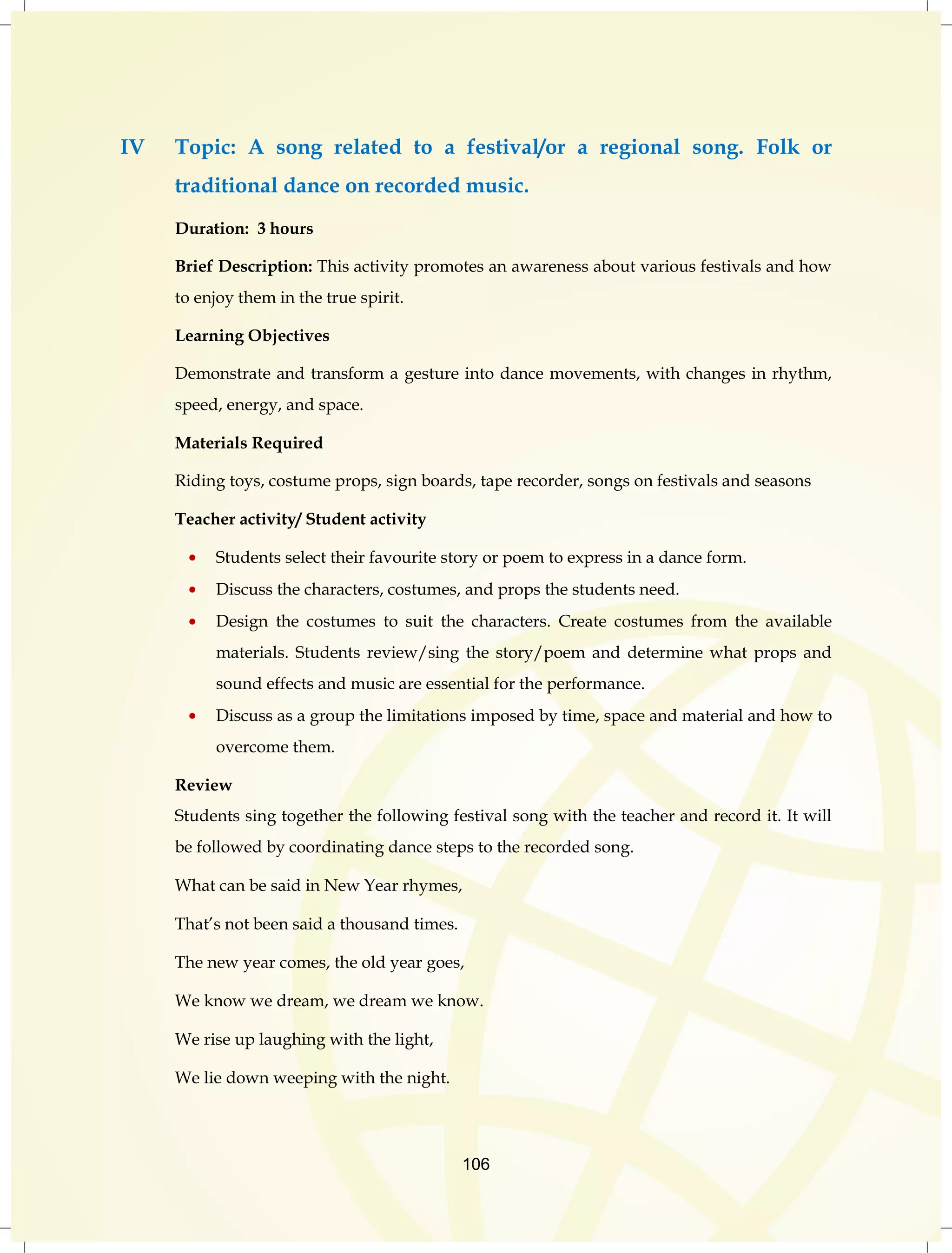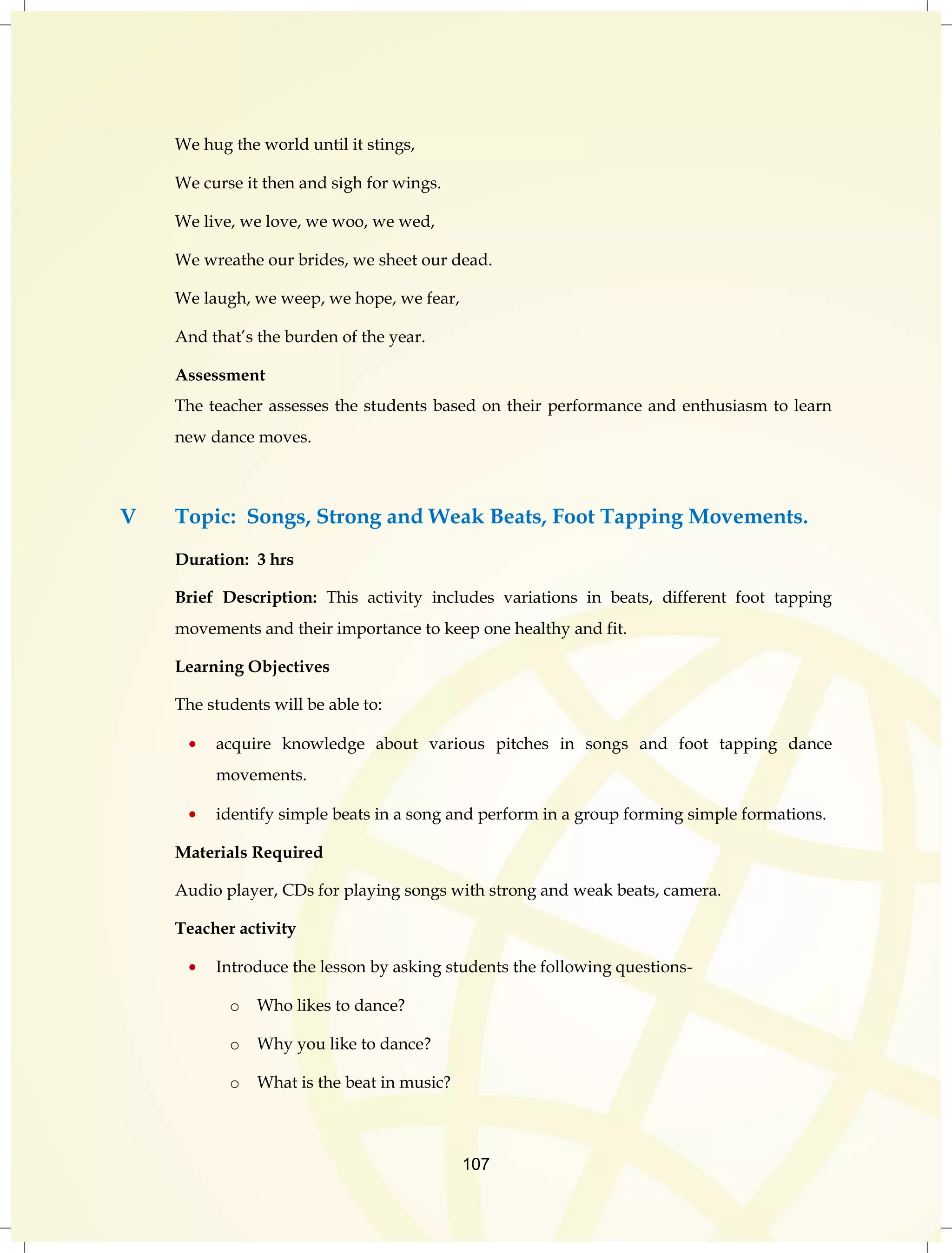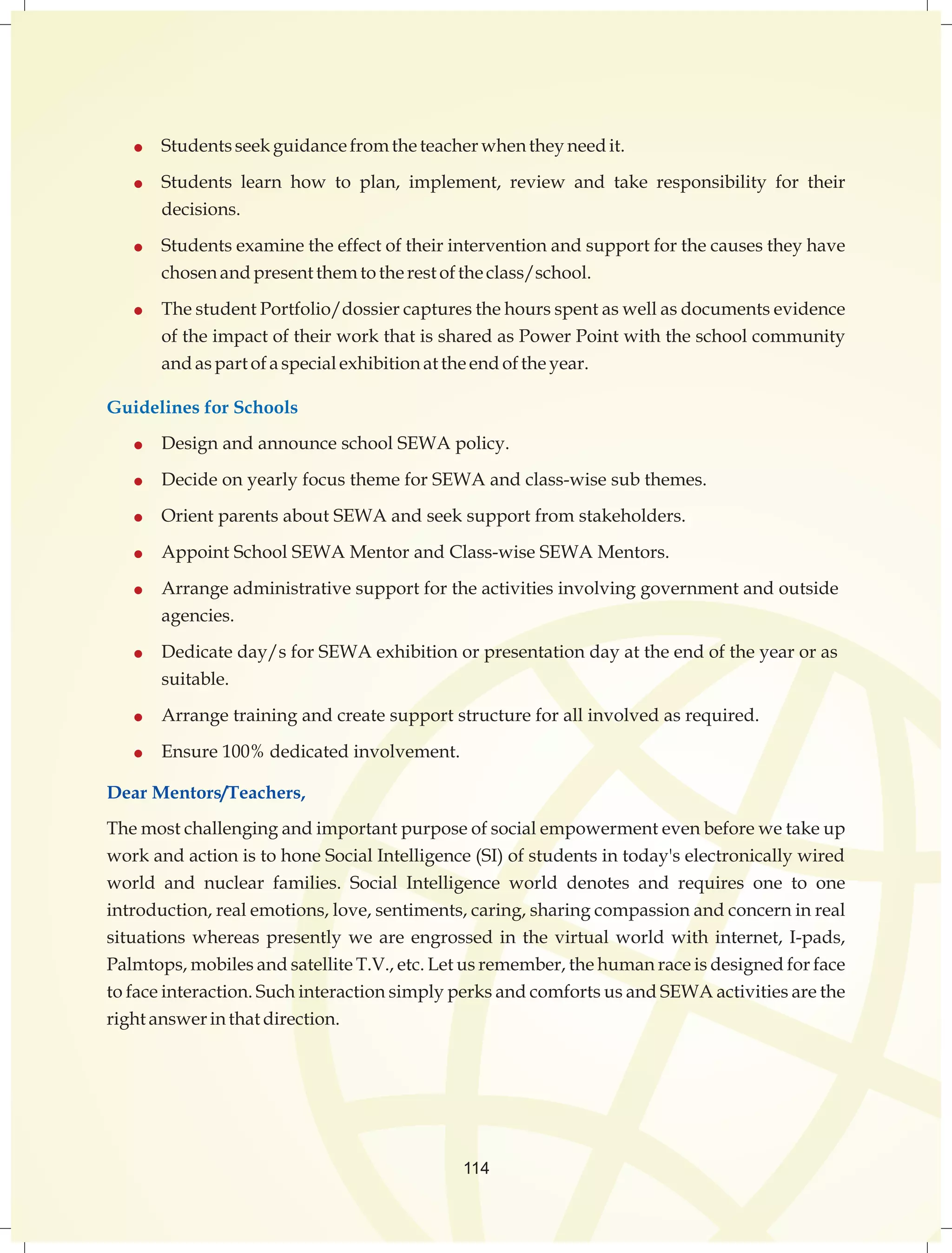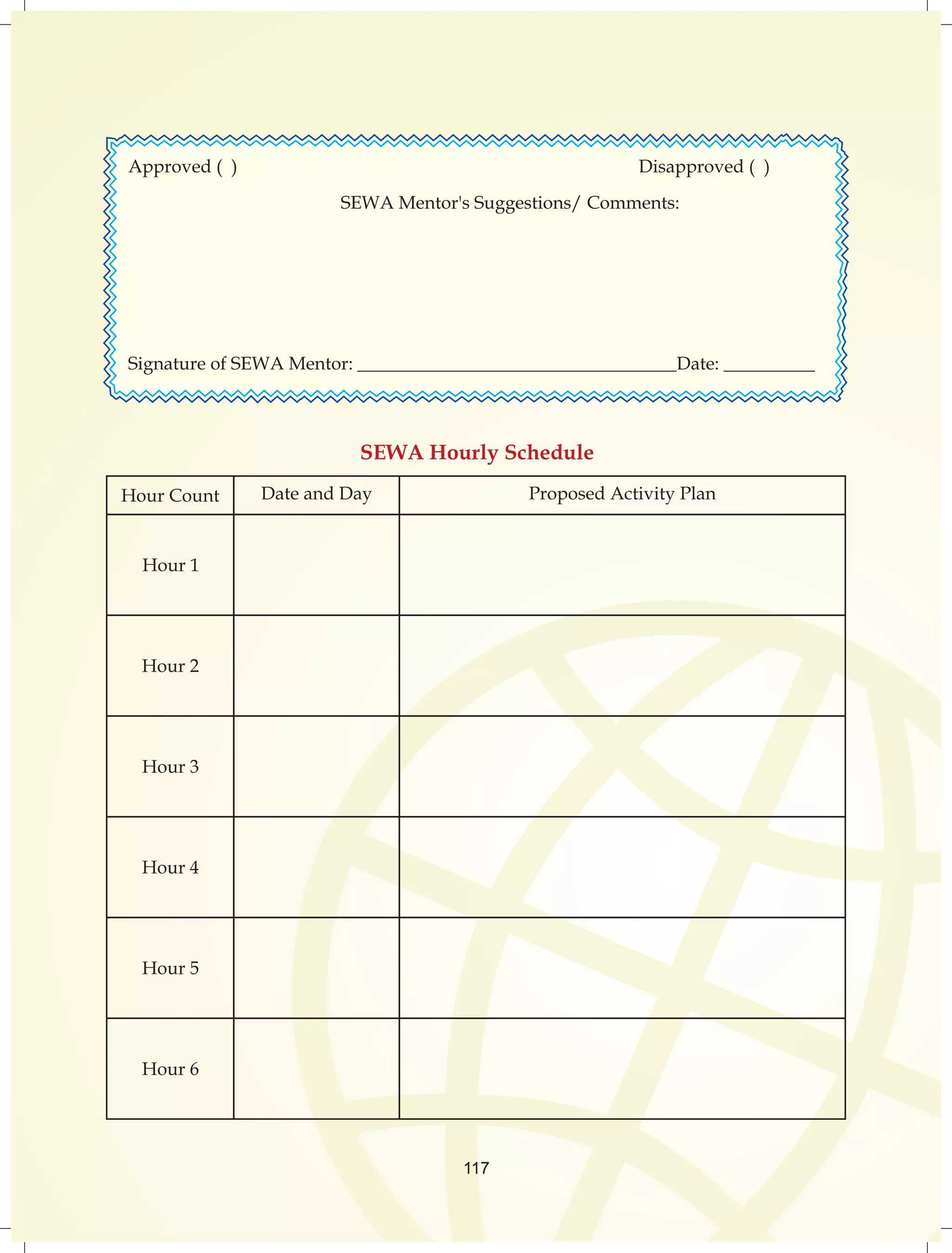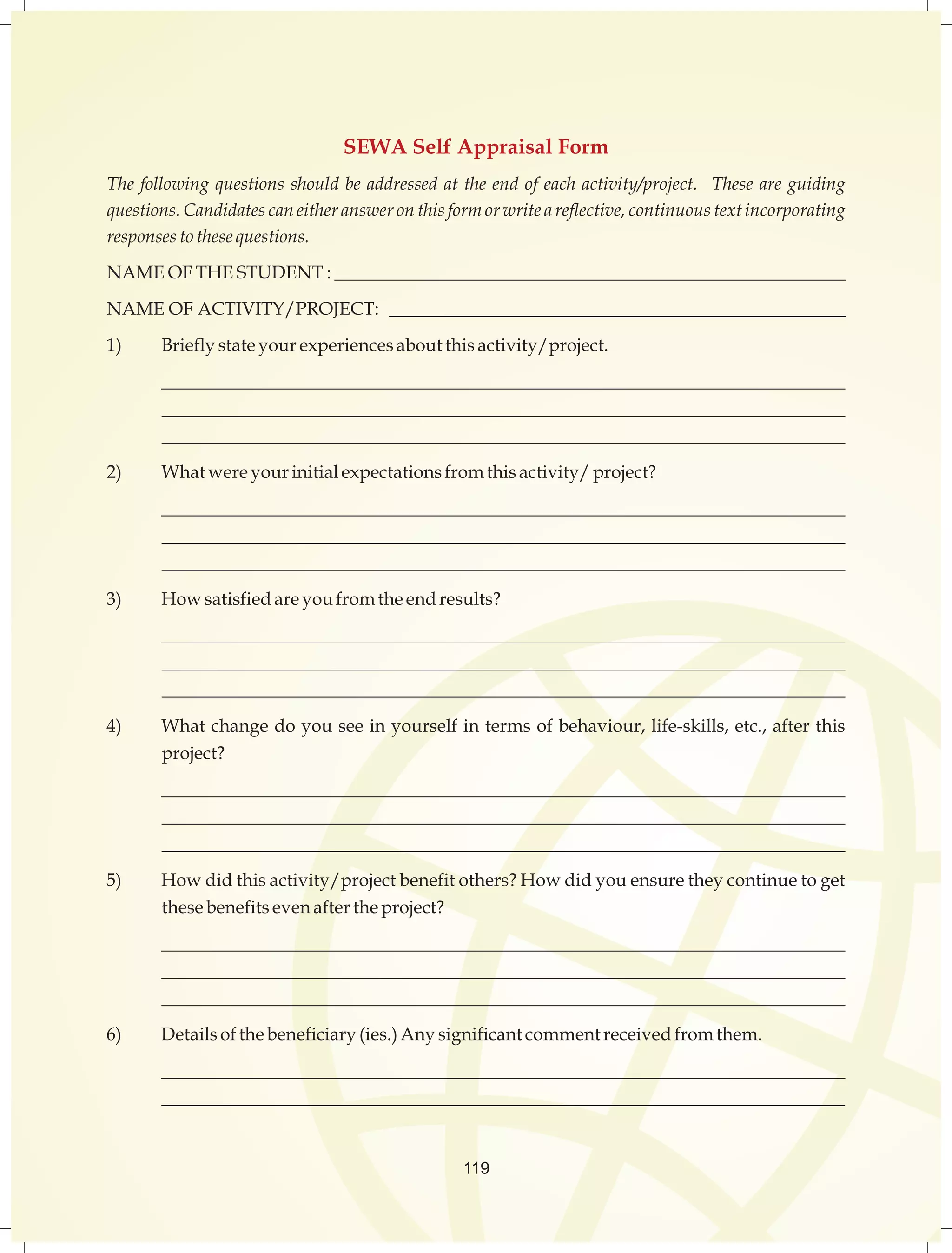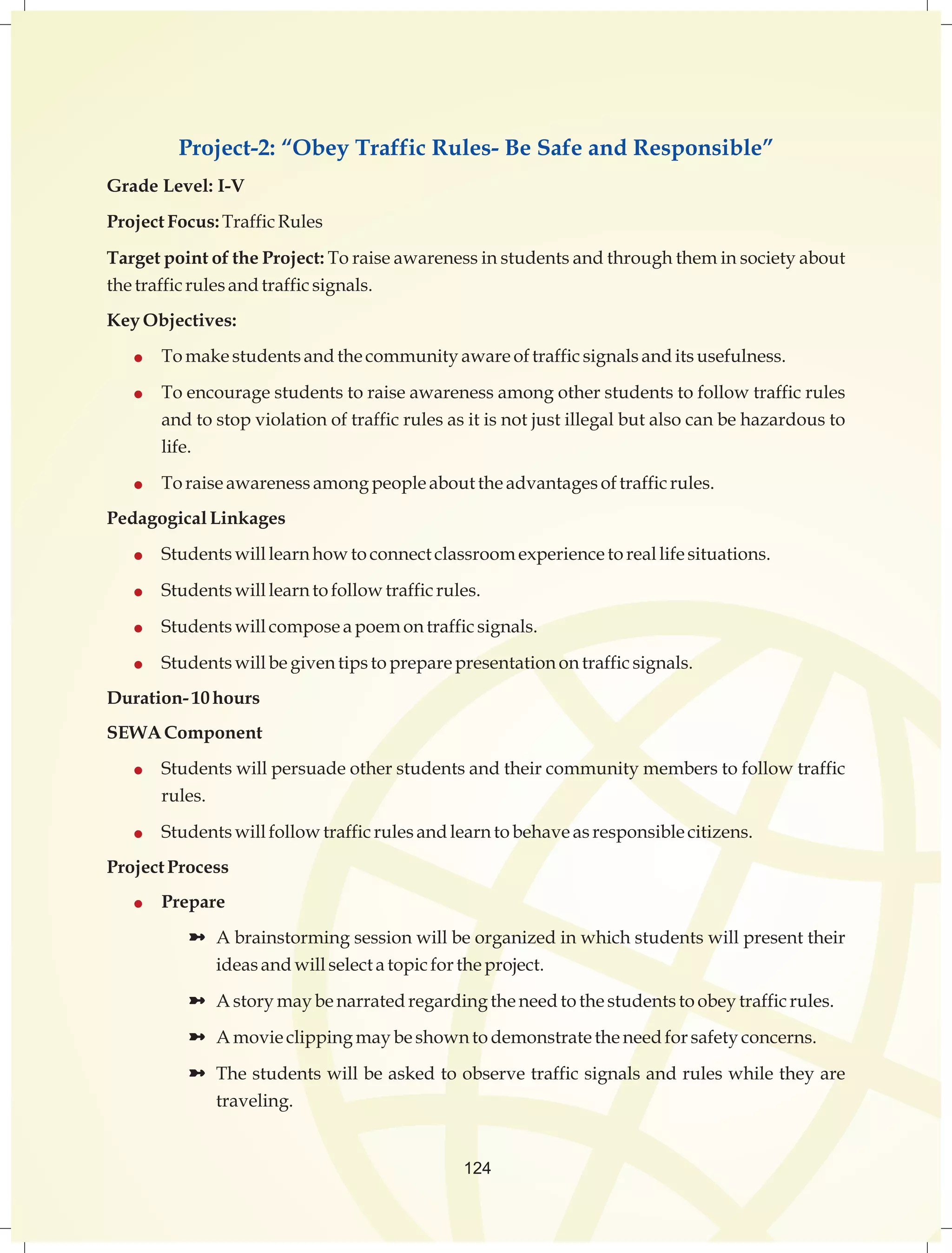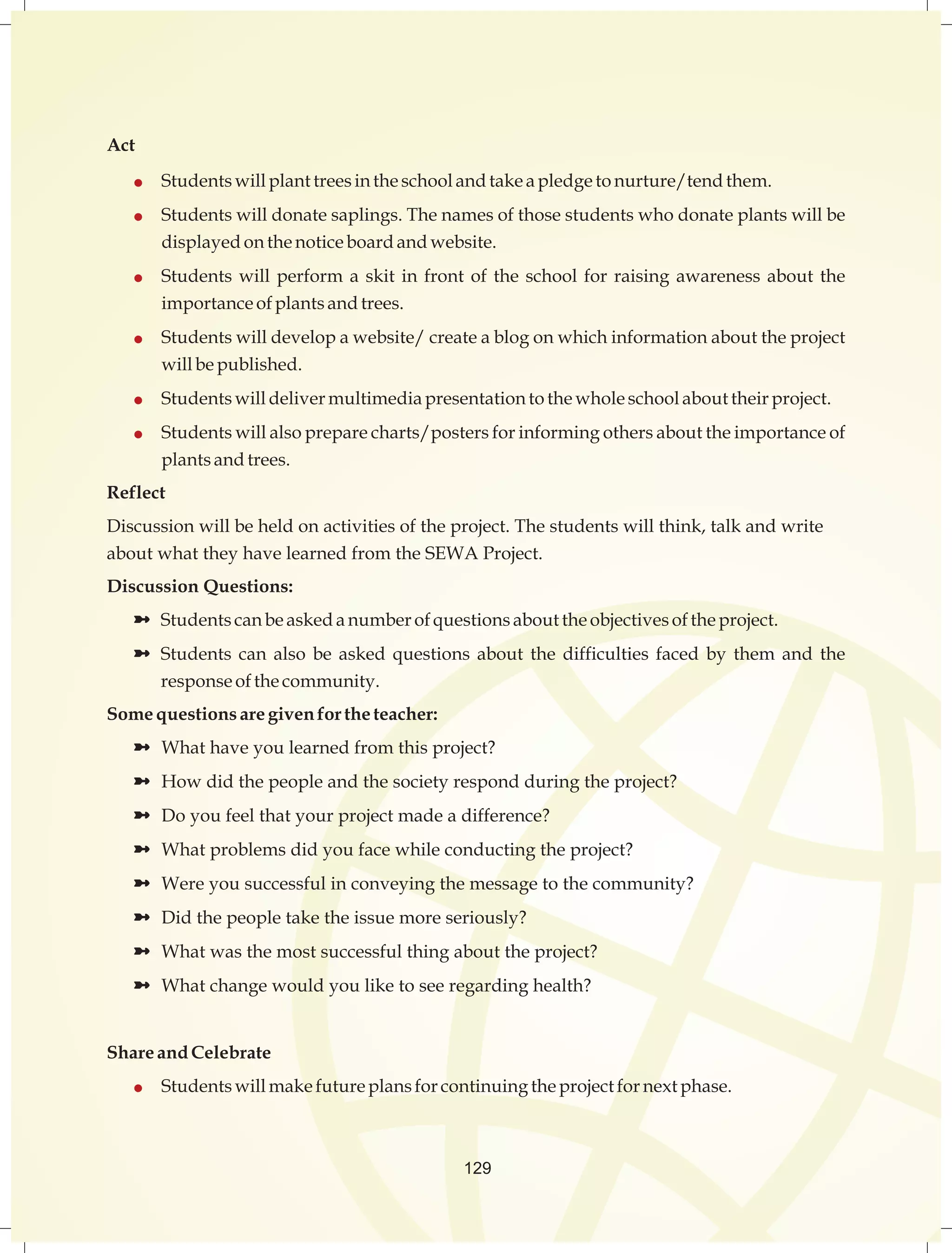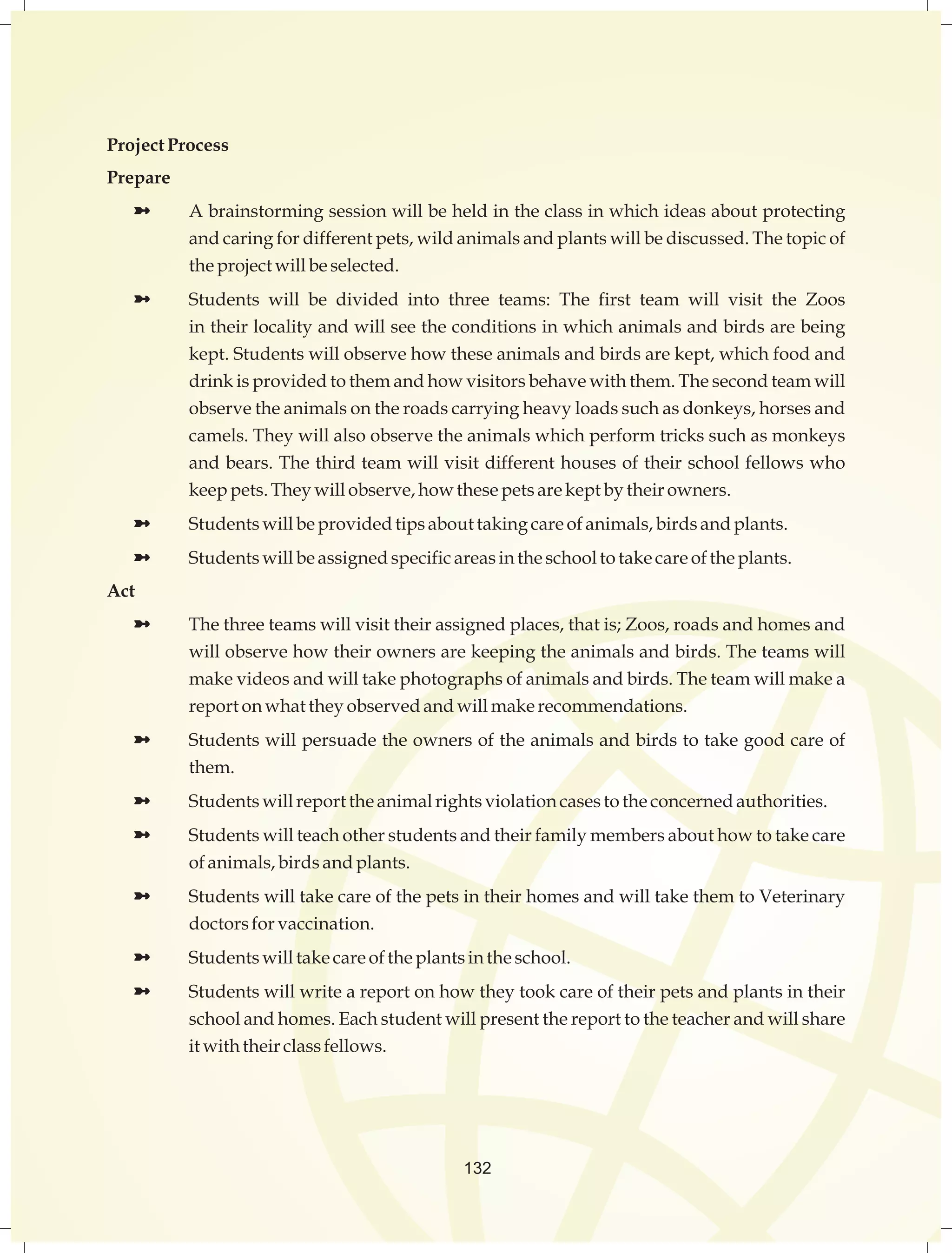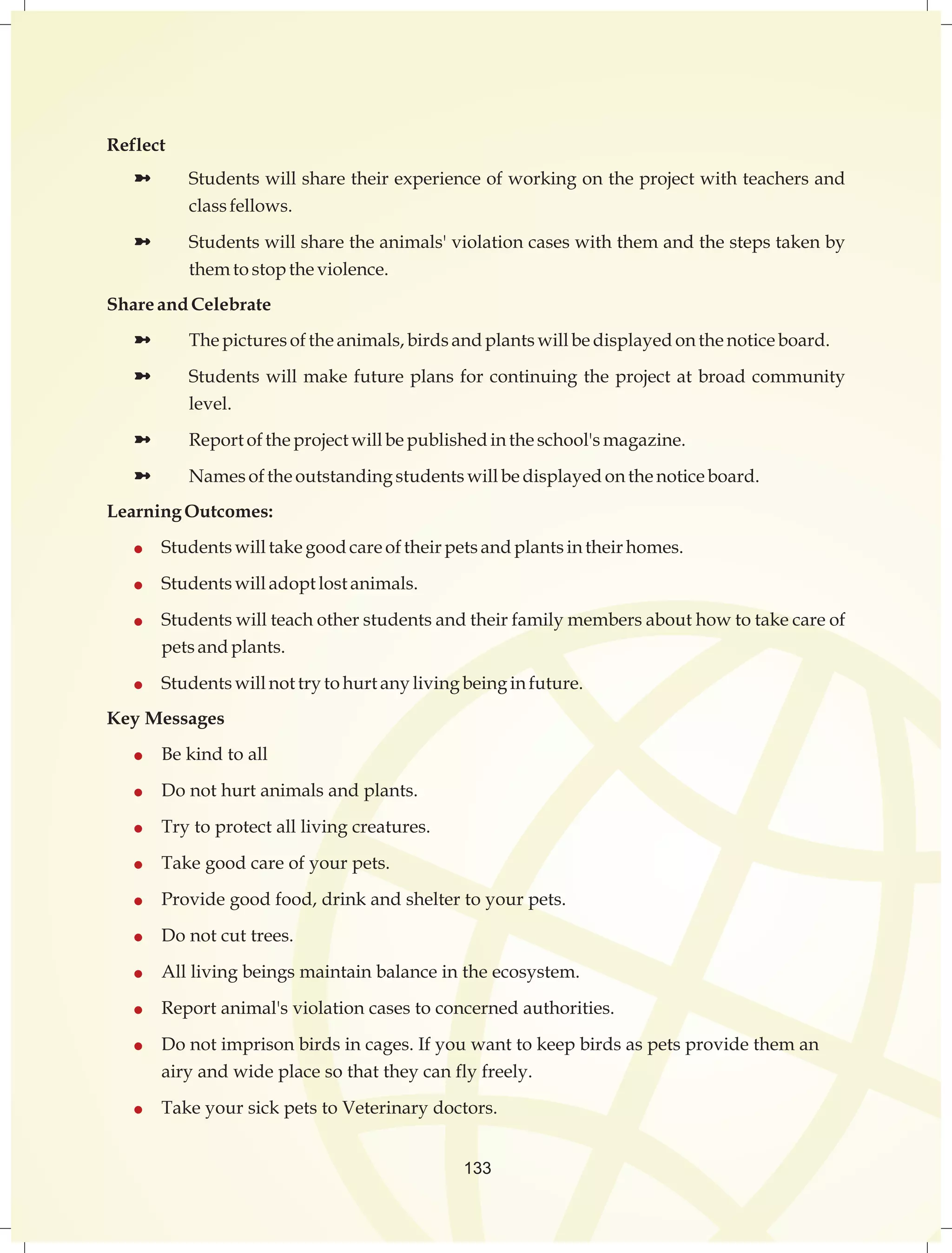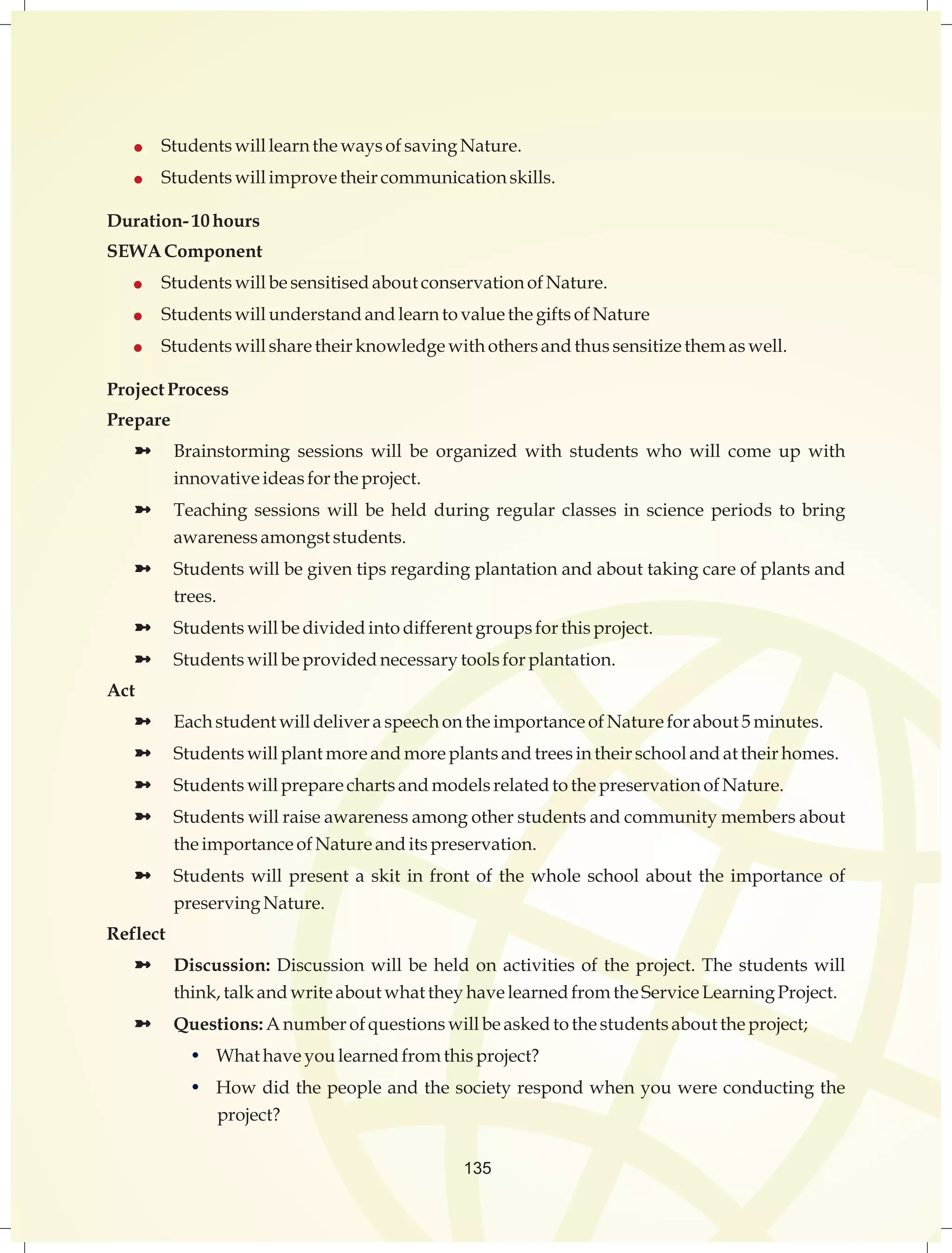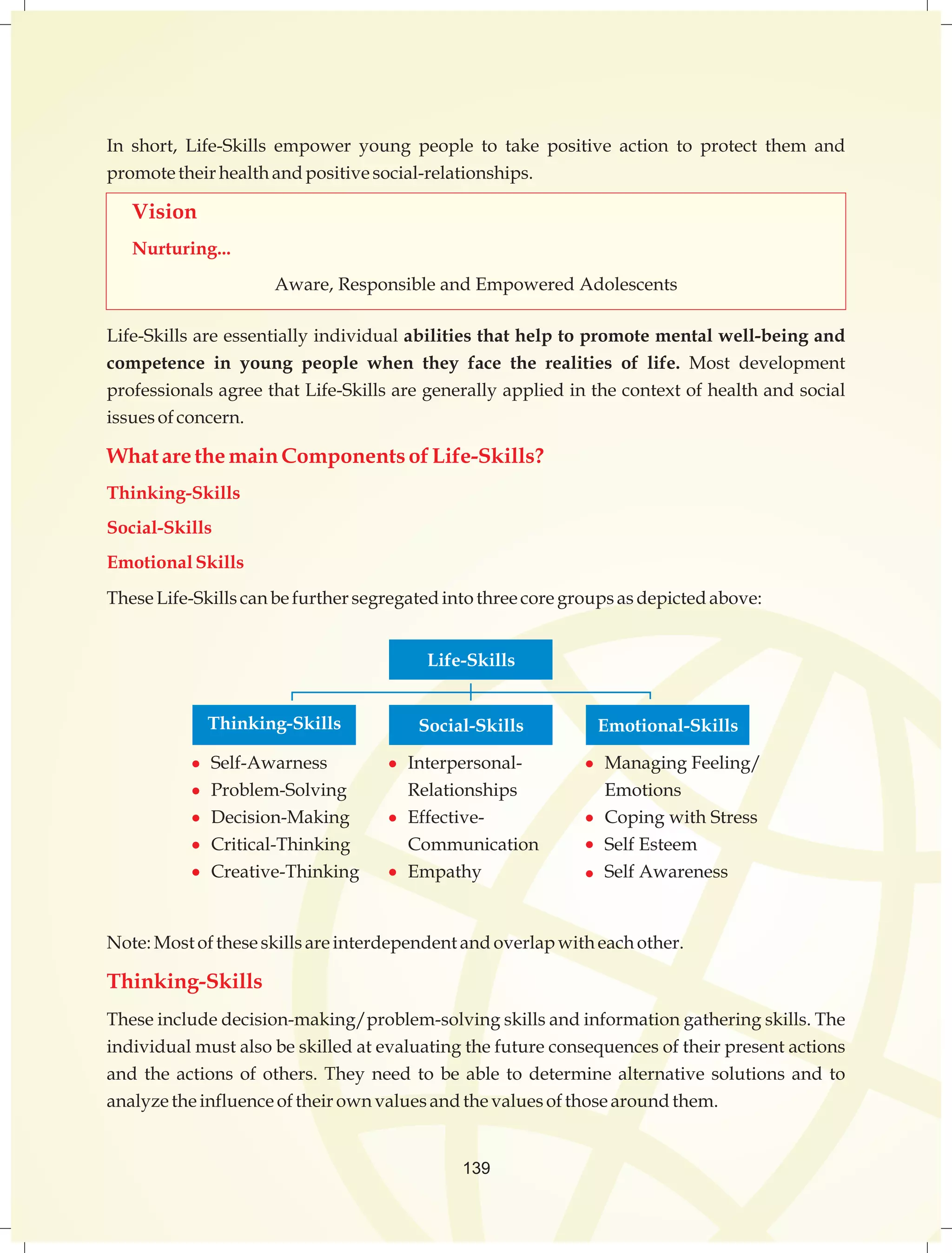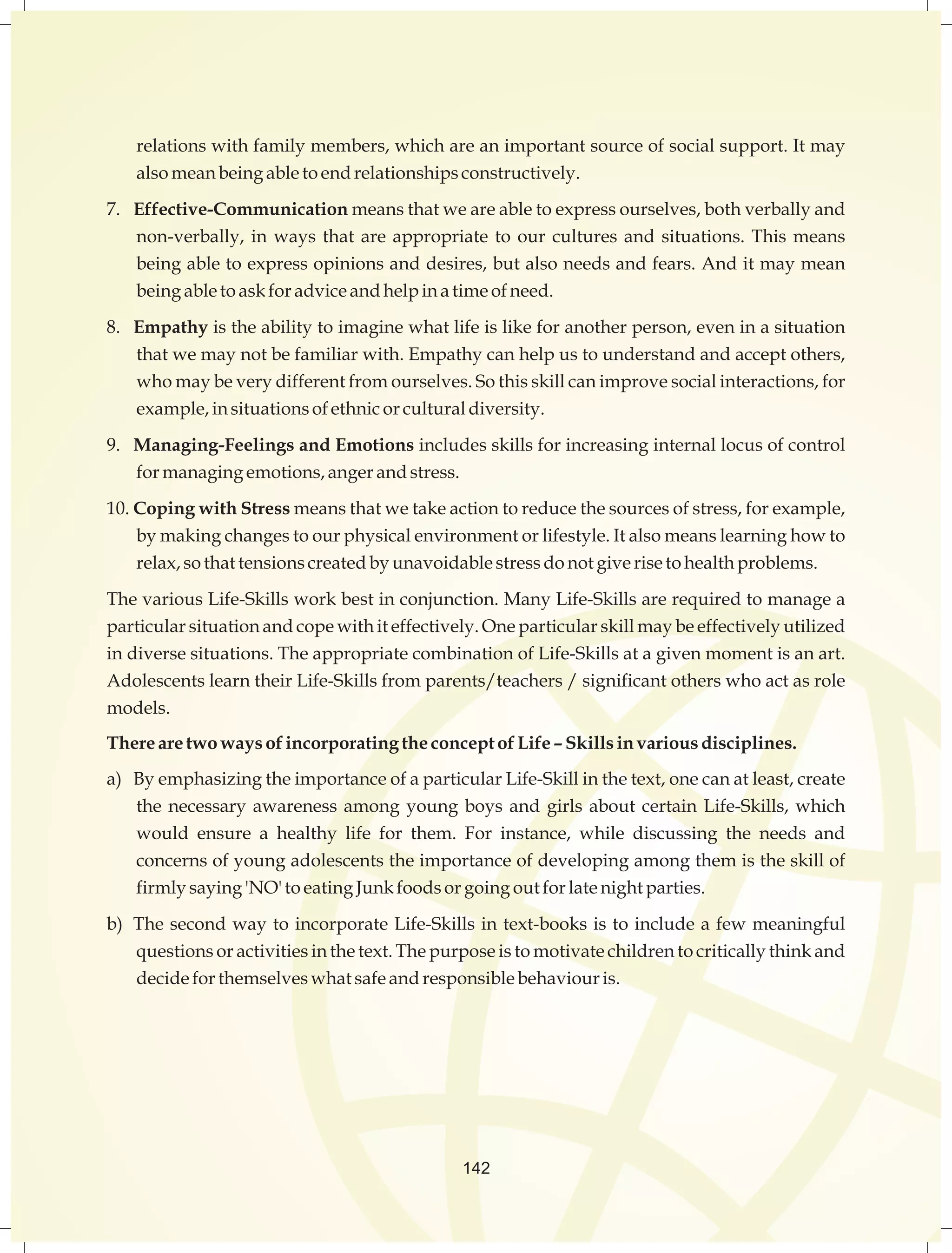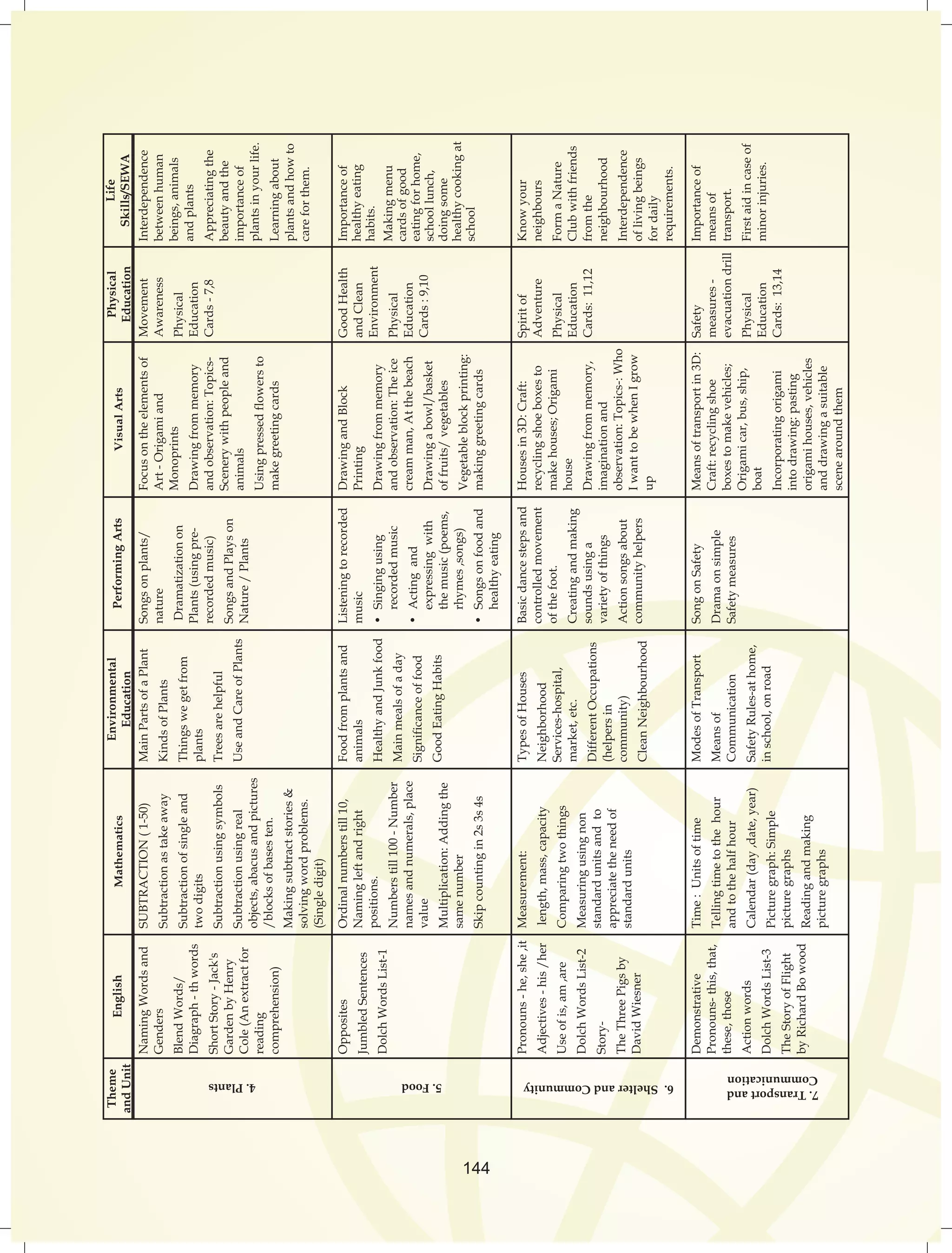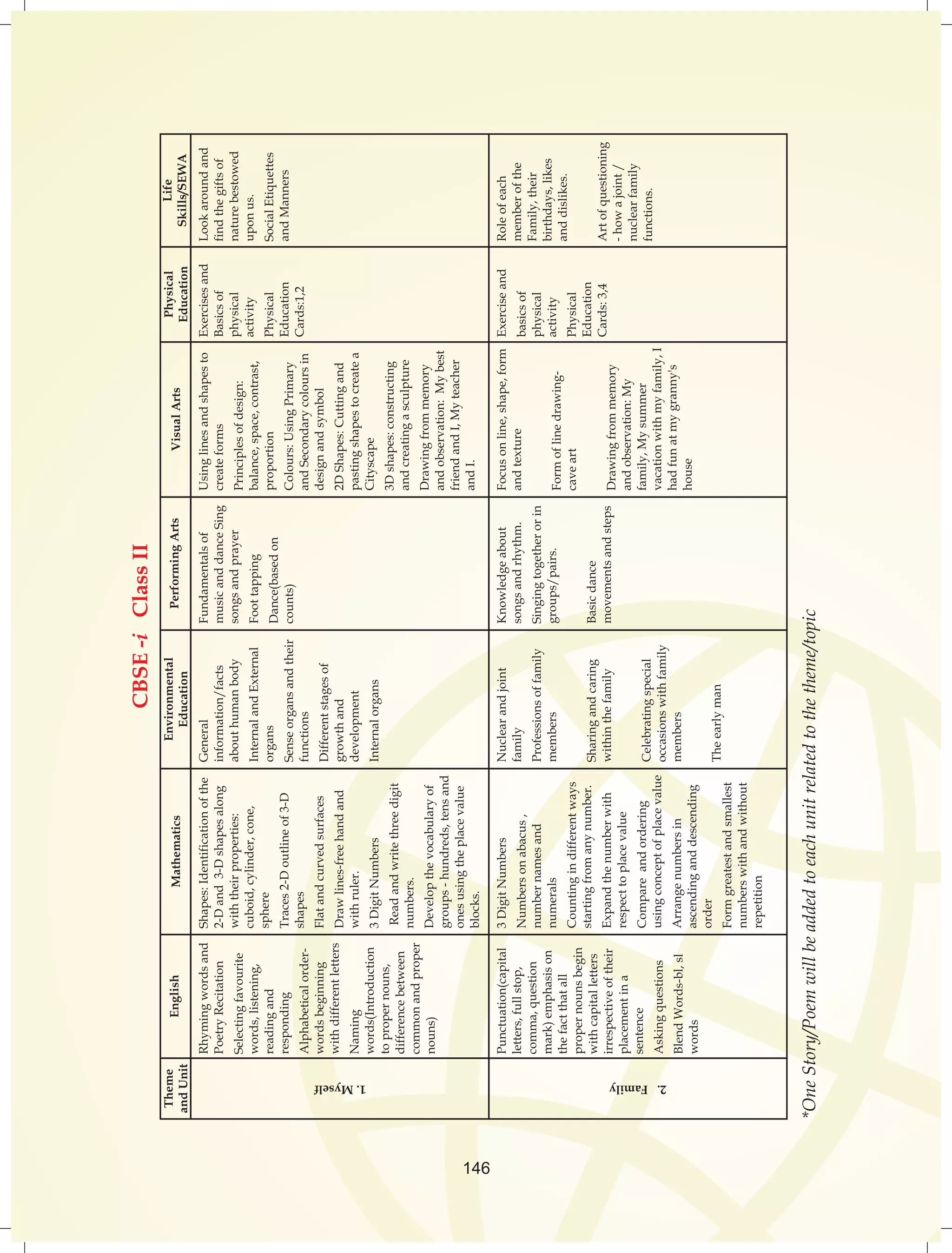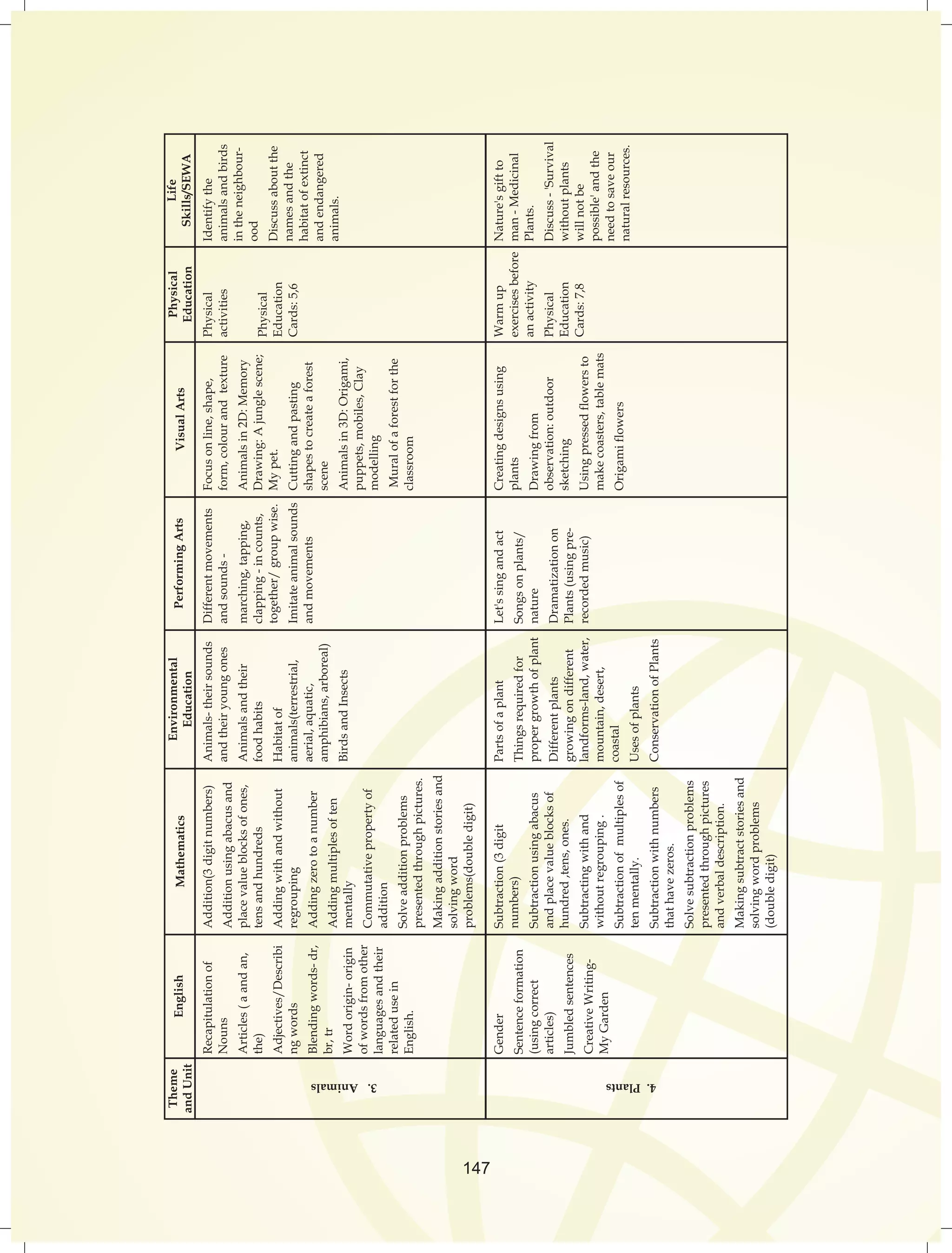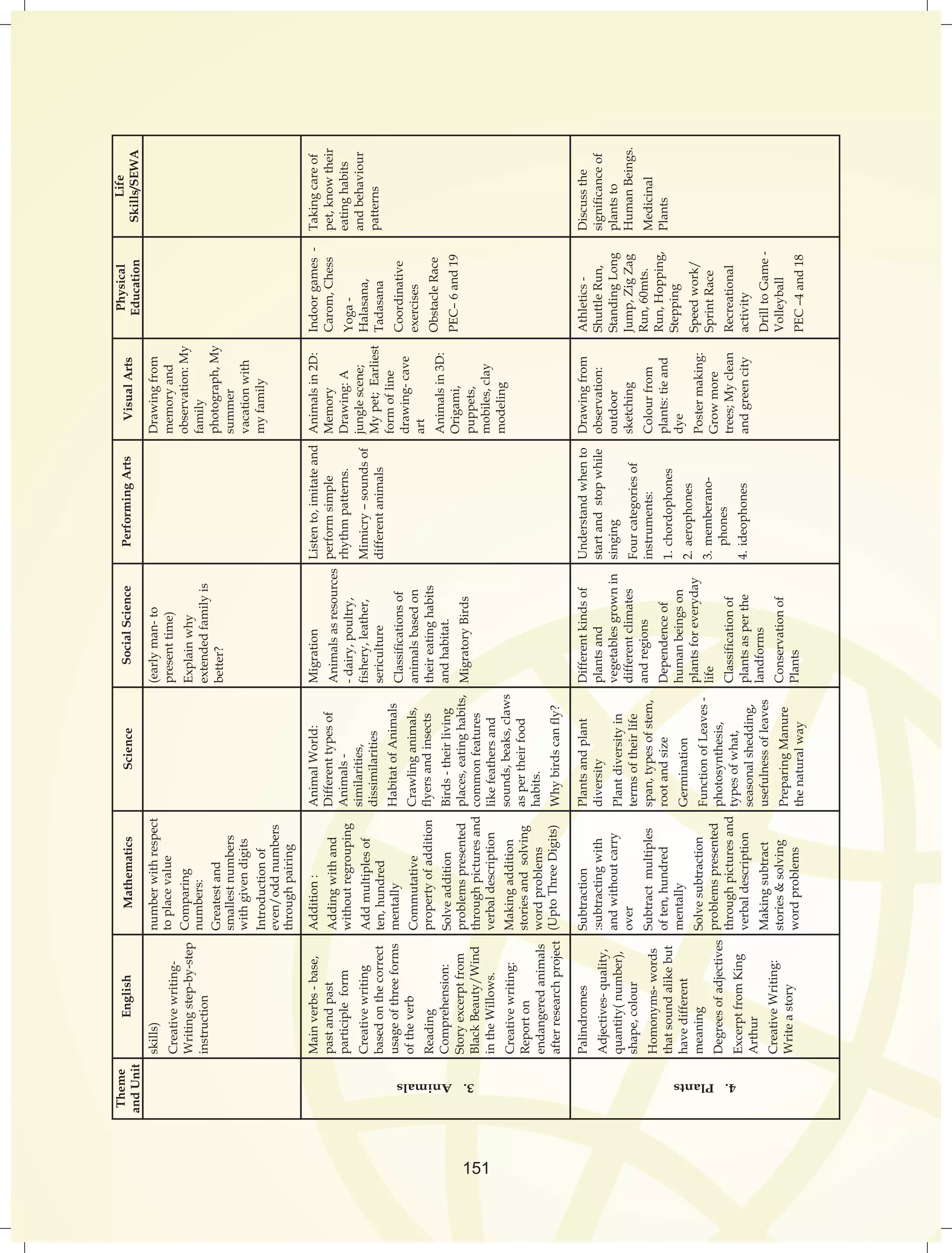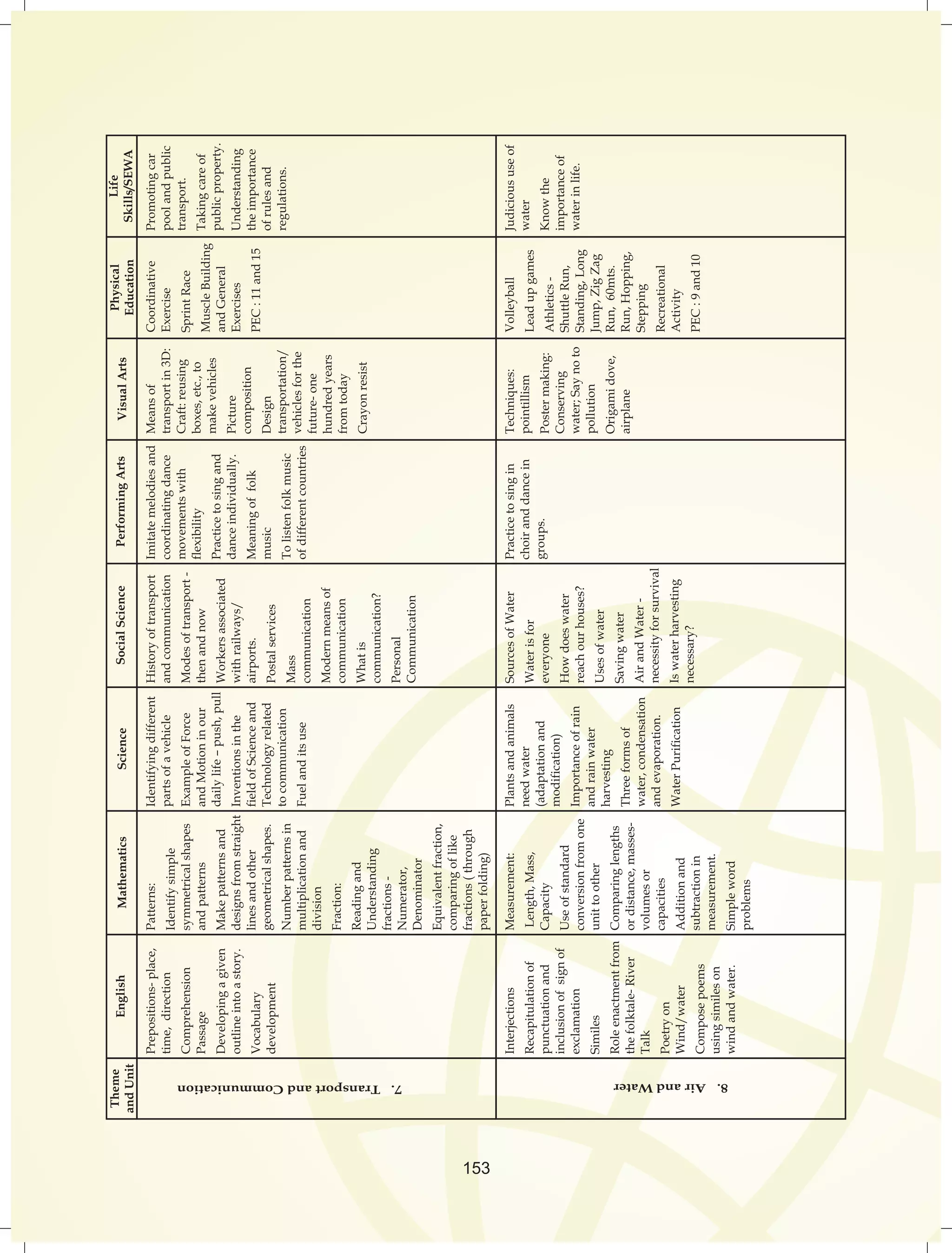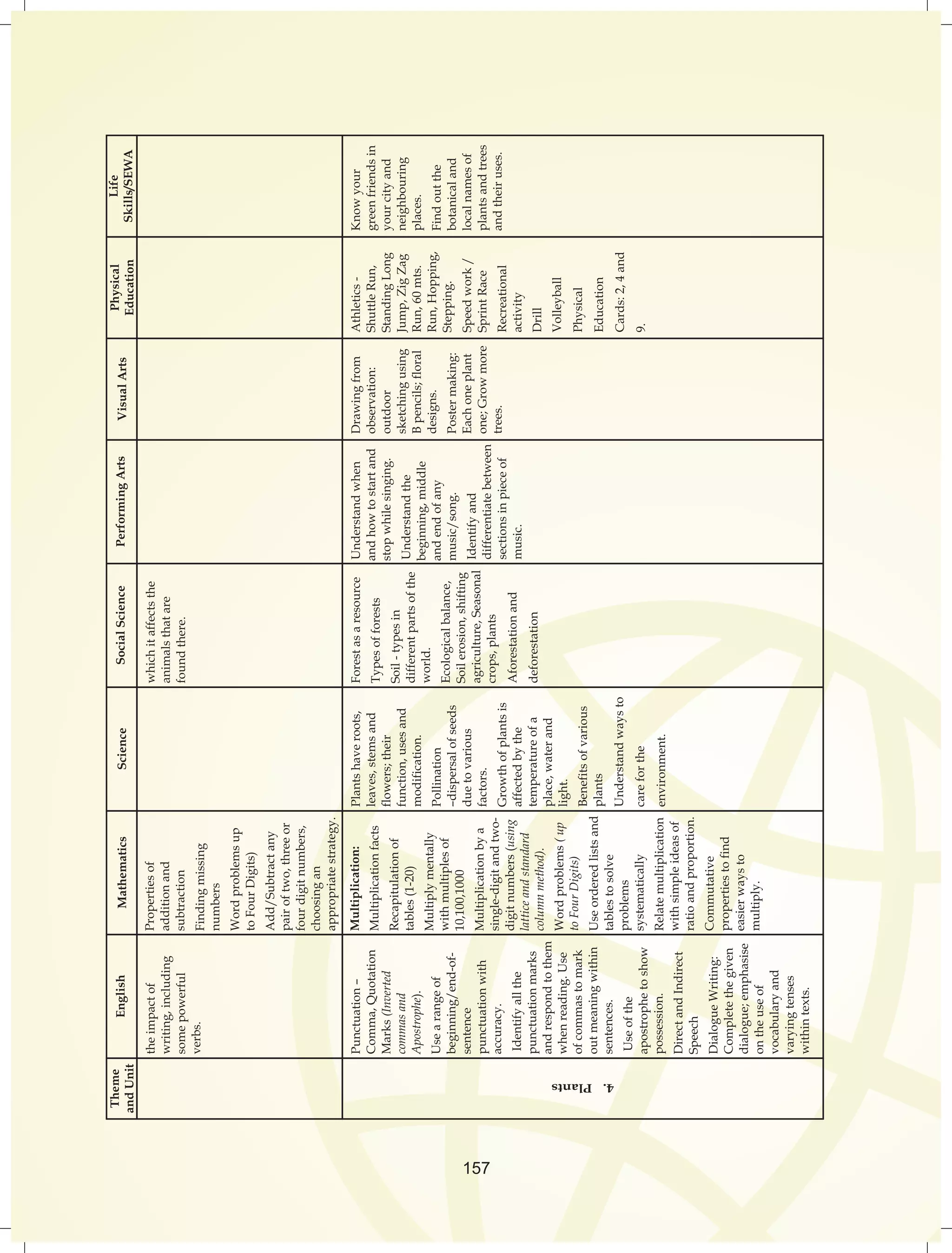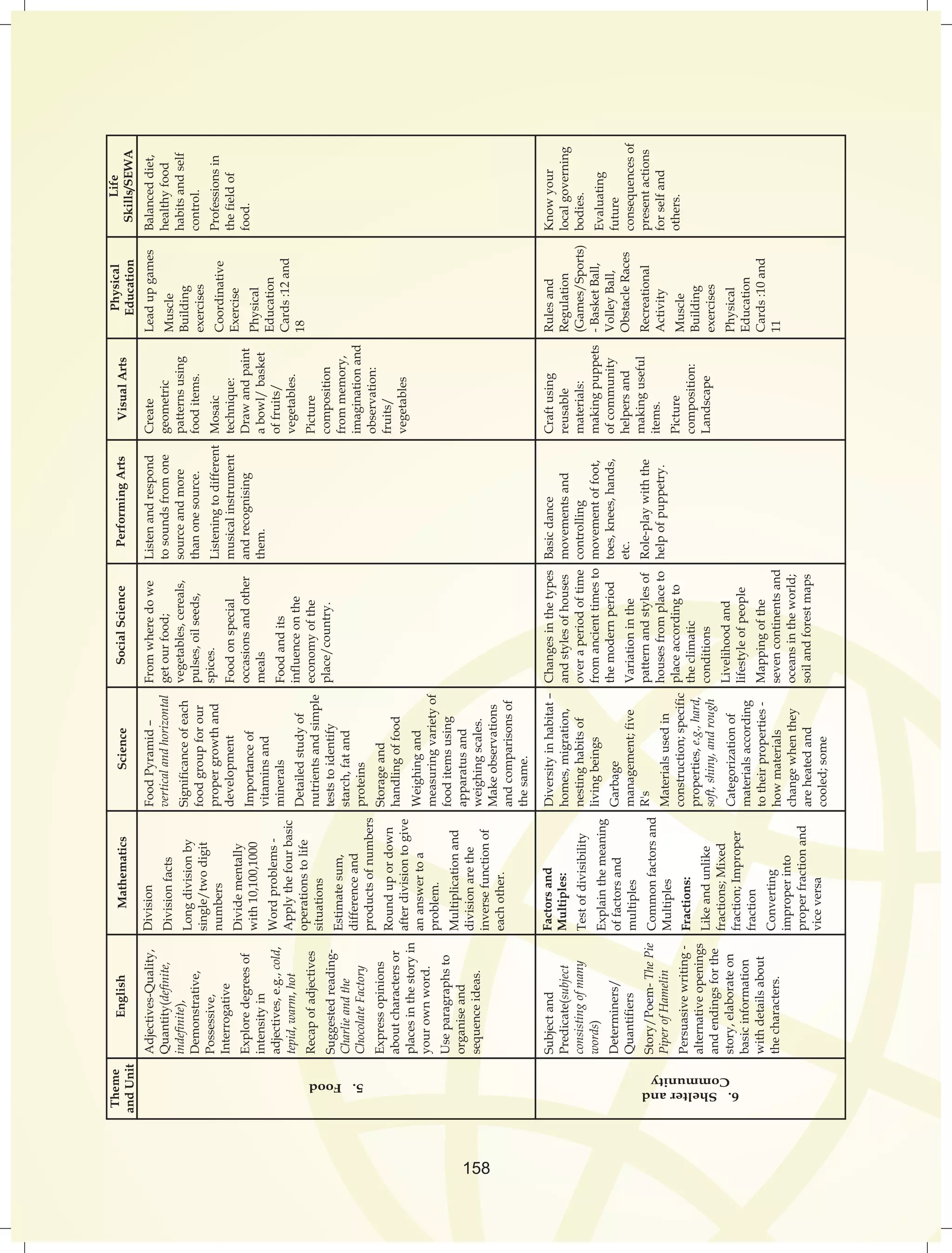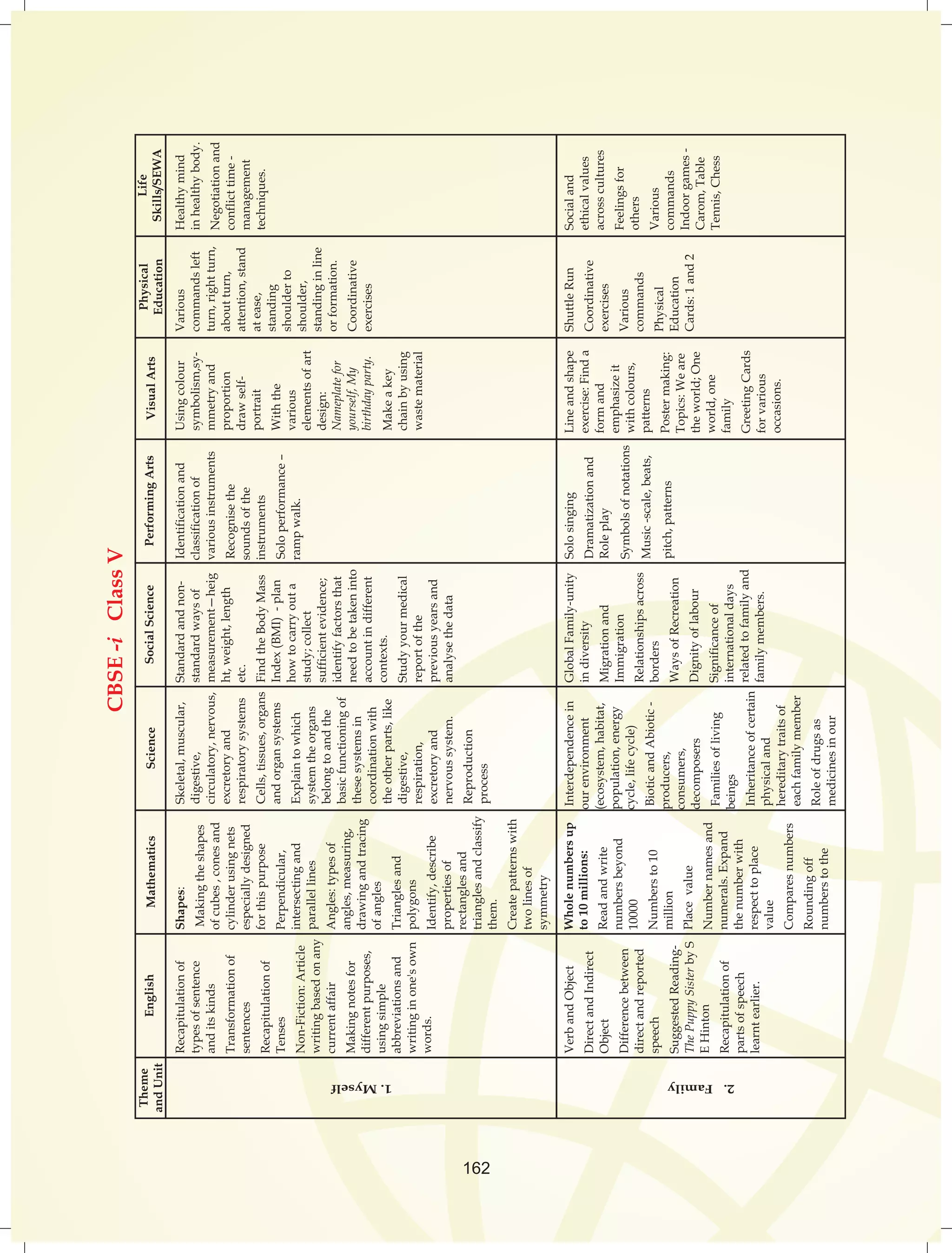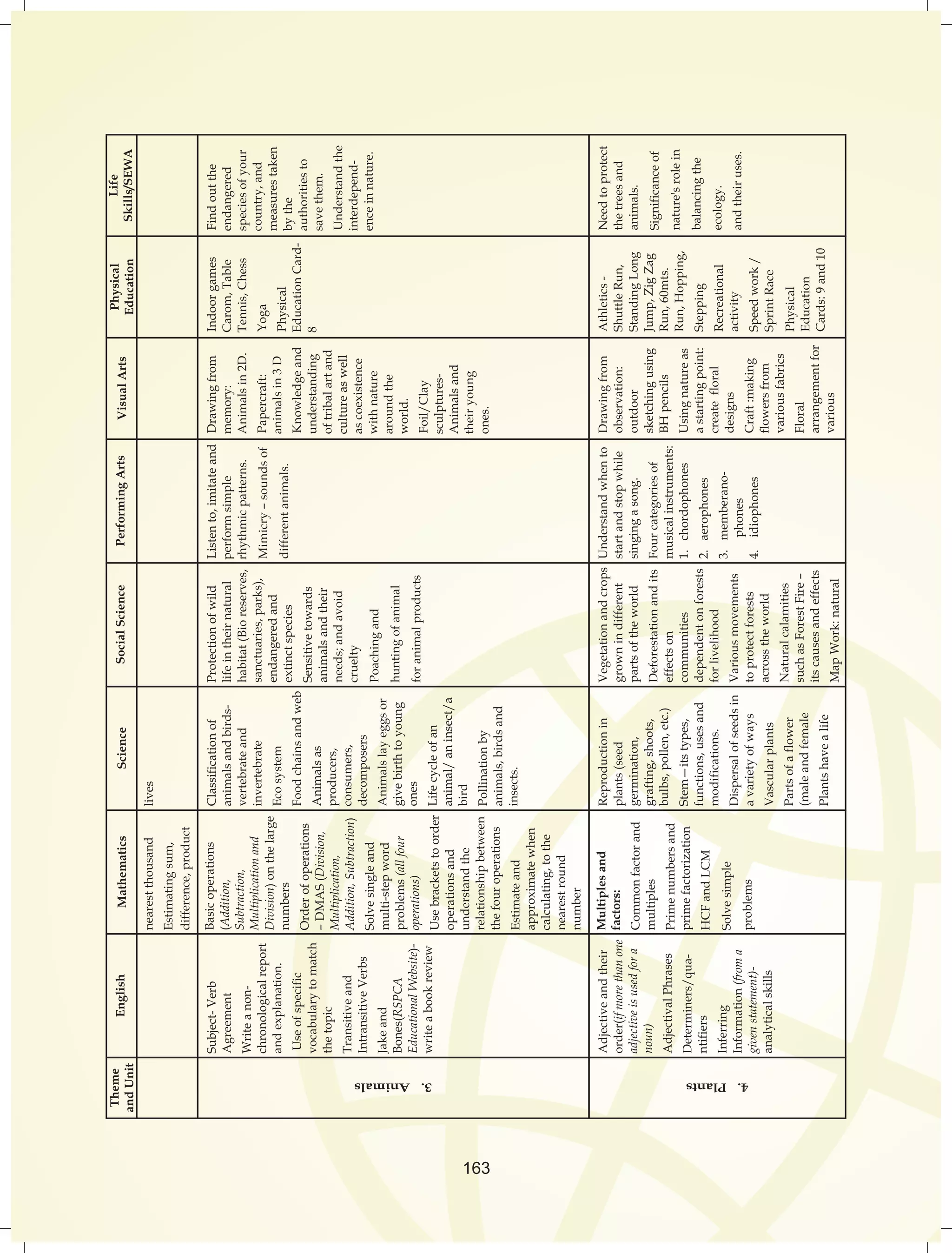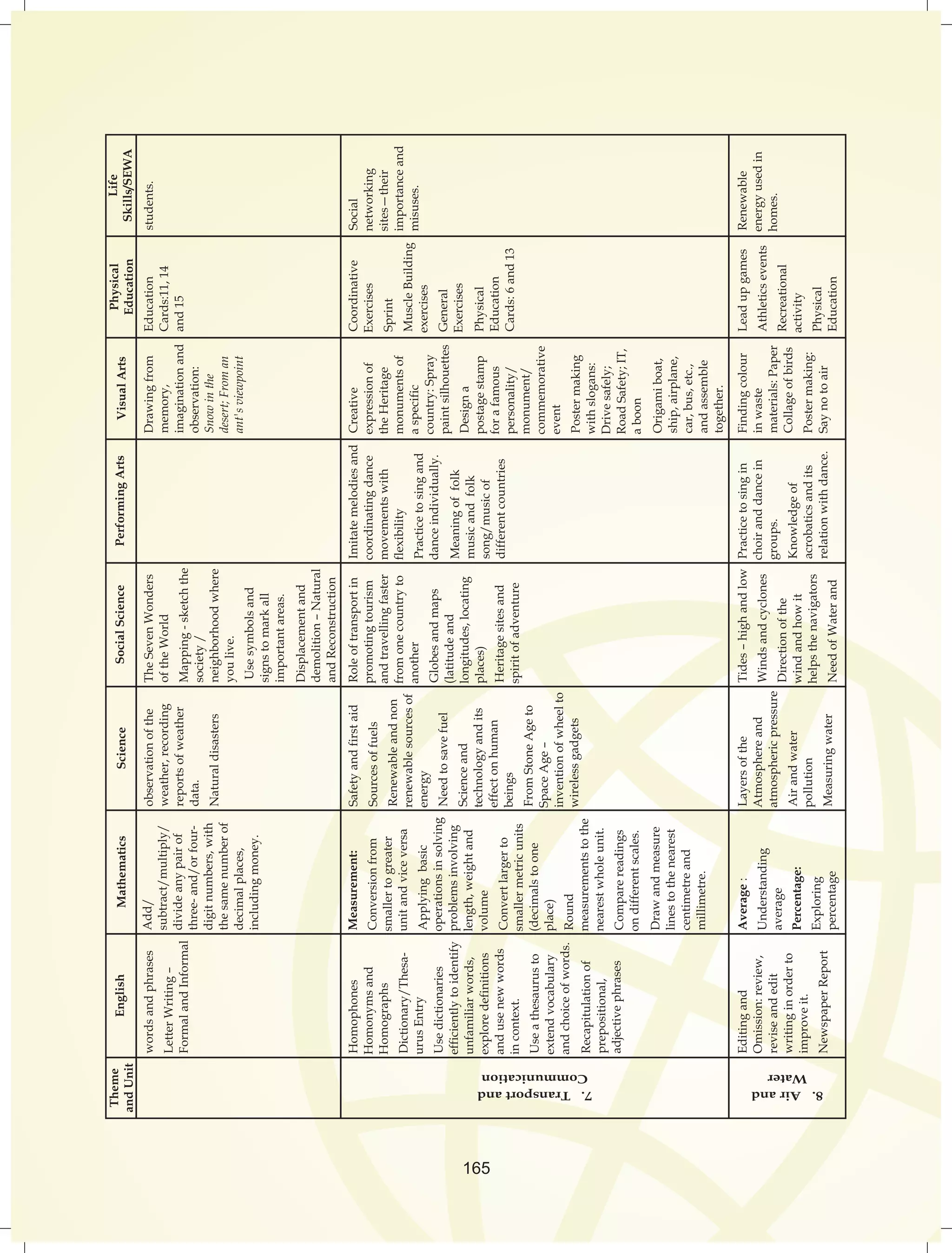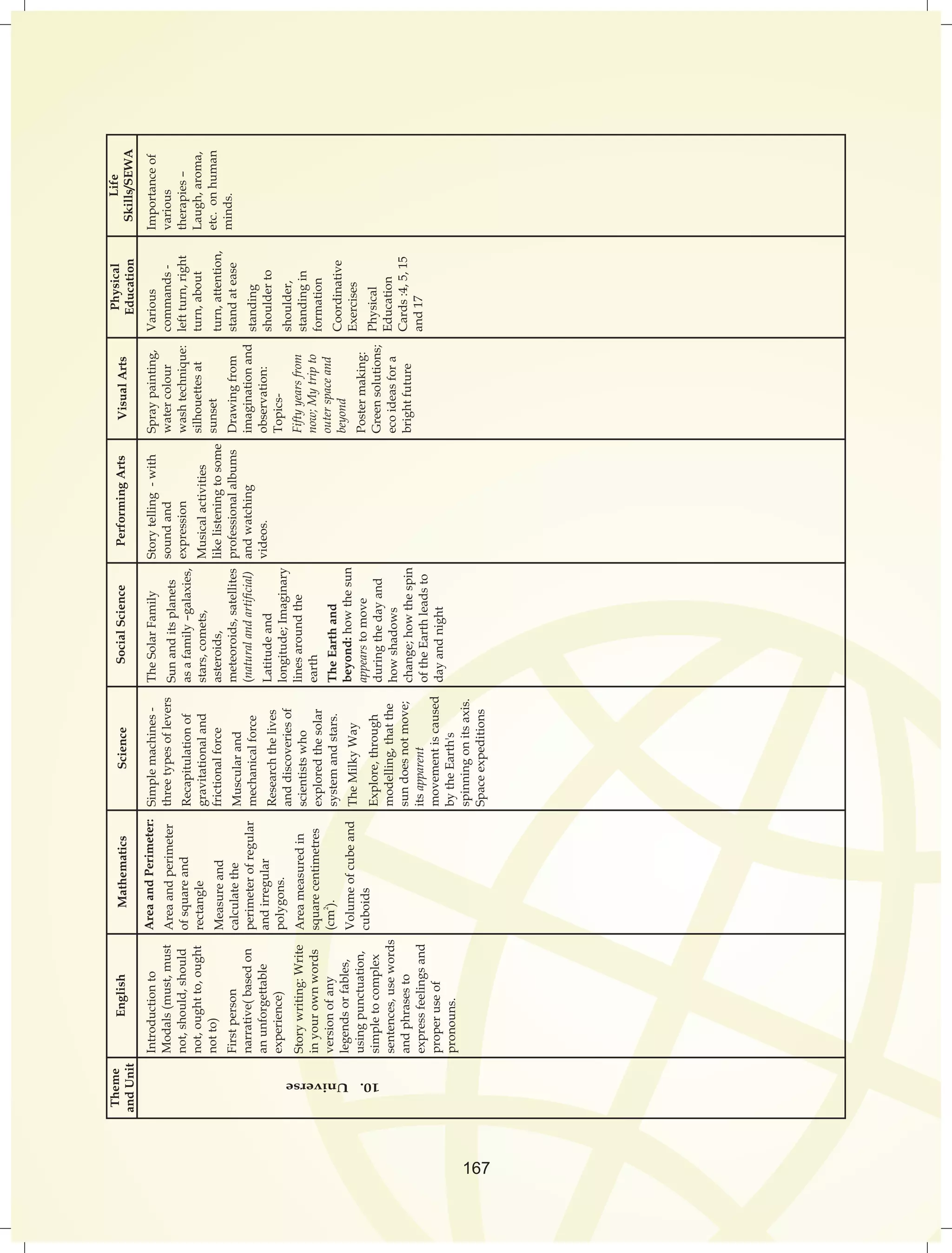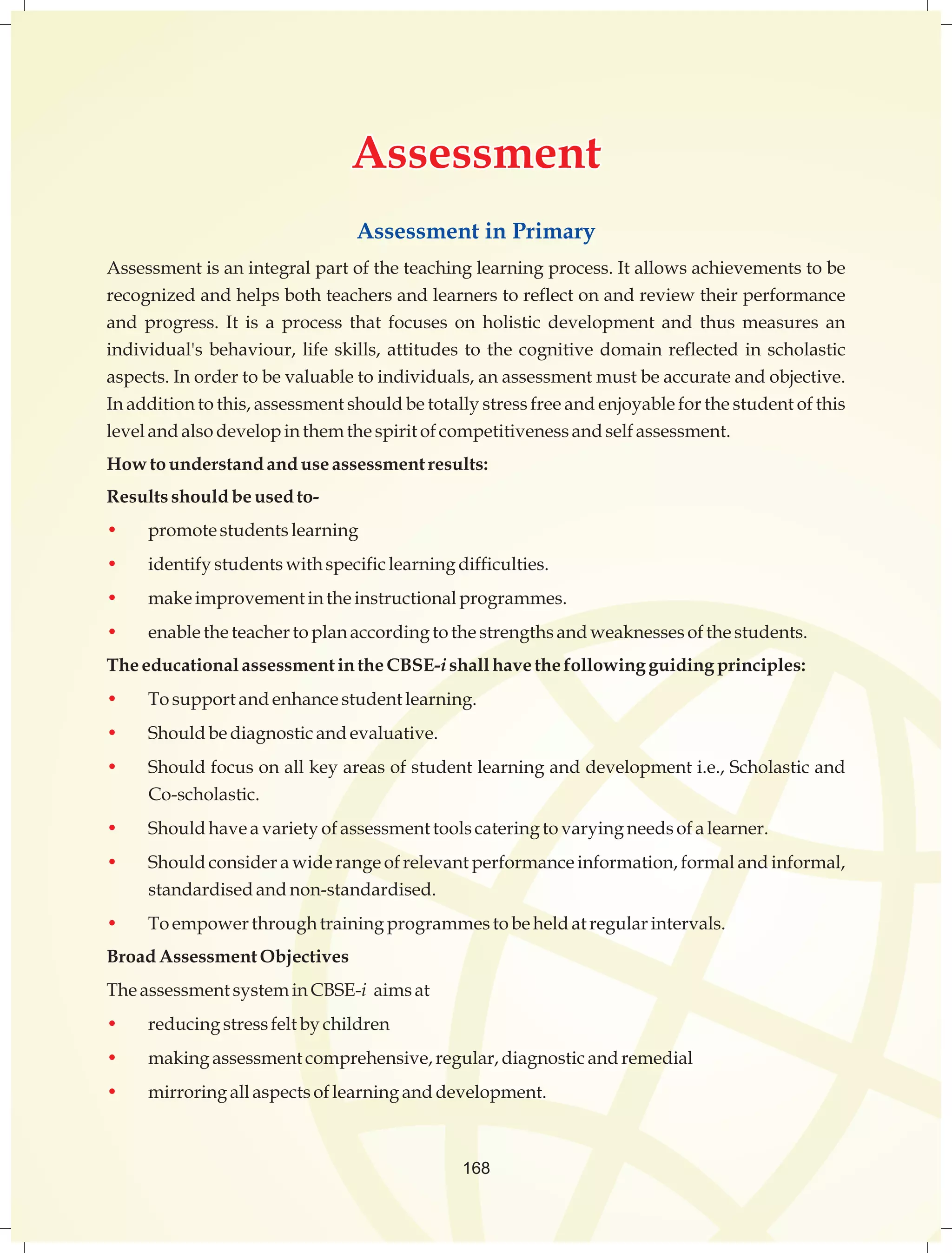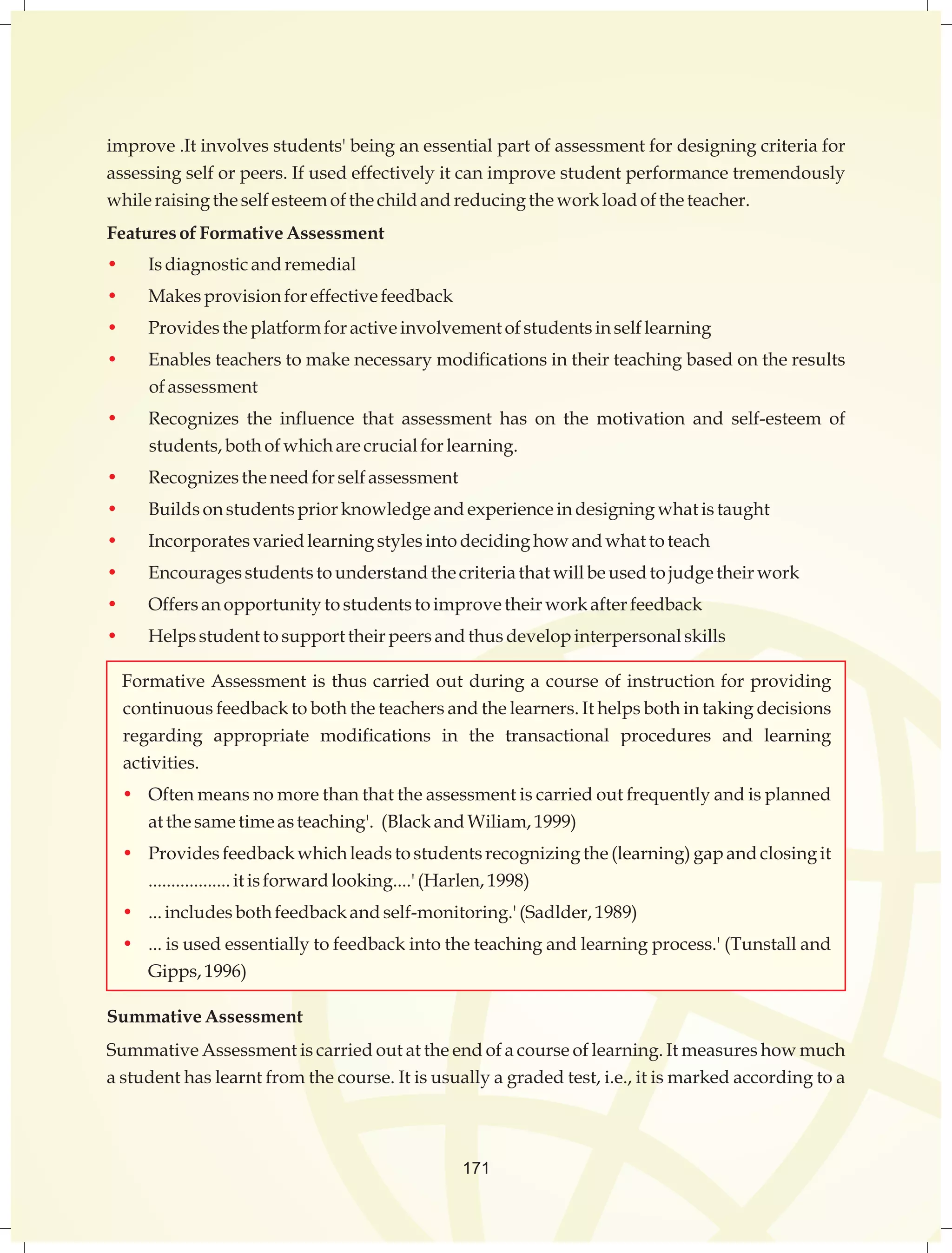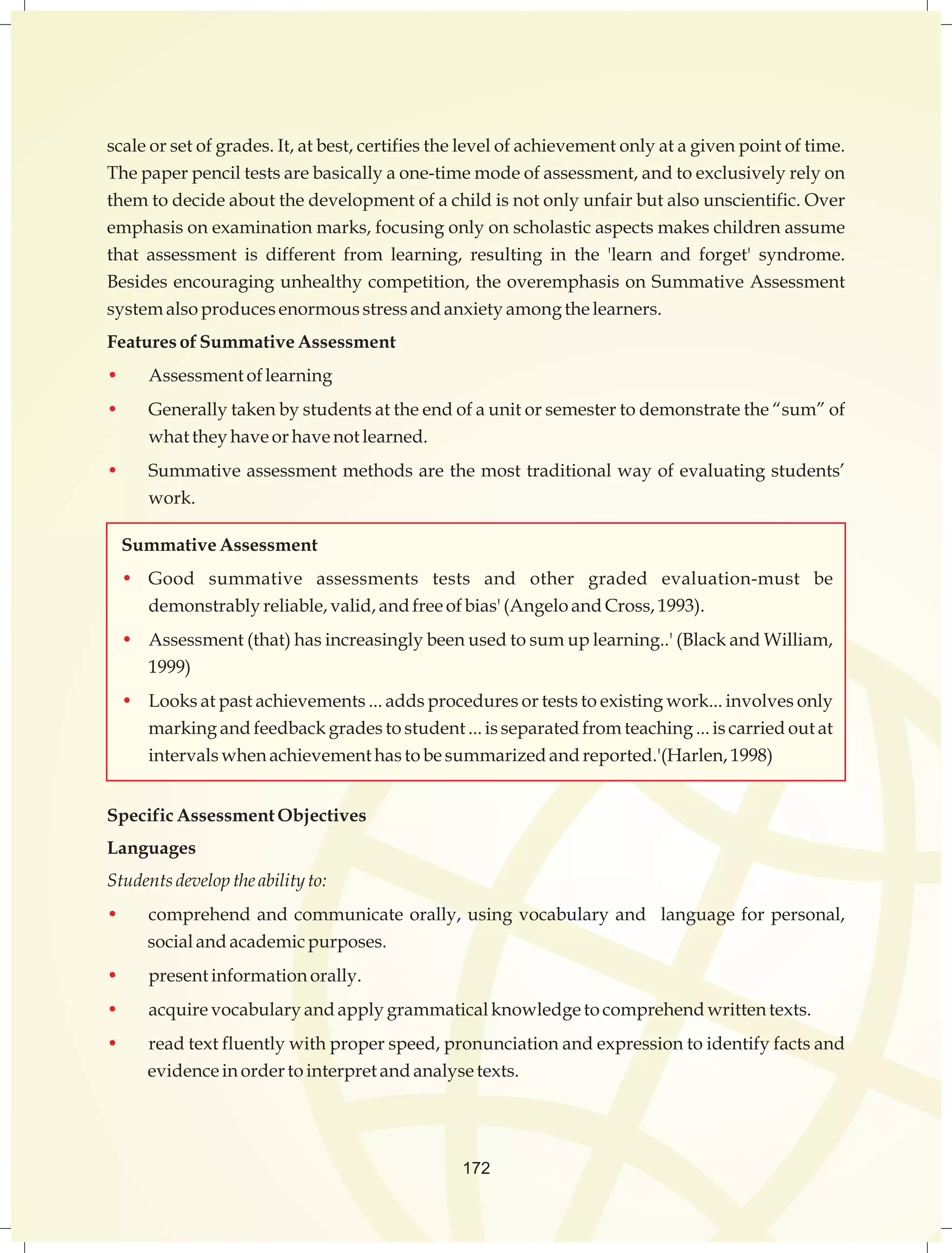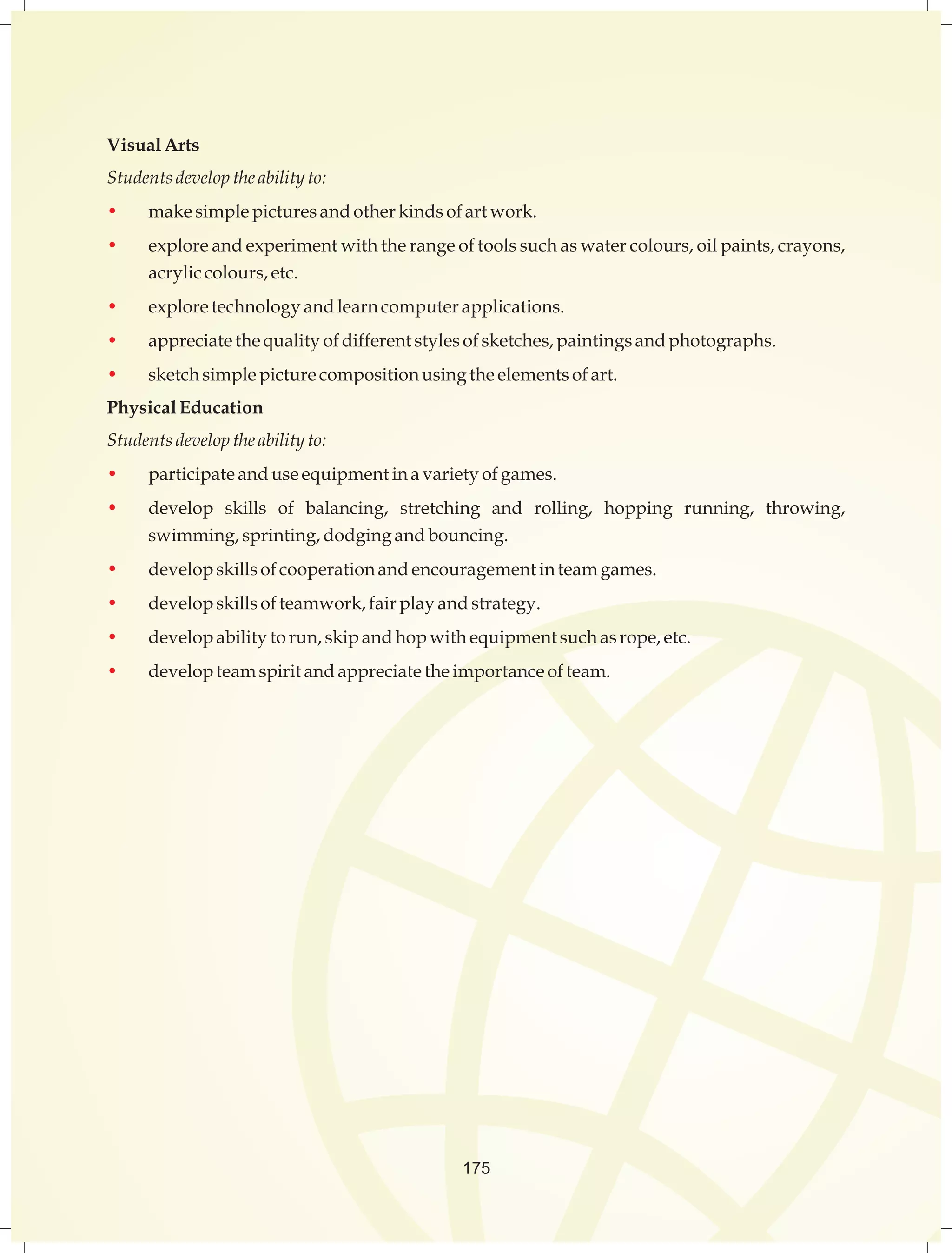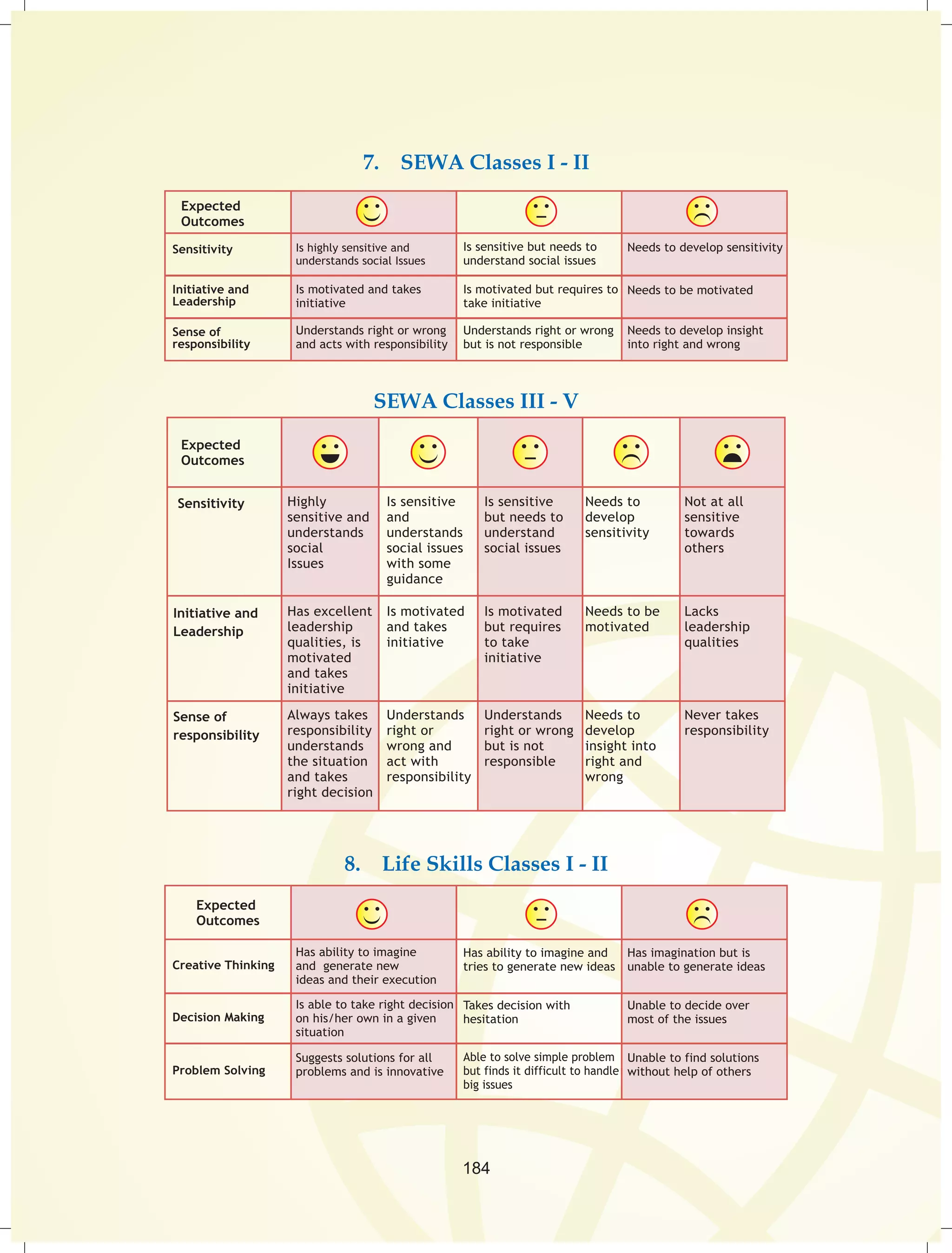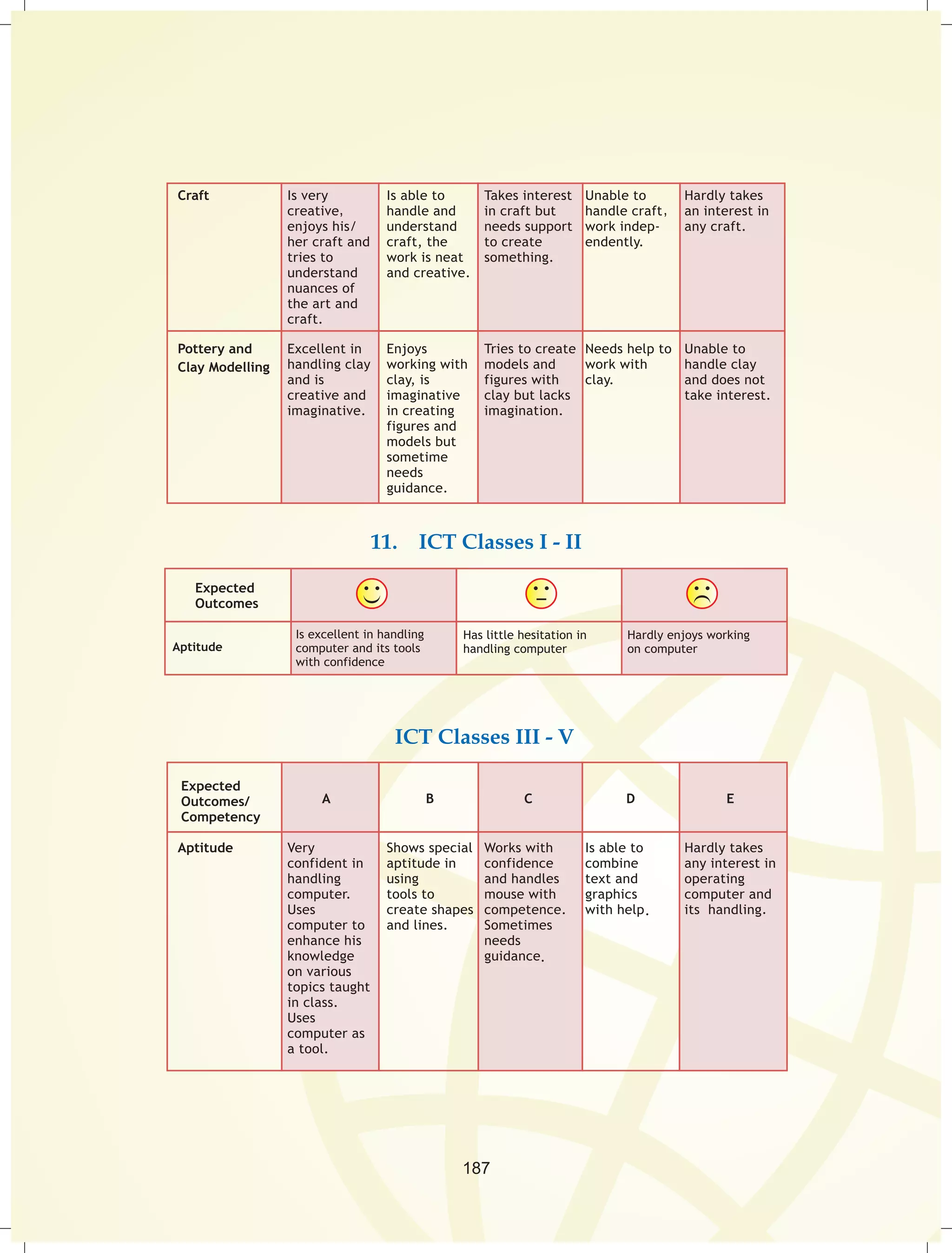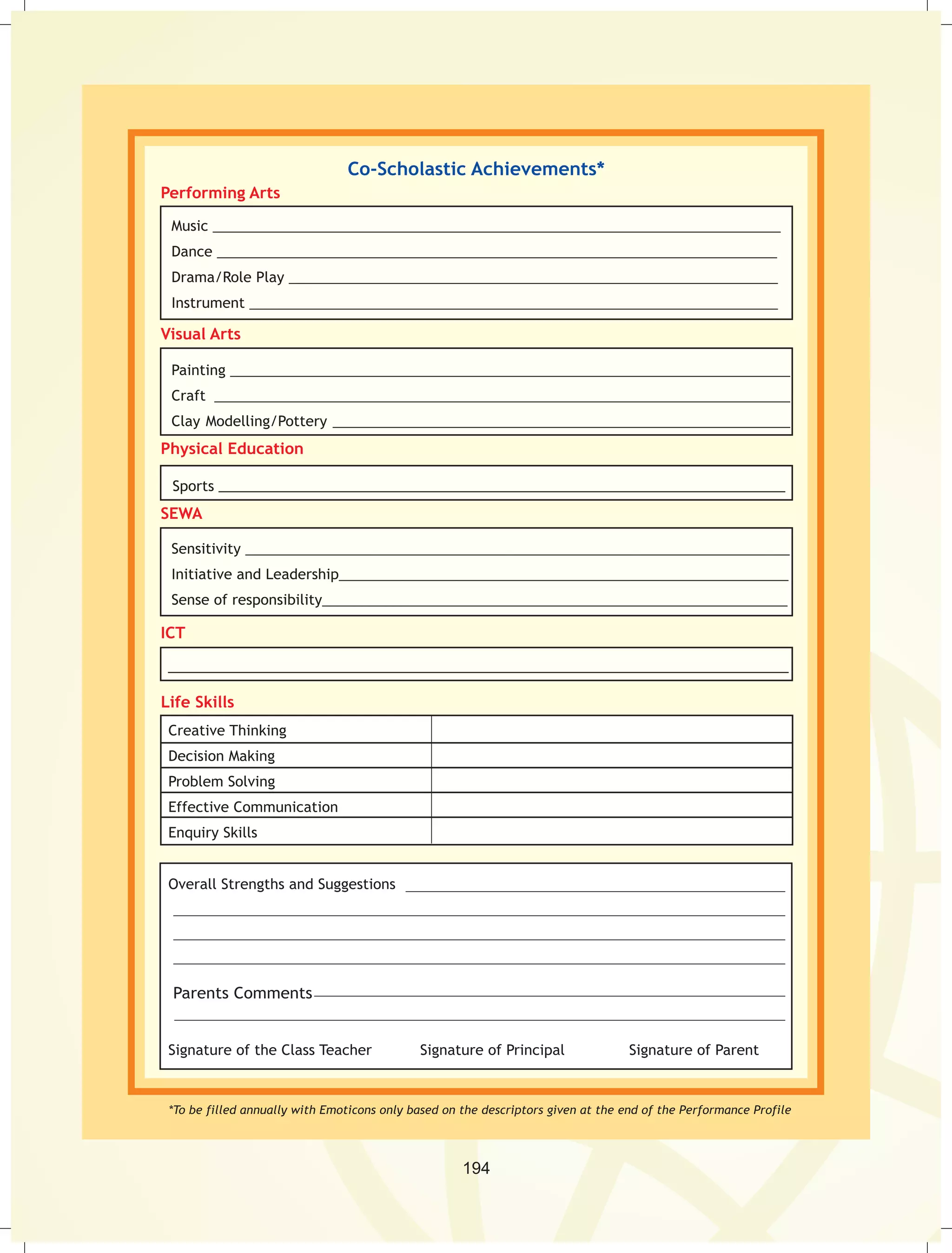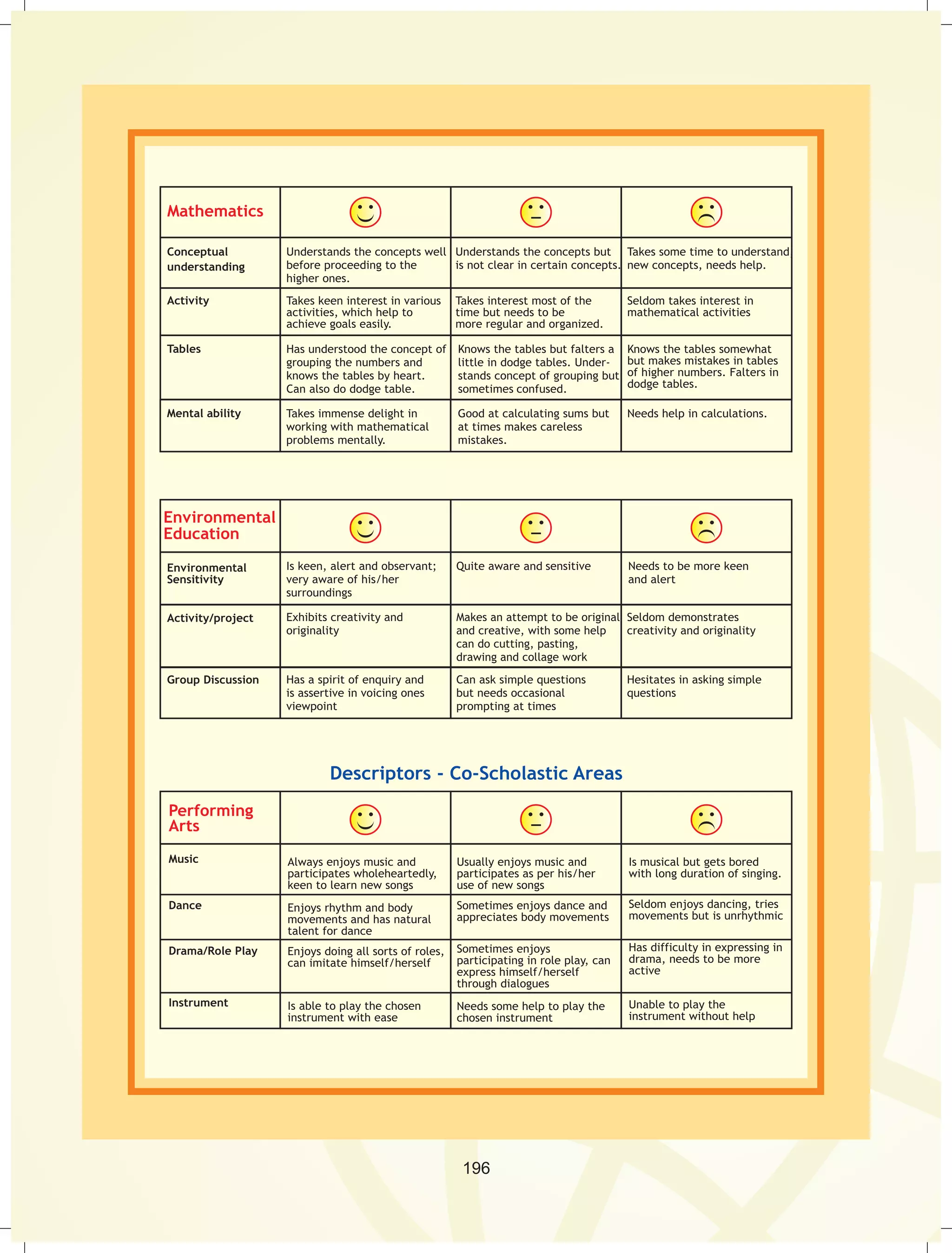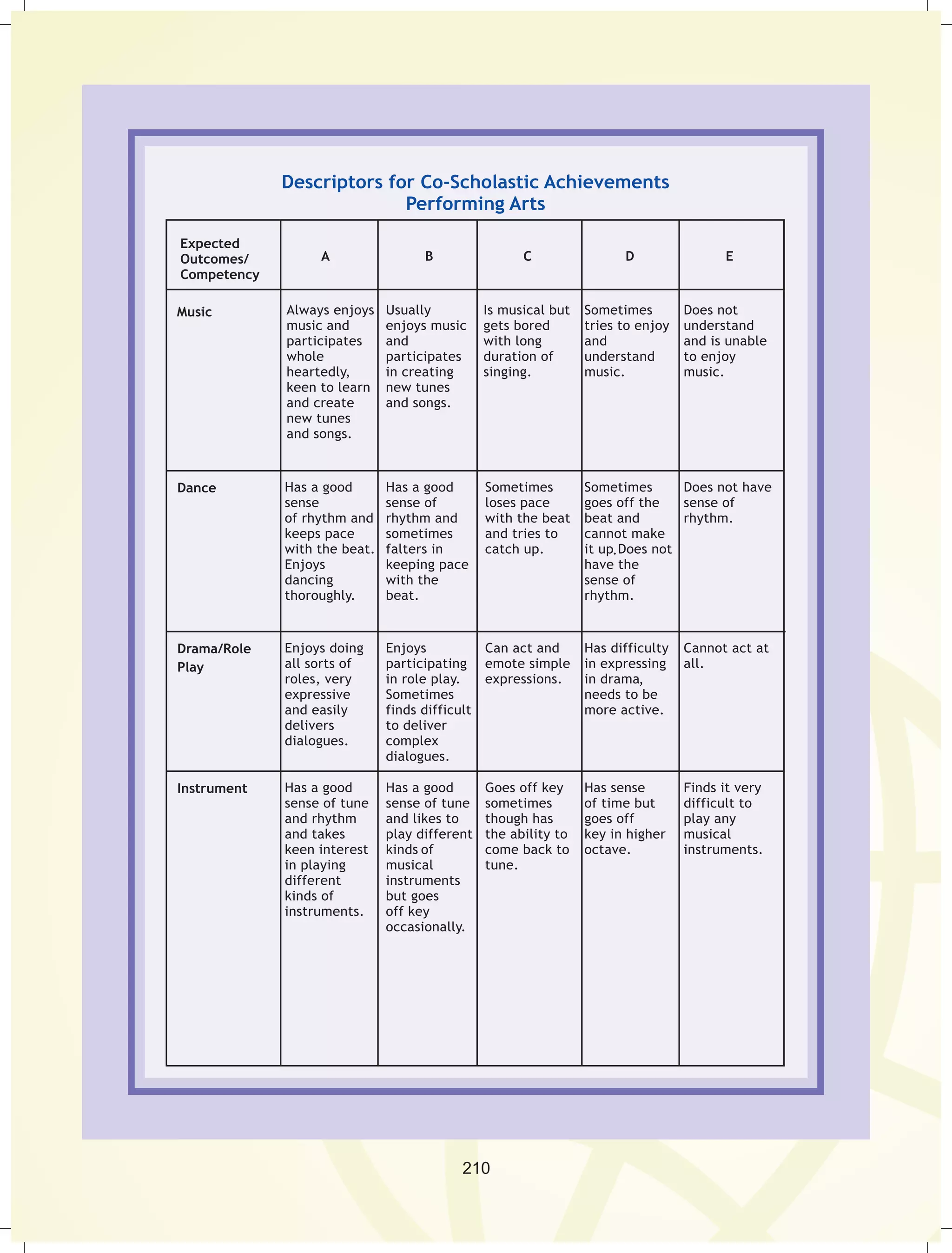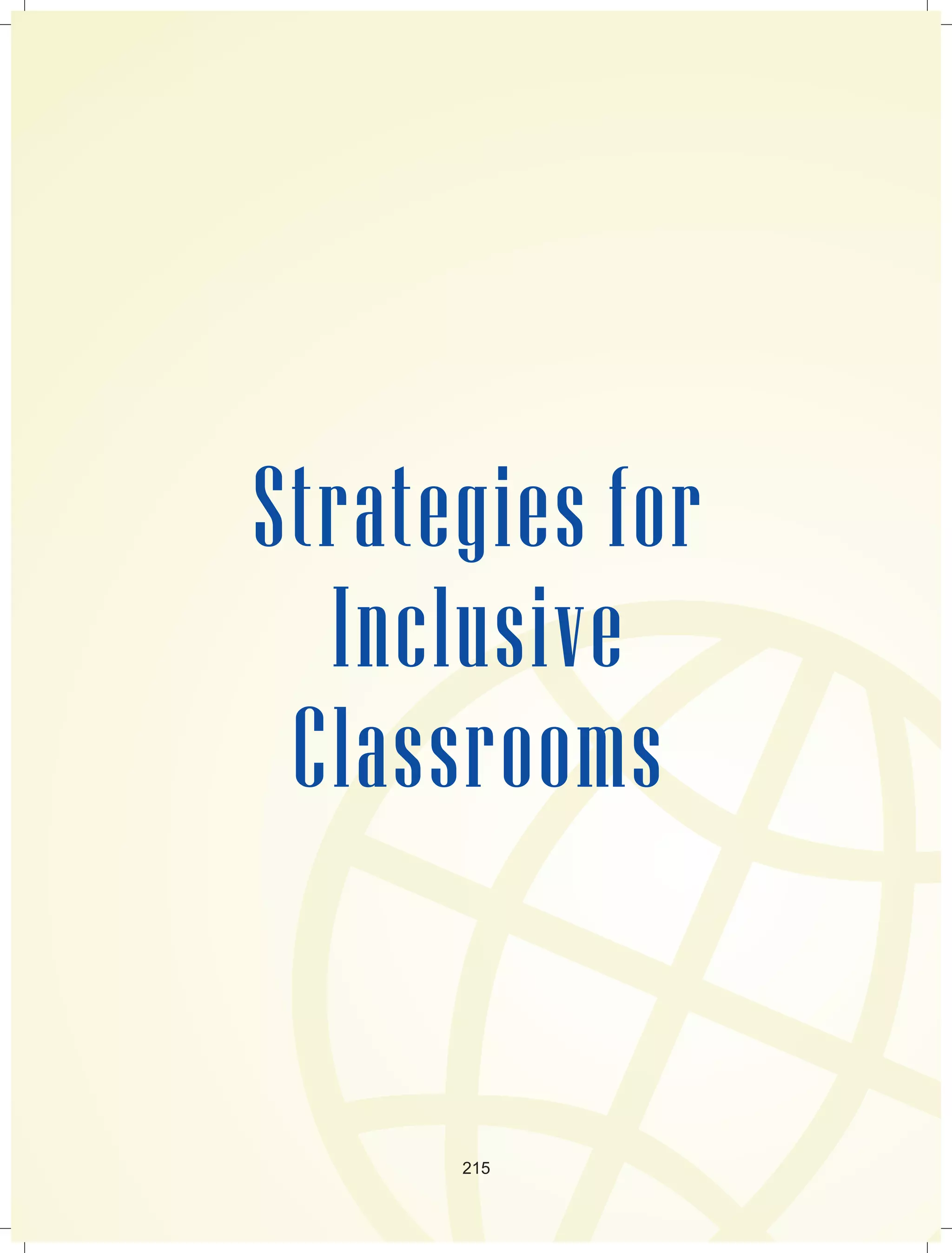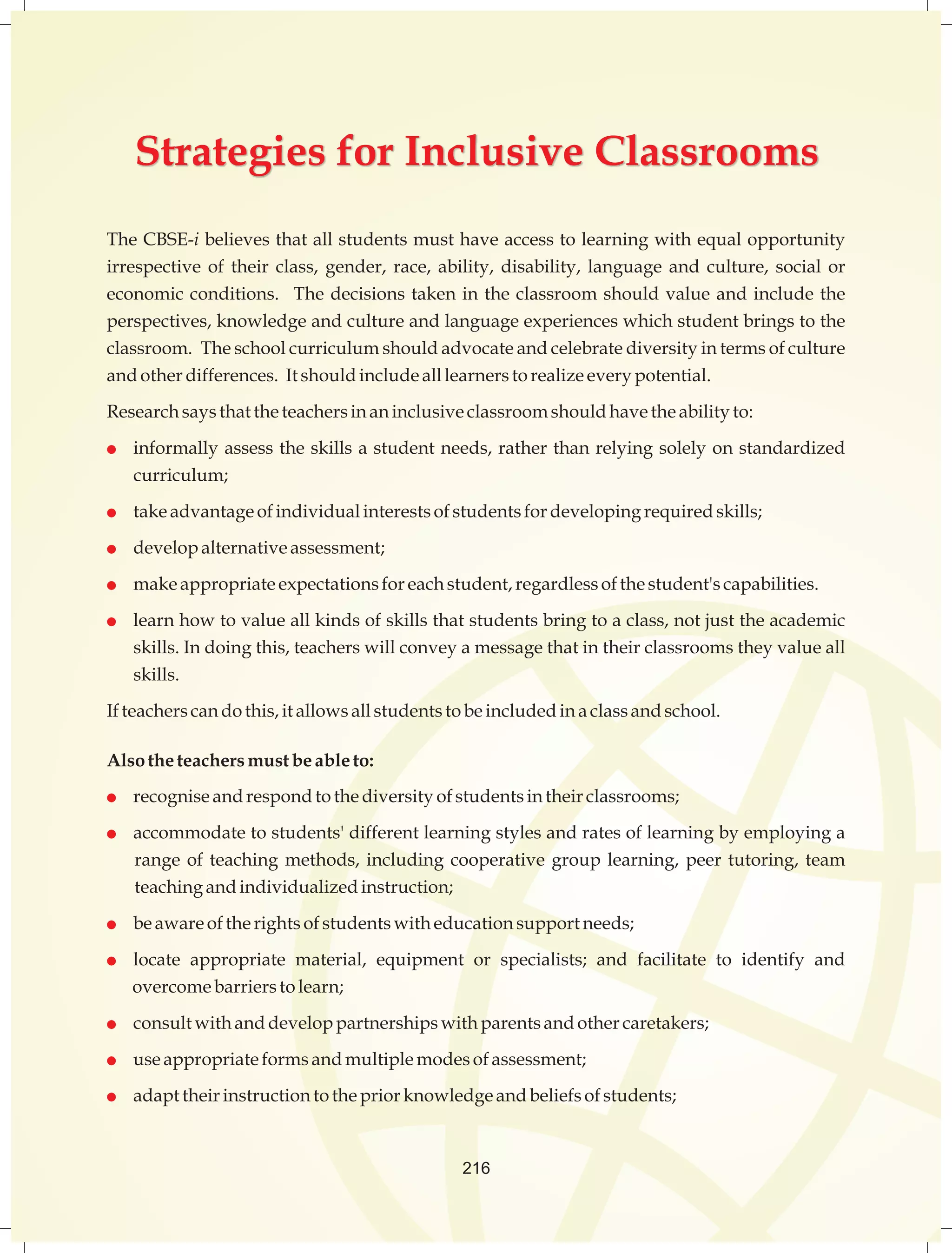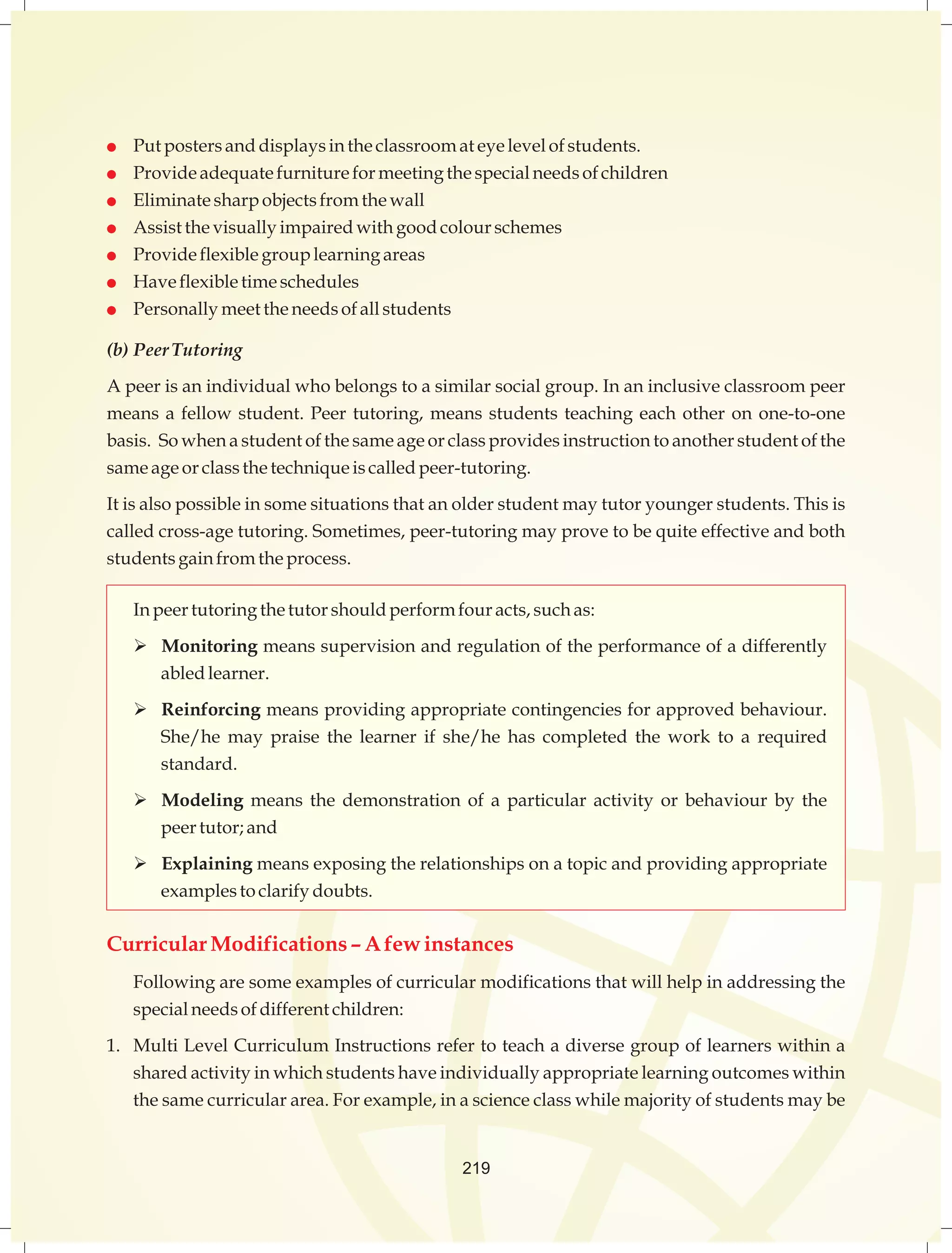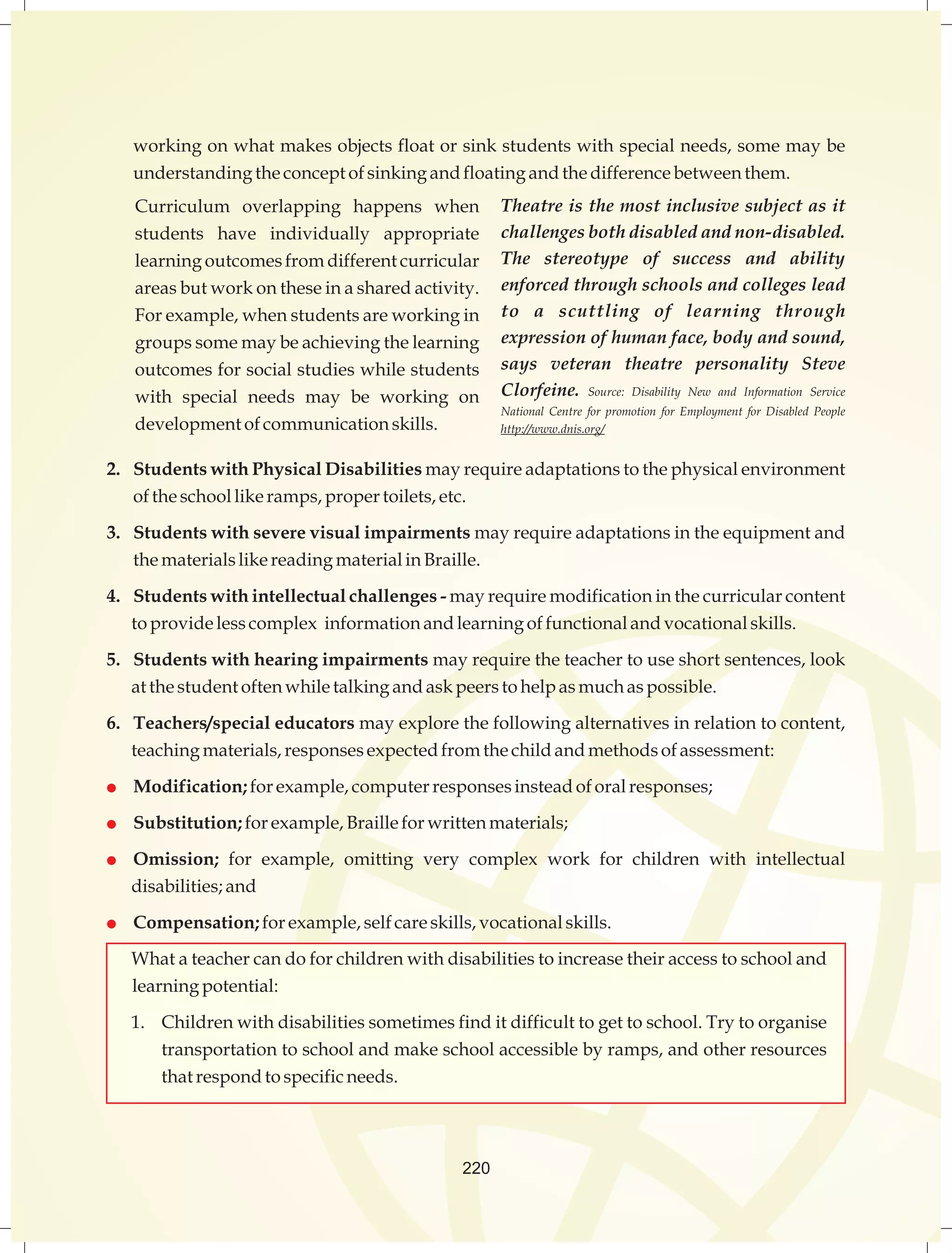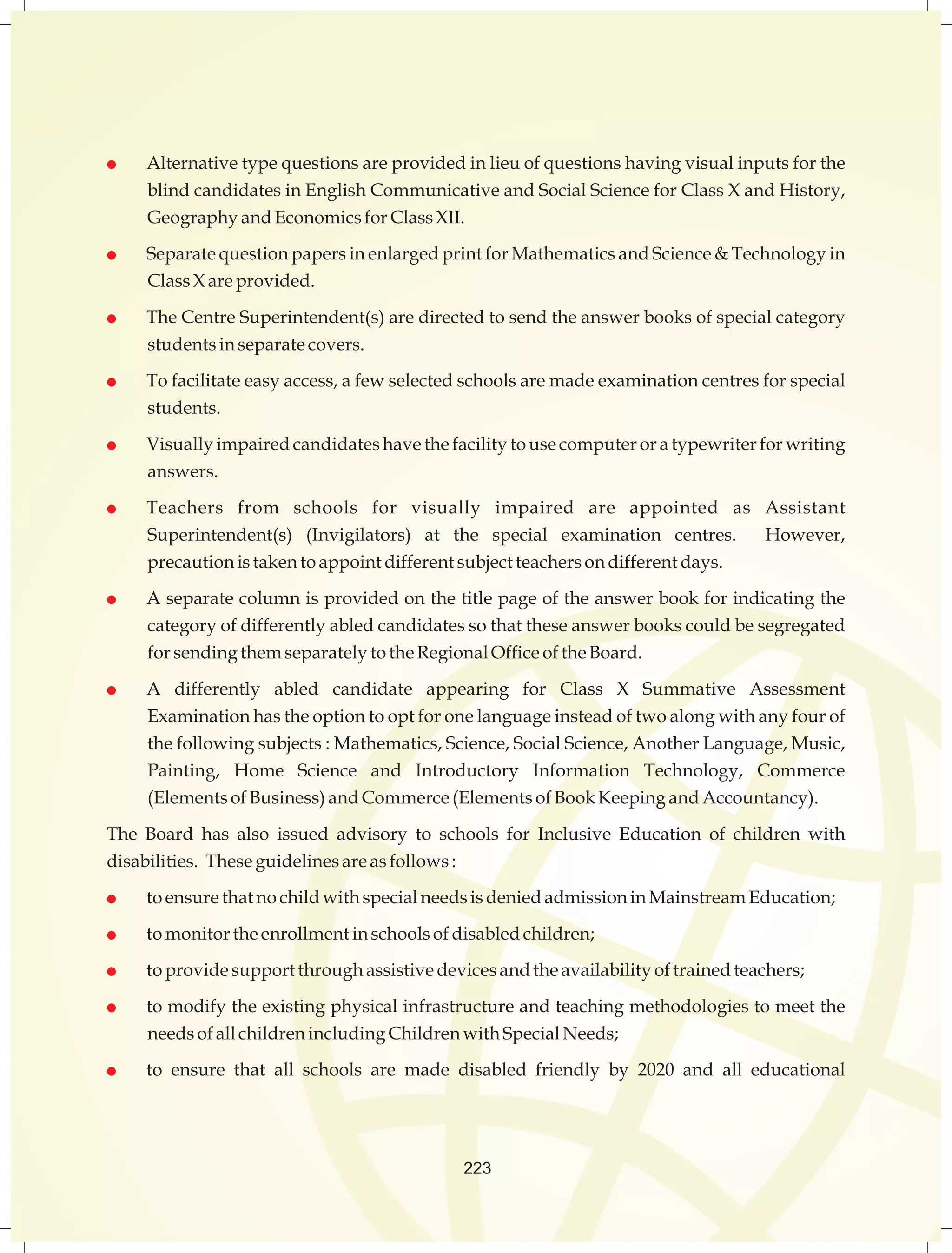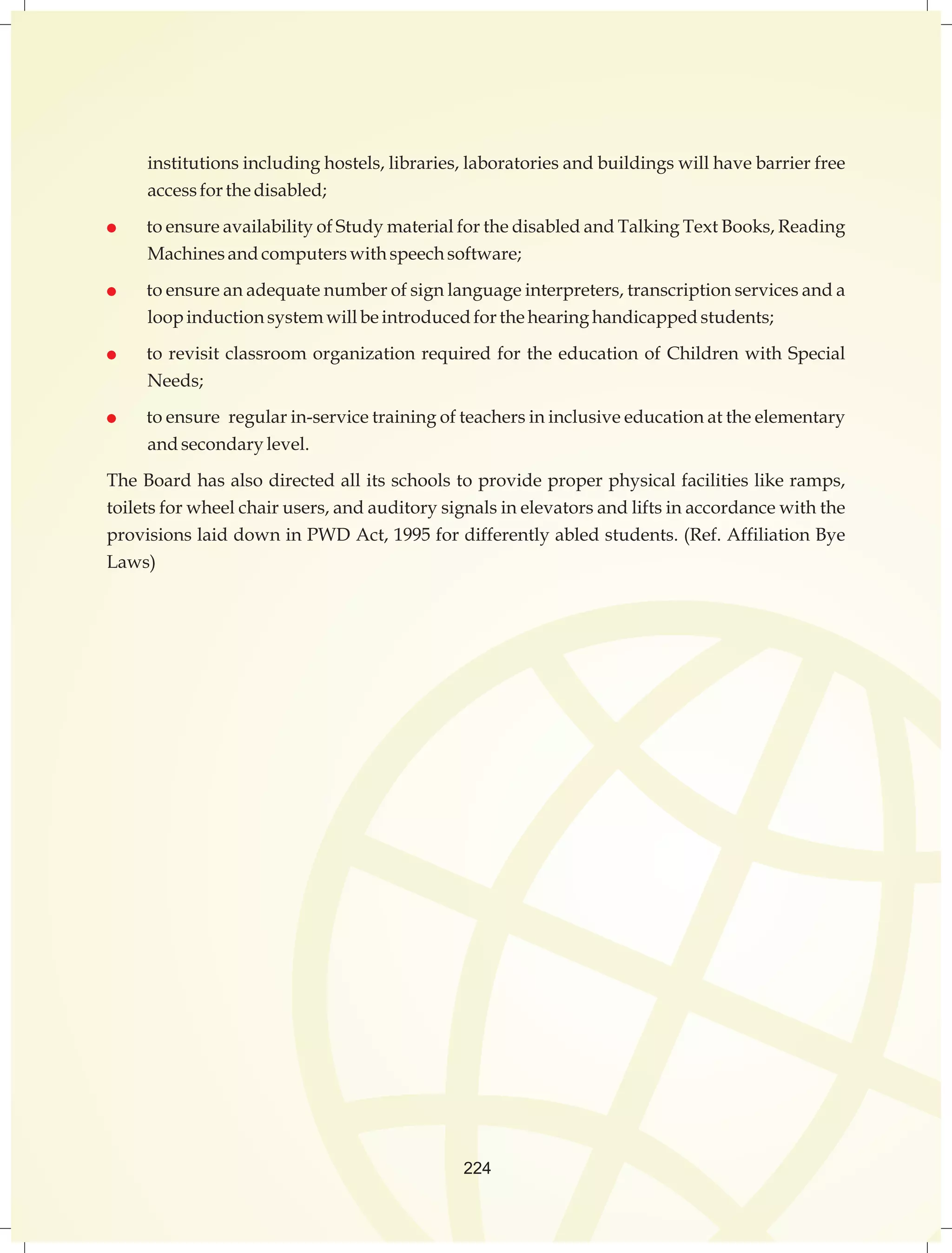This document provides an overview of the CBSE-i curriculum for primary classes. It discusses the introduction and expansion of the CBSE-i curriculum to additional classes over time. The curriculum aims to develop skills like communication, problem-solving, and global competencies in students. It also aims to nurture multiple intelligences and the core skills of perspective, social empowerment, life skills, and research.


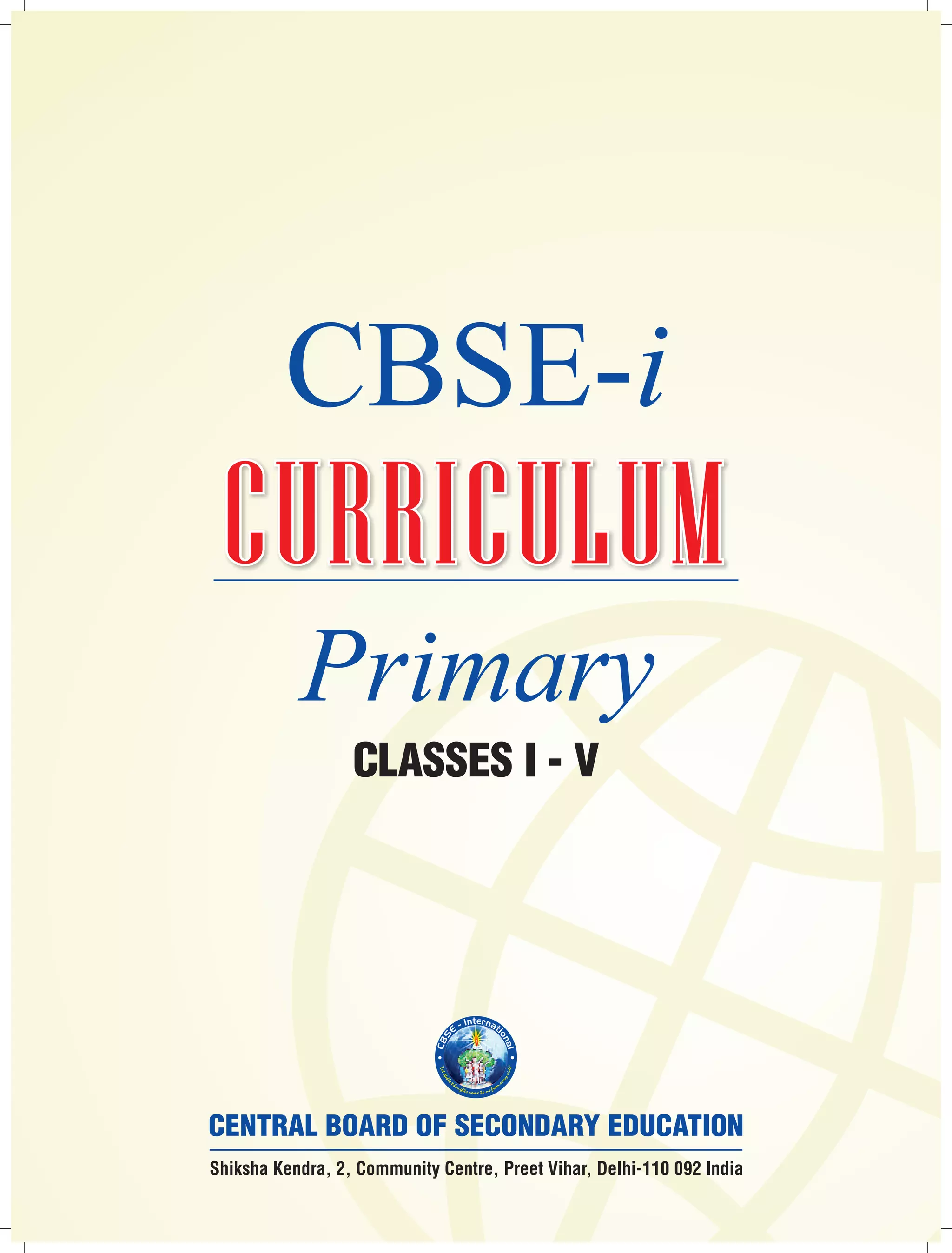
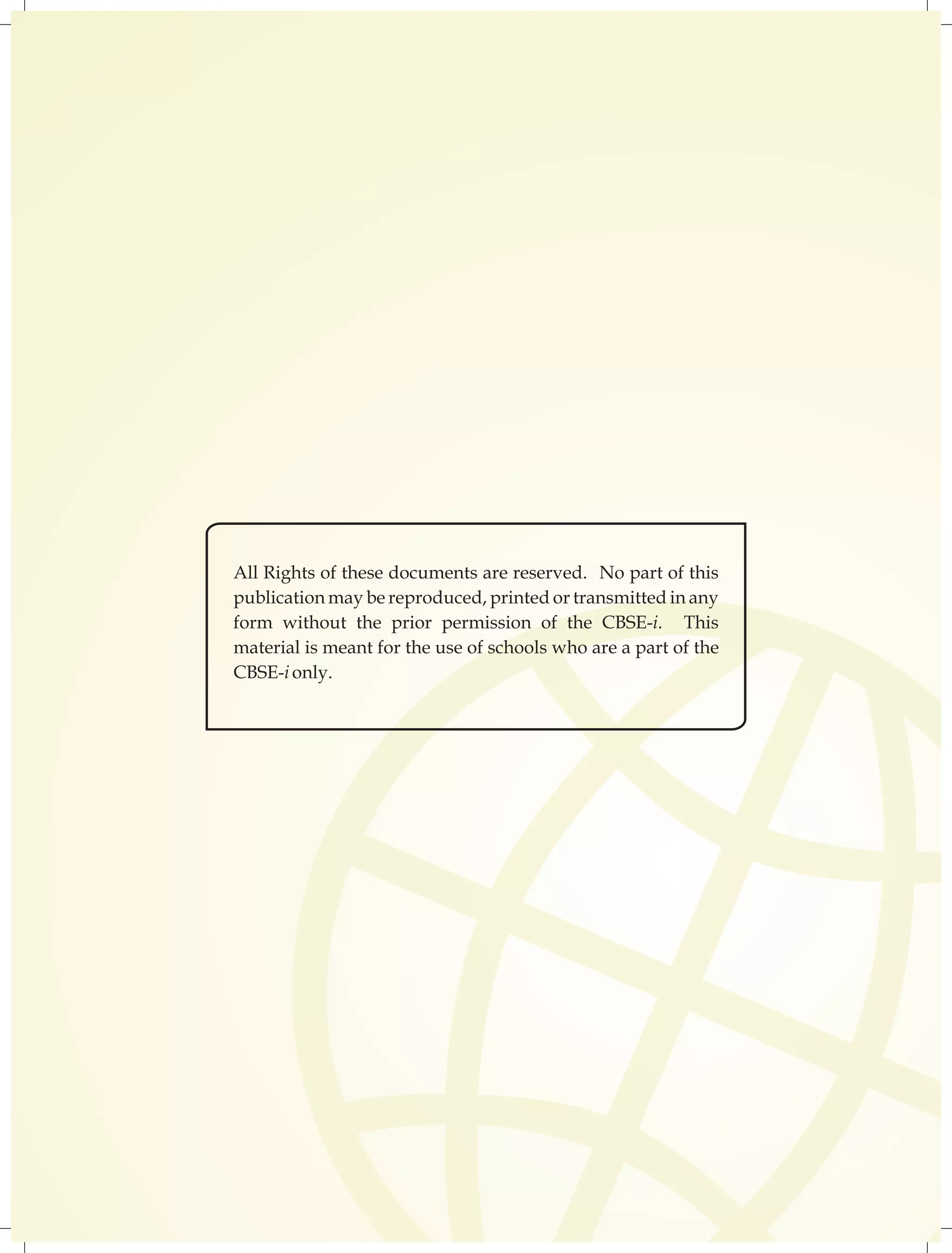


![THE CONSTITUTION OF INDIA
PREAMBLE
WE, THE PEOPLE OF INDIA, having solemnly resolved to constitute India into a 1
SOVEREIGN SOCIALIST SECULAR DEMOCRATIC REPUBLIC and to secure to all its citizens :
JUSTICE, social, economic and political;
LIBERTY of thought, expression, belief, faith and worship;
EQUALITY of status and of opportunity; and to promote among them all
FRATERNITY assuring the dignity of the individual and the 2 [unity and integrity of the Nation];
IN OUR CONSTITUENT ASSEMBLY this twenty-sixth day of November, 1949, do HEREBY
ADOPT, ENACT AND GIVE TO OURSELVES THIS CONSTITUTION.
1. Subs, by the Constitution (Forty-Second Amendment) Act. 1976, sec. 2, for "Sovereign Democratic Republic
2. Subs, by the Constitution (Forty-Second Amendment) Act. 1976, sec. 2, for "unity of the Nation (w.e.f. 3.1.1977)
THE CONSTITUTION OF INDIA
Chapter IV A
Fundamental Duties
(w.e.f. 3.1.1977)
ARTICLE 51A
Fundamental Duties - It shall be the duty of every citizen of India-
(a) to abide by the Constitution and respect its ideals and institutions, the National Flag and the
National Anthem;
(b) to cherish and follow the noble ideals which inspired our national struggle for freedom;
(c) to uphold and protect the sovereignty, unity and integrity of India;
(d) to defend the country and render national service when called upon to do so;
(e) to promote harmony and the spirit of common brotherhood amongst all the people of India
transcending religious, linguistic and regional or sectional diversities; to renounce practices
derogatory to the dignity of women;
(f) to value and preserve the rich heritage of our composite culture;
(g) to protect and improve the natural environment including forests, lakes, rivers, wild life and to
have compassion for living creatures;
(h) to develop the scientific temper, humanism and the spirit of inquiry and reform;
(i) to safeguard public property and to abjure violence;
(j) to strive towards excellence in all spheres of individual and collective activity so that the nation
constantly rises to higher levels of endeavour and achievement.](https://image.slidesharecdn.com/cbse-141216024836-conversion-gate01/75/Cbse-7-2048.jpg)
![Hkkjr dk lafo/ku
mísf'kdk
ge] Hkkjr ds yksx] Hkkjr dks ,d ^¹lEiw.kZ izHkqRo&laiUu lektoknh iaFkfujis{k yksdra=kkRed x.kjkT;º cukus ds fy,] rFkk
mlds leLr ukxfjdksa dks%
lkekftd] vkfFkZd vkSj jktuSfrd U;k;]
fopkj] vfHkO;fDr] fo'okl] /eZ
vkSj mikluk dh Lora=krk]
izfr"Bk vkSj volj dh lerk
izkIr djkus ds fy,] rFkk mu lc esa] O;fDr dh xfjek vkSj 2 ¹jk"Vª dh ,drk vkSj v[k.Mrkº lqfuf'pr
djus okyh ca/qrk c<+kus ds fy, n`<+ladYi gksdj viuh bl lafo/ku lHkk esa vkt rkjh[k 26 uoEcj] 1949 bZñ dks ,rn~}kjk bl
lafo/ku dks vaxhÑr] vf/fu;fer vkSj vkRekfiZr djrs gSaA
1- lafo/ku (c;kyhloka la'kks/u) vf/fu;e] 1976 dh /kjk 2 }kjk (3-1-1977) ls ¶izHkqRo&laiUu yksdra=kkRed x.kjkT;¸ ds LFkku ij
izfrLFkkfirA
2- lafo/ku (c;kyhloka la'kks/u) vf/fu;e] 1976 dh /kjk 2 }kjk (3-1-1977 ls)] ¶jk"Vª dh ,drk¸ ds LFkku ij izfrLFkkfirA
Hkkx 4 d
ewy dÙkZO;
51 d- ewy dÙkZO; & Hkkjr ds izR;sd ukxfjd dk ;g dÙkZO; gksxk fd og &
(d) lafo/ku dk ikyu djs vkSj mlds vkn'kksZa] laLFkkvksa] jk"Vªèot vkSj jk"Vªxku dk vknj djs_
([k) Lora=krk ds fy, gekjs jk"Vªh; vkanksyu dks izsfjr djus okys mPp vkn'kksZa dks ân; esa latks, j[ks vkSj mudk ikyu djs_
(x) Hkkjr dh izHkqrk] ,drk vkSj v[kaMrk dh j{kk djs vkSj mls v{kq..k j[ks_
(?k) ns'k dh j{kk djs vkSj vkg~oku fd, tkus ij jk"Vª dh lsok djs_
(Ä) Hkkjr ds lHkh yksxksa esa lejlrk vkSj leku Hkzkr`Ro dh Hkkouk dk fuekZ.k djs tks /eZ] Hkk"kk vkSj izns'k ;k oxZ ij
vk/kfjr lHkh HksnHkko ls ijs gksa] ,slh izFkkvksa dk R;kx djs tks fL=k;ksa ds lEeku ds fo#¼ gSa_
(p) gekjh lkekfld laLÑfr dh xkSjo'kkyh ijaijk dk egÙo le>s vkSj mldk ijh{k.k djs_
(N) izkÑfrd i;kZoj.k dh ftlds varxZr ou] >hy] unh] vkSj oU; tho gSa] j{kk djs vkSj mldk lao/Zu djs rFkk izkf.kek=k
ds izfr n;kHkko j[ks_
(t) oSKkfud n`f"Vdks.k] ekuookn vkSj KkuktZu rFkk lq/kj dh Hkkouk dk fodkl djs_
(>) lkoZtfud laifÙk dks lqjf{kr j[ks vkSj fgalk ls nwj jgs_
(×k) O;fDrxr vkSj lkewfgd xfrfof/;ksa ds lHkh {ks=kksa esa mRd"kZ dh vksj c<+us dk lrr iz;kl djs ftlls jk"Vª fujarj c<+rs
gq, iz;Ru vkSj miyfC/ dh ubZ mapkb;ksa dks Nw ysA](https://image.slidesharecdn.com/cbse-141216024836-conversion-gate01/75/Cbse-8-2048.jpg)

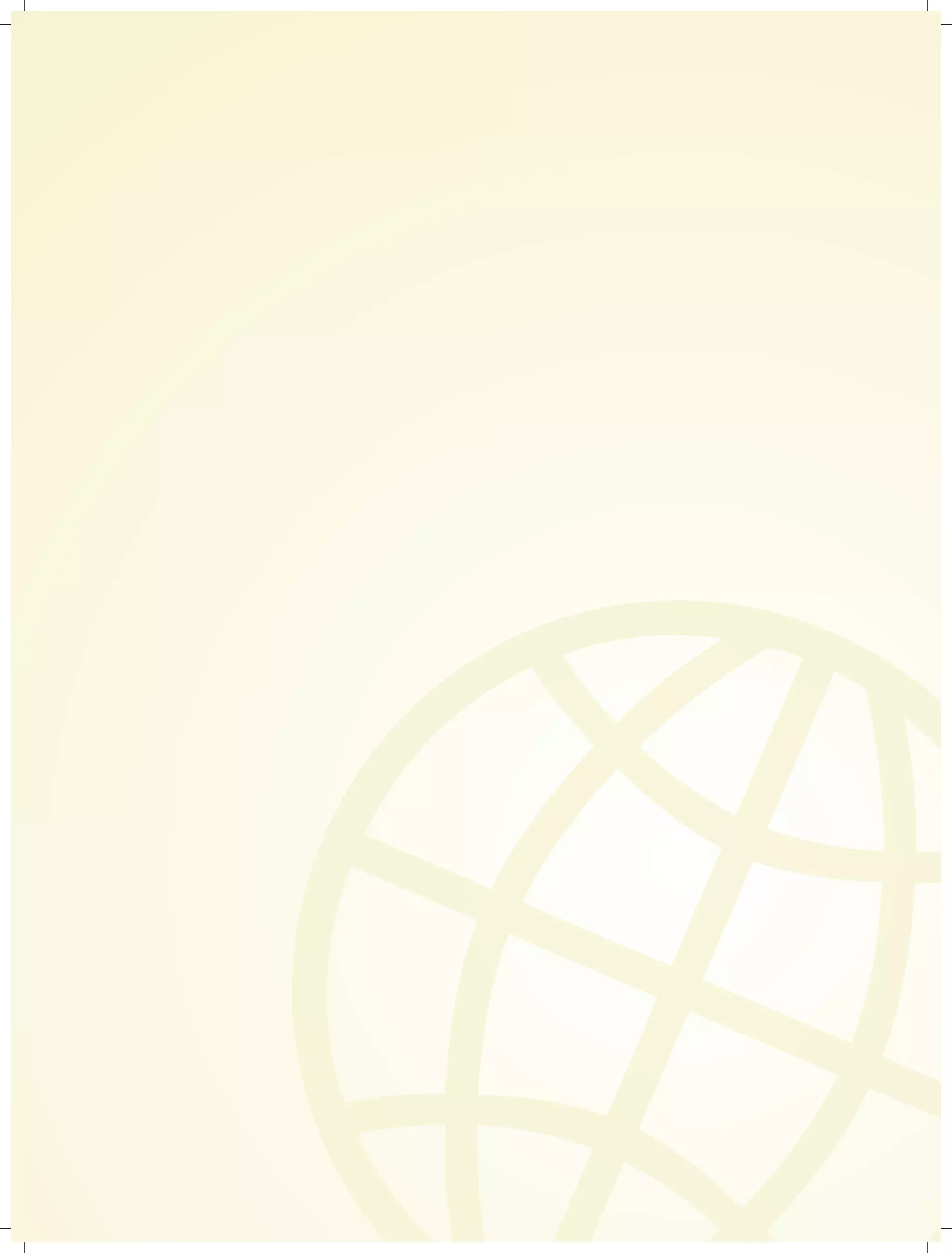

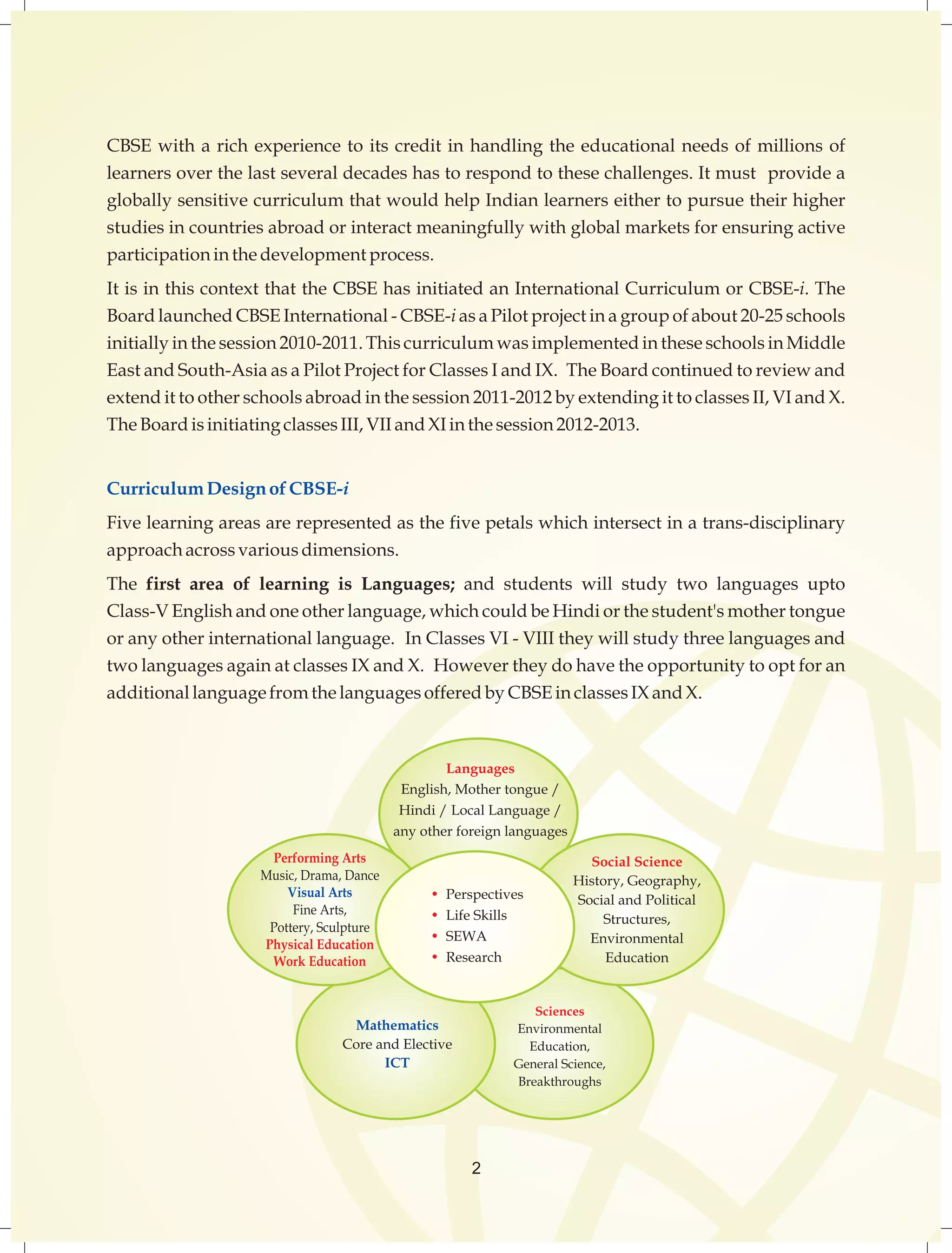


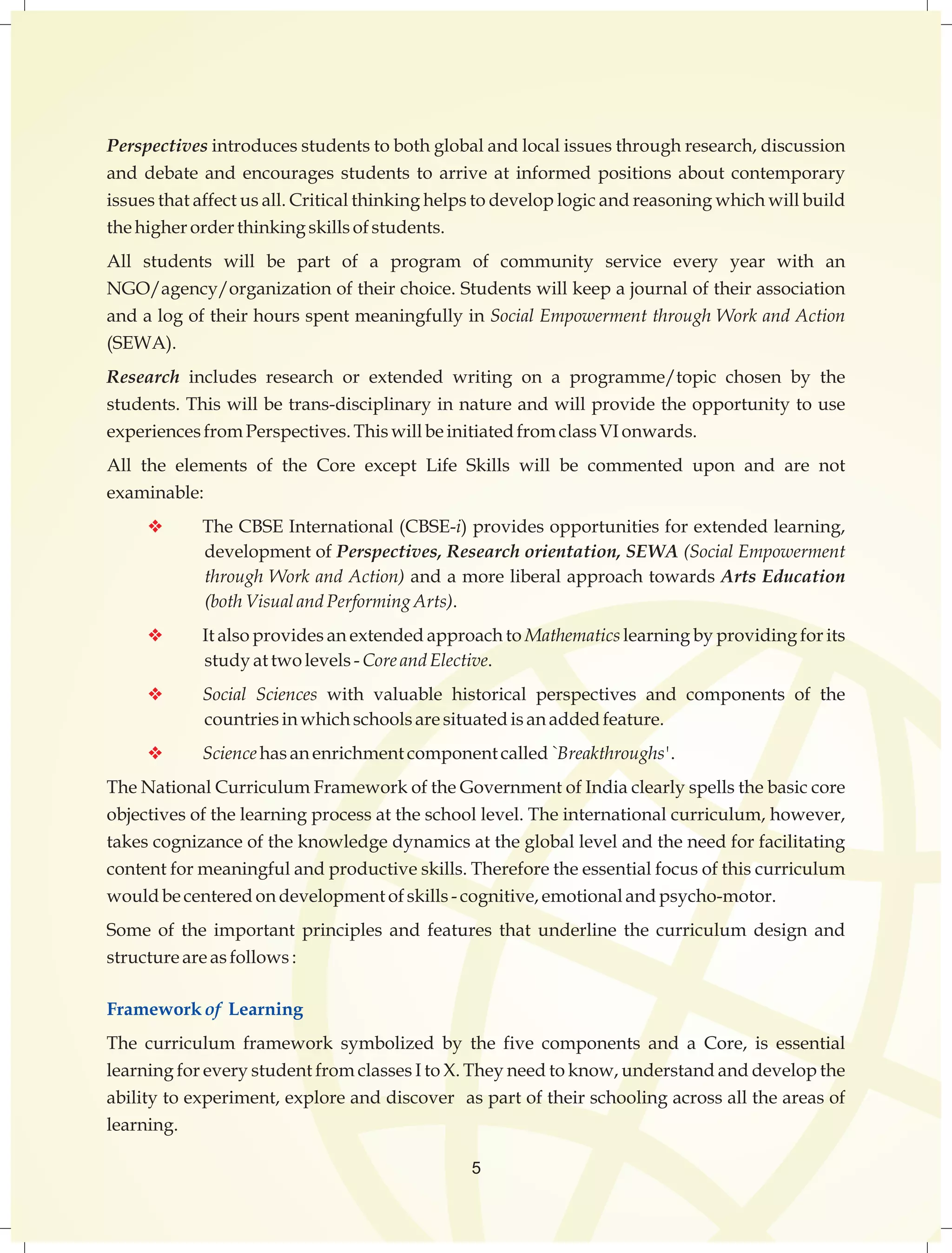
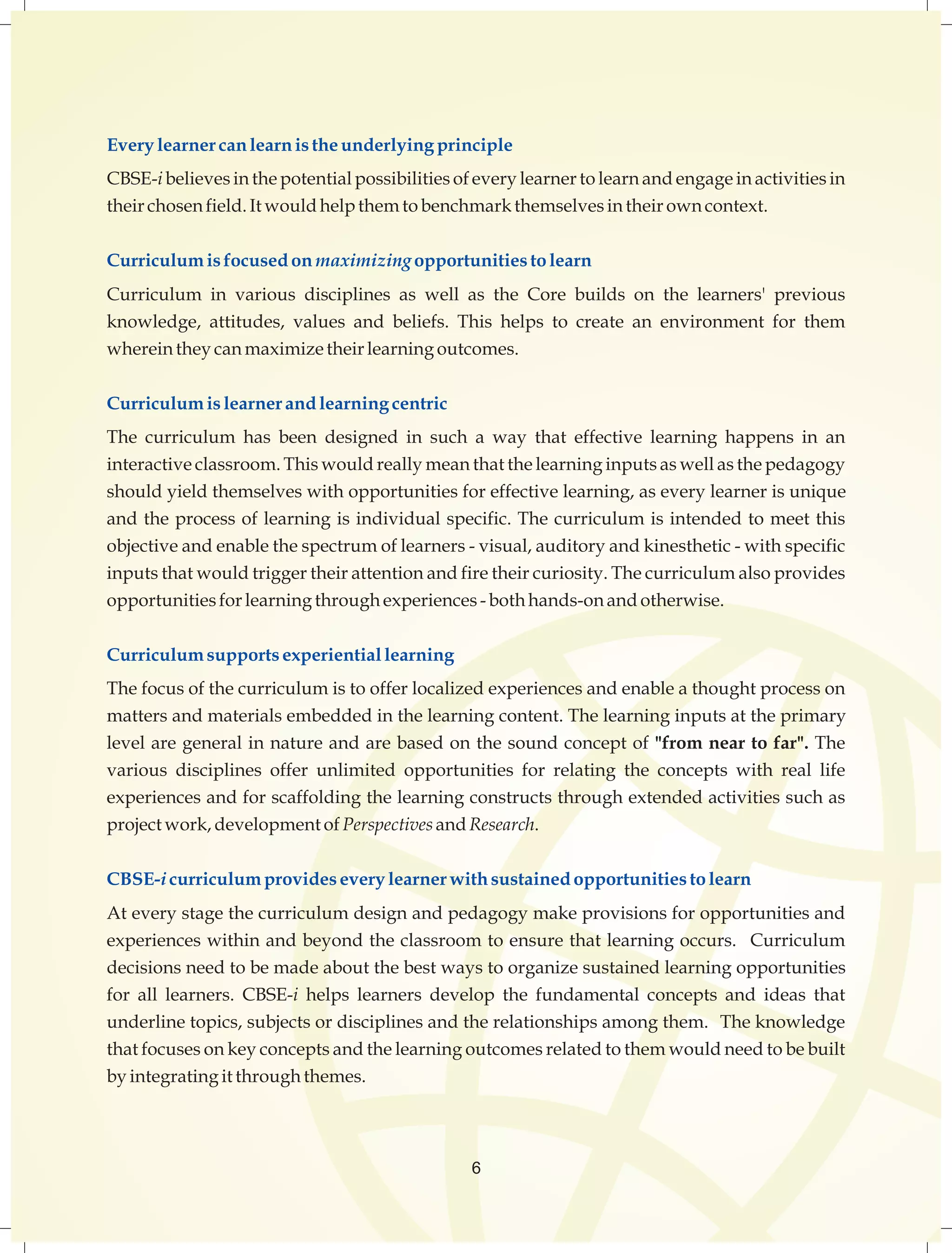
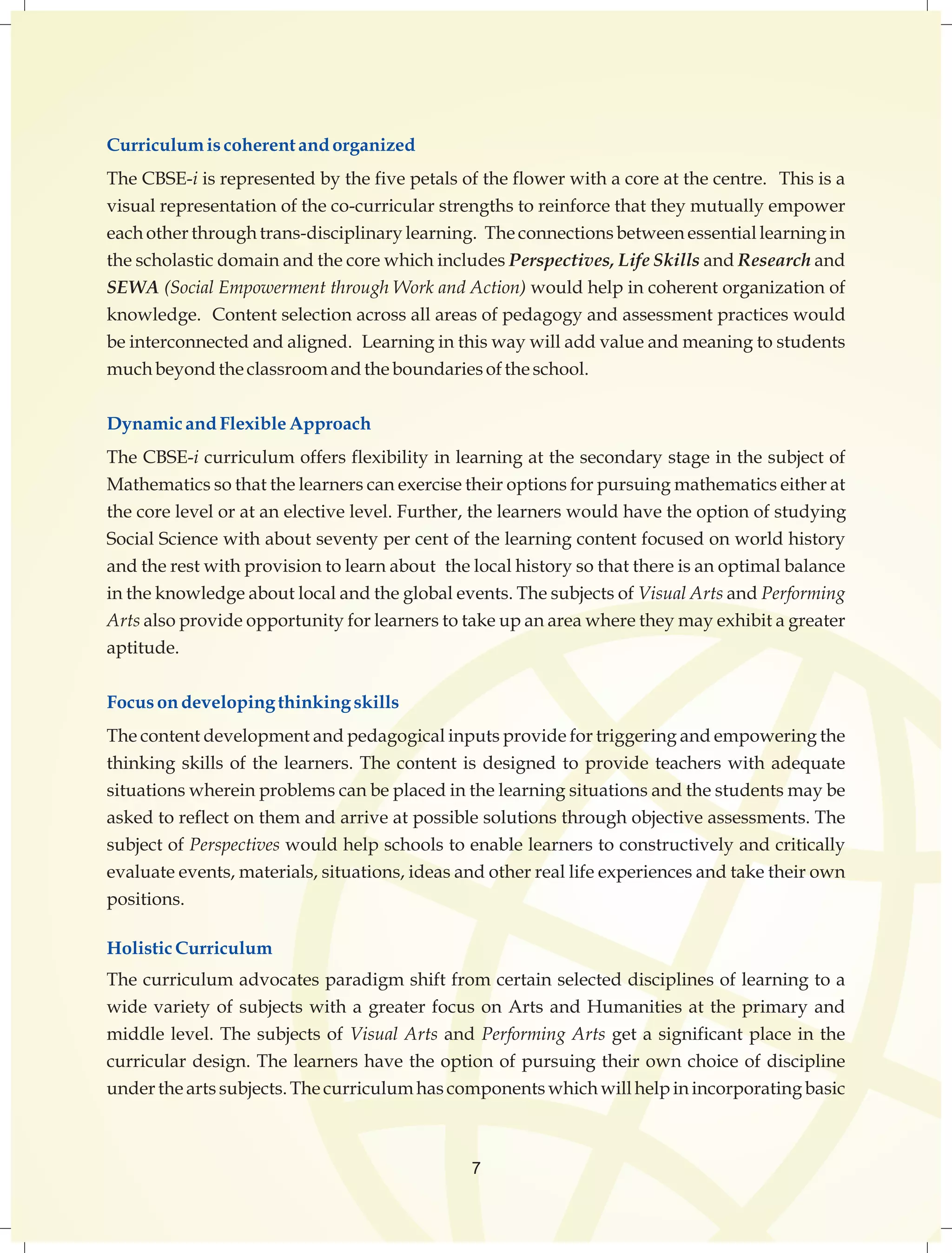
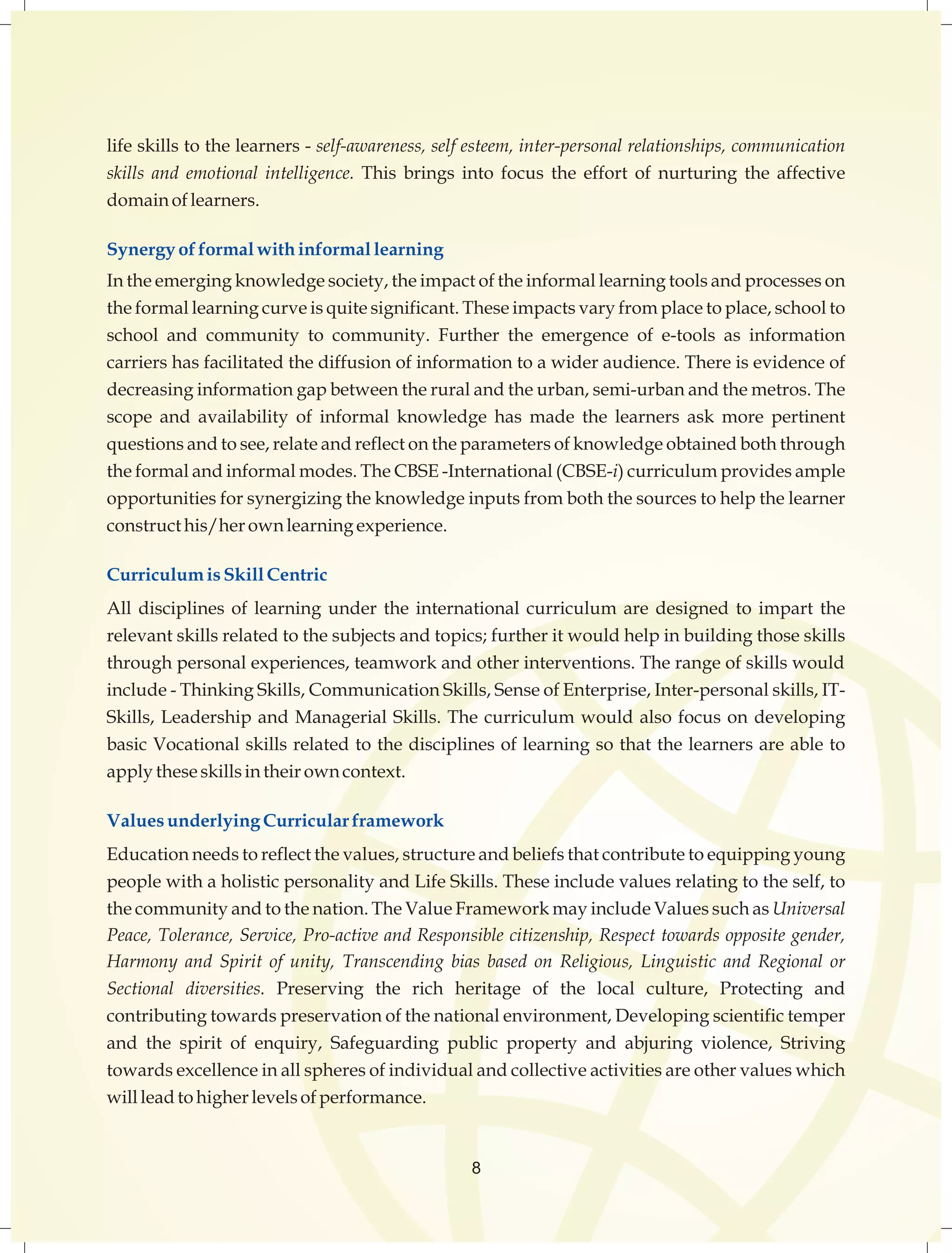
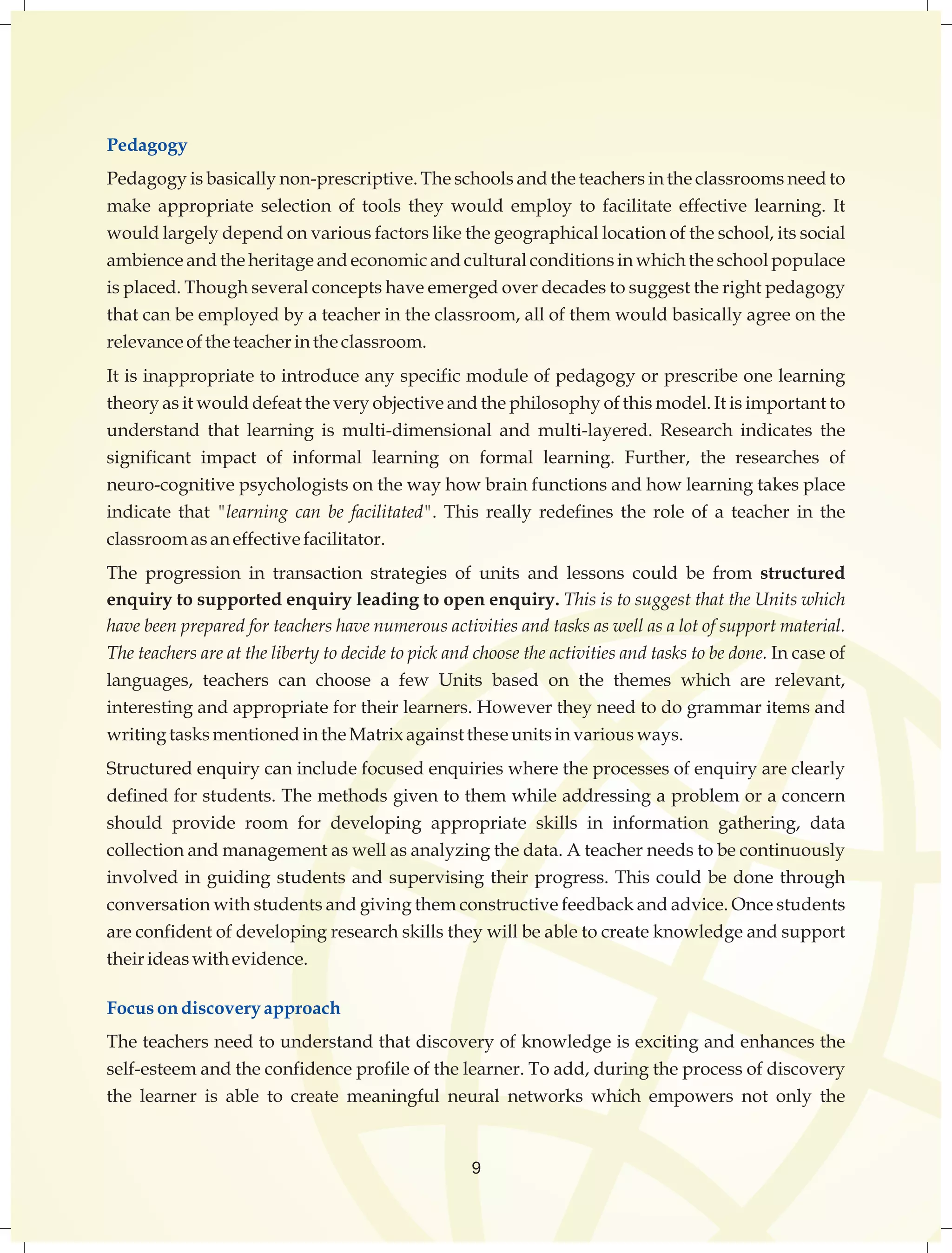
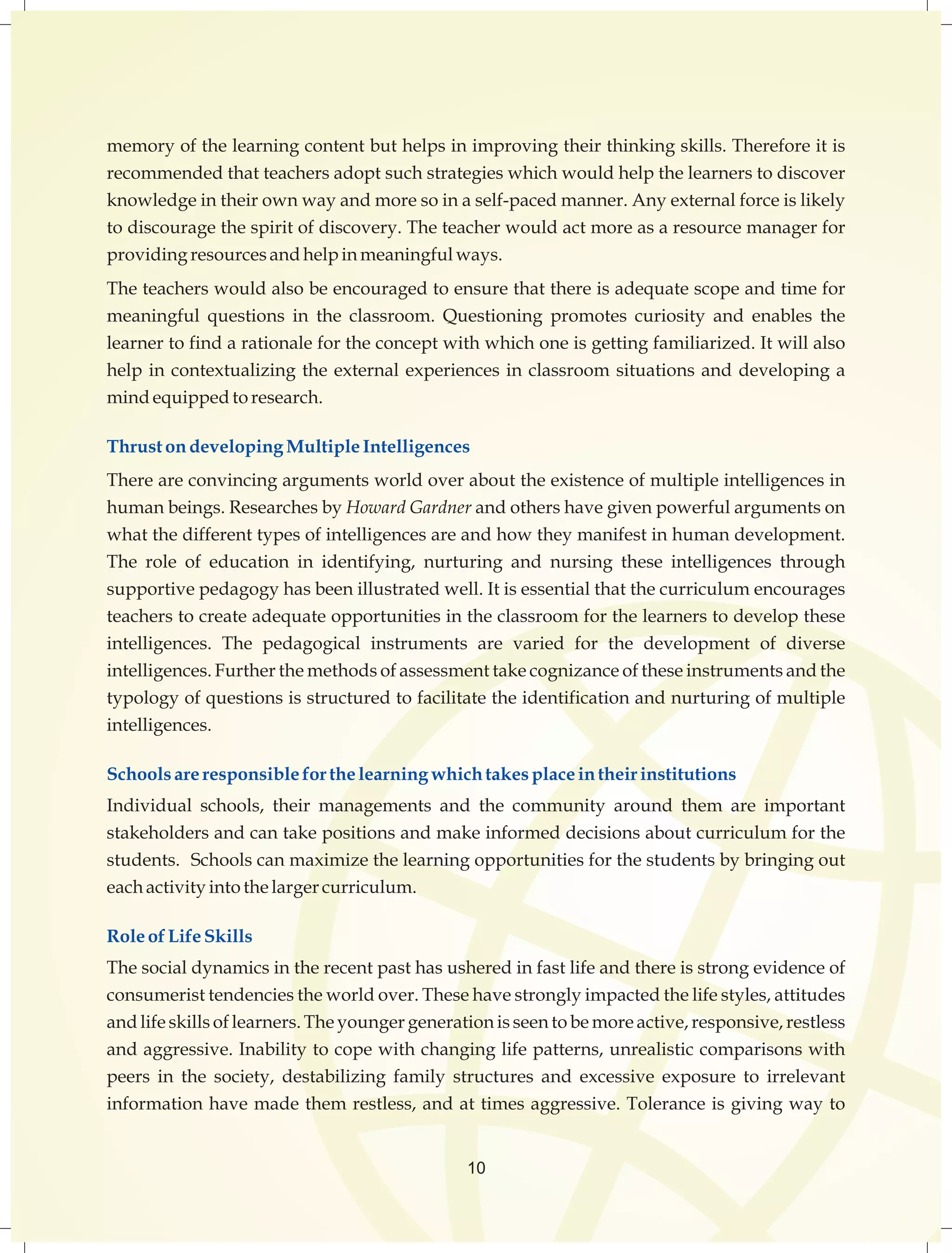










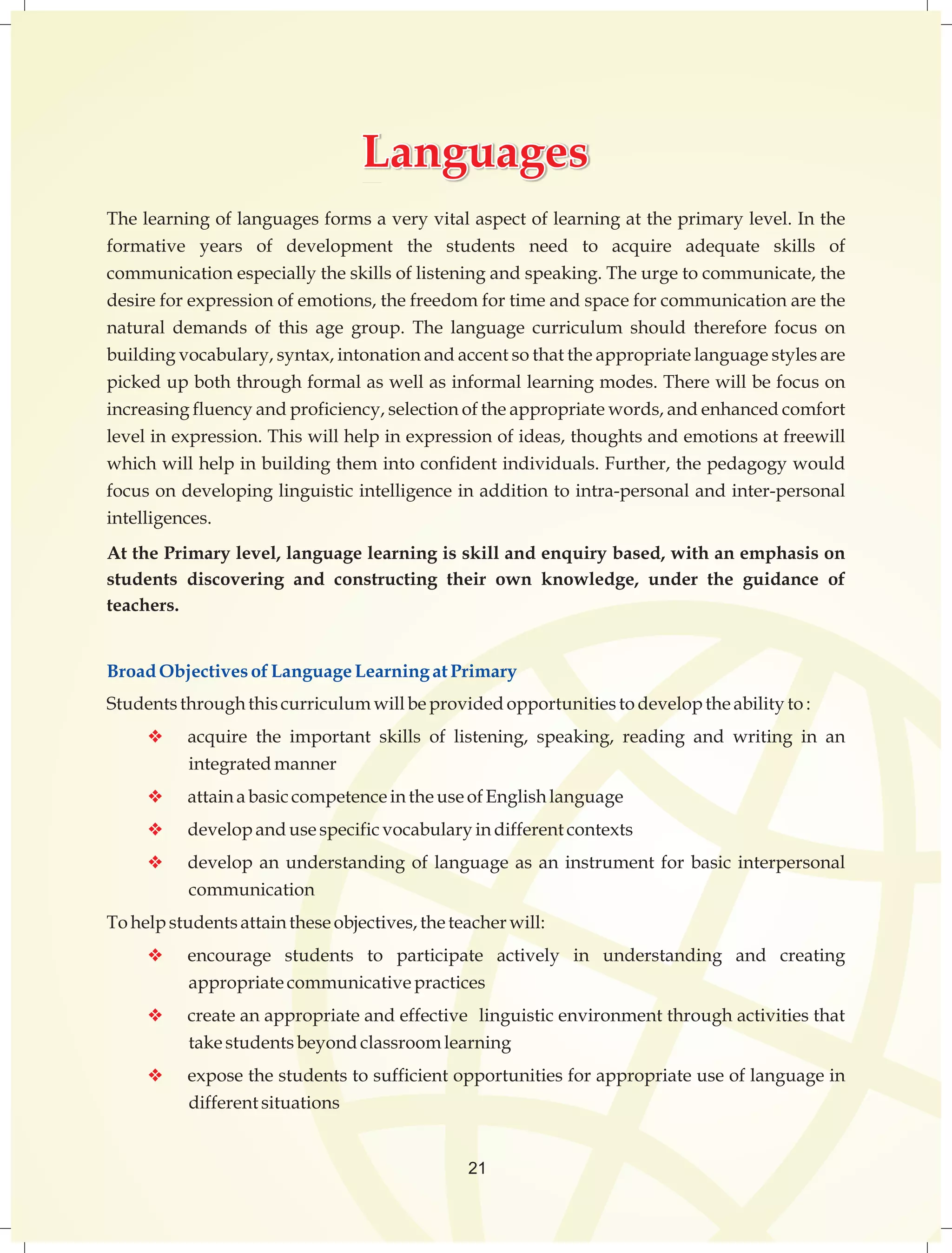


![fffgggaaannnhhh
^Hkk"kk* 'kCn dh ckr ge tc djrs gSa rks blds varxZr ?kj dh Hkk"kk] vkl&iM+ksl dh Hkk"kk vkSj Ldwy dh Hkk"kk] lHkh vk
tkrh gSaA ?kj&ifjokj vkSj vius vkl&iM+ksl dh Hkk"kk,¡ cPpk lgtrk vkSj LokHkkfod :i ls xzg.k dj ysrk gSA fo|ky; esa
mldk ifjp; Hkk"kk vtZu ds vkSipkfjd Lo:i ls gksrk gSA
tc cPps fo|ky; esa izos'k ysrs gS] rc rd os vius ifjos'k esa izpfyr ,d ;k ,d ls vf/d Hkk"kkvksa dks le>us vkSj
mldks O;ogkj esa ykus dh ;ksX;rk,¡ fodflr dj pqds gksrs gSaA vr% Li"V gS fd gj cPps esa Hkk"kk lh[kus dh ;ksX;rk,¡
tUetkr gksrh gSA Hkk"kk lh[kuk laidZ vkSj lanHkZ dk ifj.kke gSA ;g ns[kus esa vkrk gS fd Hkk"kk lh[kus dk lcls csgrj dk;Z
rc gksrk gS tc ml dk;Z dk mís'; Hkk"kk u gksdj dqN vkSj gks] tSls [ksy] ckrphr] dYiuk ;k fØ;kdyki! Hkk"kk lh[kuk
dksbZ Øec¼ ;k VqdM+ksa esa caVh izfØ;k ugha gS ftlesa ikBksa dks ek=k dfBurkuqlkj O;ofLFkr dj fn;k tk,A jkspdrk vkSj
lkFkZdrk Hkk"kk ds ikB~;Øe dk ewy vk/kj gksuk pkfg,A
Hkk"kk ds dkS'kyksa dks vyx&vyx lh[kk ;k fl[kk;k ugha tk ldrkA ;s lHkh dkS'ky vkil esa iwjh rjg lacaf/r gSa rFkk
buesa ls ,d dh Hkh mis{kk gksus ij Hkk"kk esa n{krk deFkksj iM+ tk,xhA ;fn d{kk esa ,d ls vf/d Hkk"kk,¡ le>us vkSj
cksyus okys cPps ekStwn gS rks bls Hkh Hkk"kk f'k{k.k esa ,d lalk/u ds :i esa bLrseky fd;k tk ldrk gSA
Hkk"kk f'k{k.k dh vko';drk vkSj mi;ksfxrk
izkFkfed Lrj ij vf/xe dk ,d egRoiw.kZ vax gS & Hkk"kk ds fofHkUu :i vkSj iz;ksx lh[kukA
Hkk"kk dks laizs"k.k vkSj vfHkO;fDr ds lkFk&lkFk ge vius vkl&ikl dh nqfu;k dks ns[kus] eglwl djus vkSj mls vFkZ nsus
ds fy, Hkh bLrseky djrs gSaA ge Hkk"kk dk lcls vf/d bLrseky vuqHkoksa dks O;ofLFkr djus] le>us vkSj O;k[;k djus
esa djrs gSaA Hkk"kk dh lgk;rk ls gh ge vius ckjs esa lksprs&fopkjrs gSa vkSj /kj.kk,¡ cukrs gSA bl izdkj Hkk"kk gekjs lkspus
fopkjus dh izfØ;k dk vax gSA
ge Hkk"kk dk mi;ksx vius vkSj nwljksa ds fopkjksa] ewY;ksa vkSj O;ogkj dks izHkkfor djus ds fy, Hkh djrs gSaA lekt esa viuh
igpku LFkkfir djus vkSj nwljksa dh igpku dks Lohdkj djus ;k pqukSrh nsus ds fy, Hkh ge Hkk"kk dk mi;kssx djrs gSaA
fopkj dk ekè;e gksus ds dkj.k Hkk"kk euq"; dks dke djus vkSj l`tu djus esa Hkh lgk;rk djrh gSA bl :i esa Hkk"kk euq";
dh l`tu'khyrk vkSj mRikndrk dk izrhd Hkh cu tkrh gSA
cPpk Hkk"kk dk mi;ksx fo'ks"k :i ls [ksyksa] dYiukvksa] vuqdj.k vkSj vfHkO;fDr ds fy, djrk gSA bl vk;q oxZ ds
lnL;ksa esa laizs"k.k dh rhoz bPNk gksrh gSA os Hkkoukvksa dks Lora=krkiwoZd O;Dr djrs gSA ckrphr ;k vfHkO;fDr esa os le;
;k LFkku ds ca/uksa dks egRo ugha nsrsA os 'kCnksa vkSj èofu;ksa ds lkSan;Z dk vkuan ysrs gSaA os dbZ izdkj ds dk;ks± dks
djrs&djrs Hkk"kk dk bLrseky djrs tkrs gSaA Hkk"kk dk mi;ksx os dbZ ubZ vo/kj.kk,¡ cukus vkSj vftZr vo/kj.kkvksa ds
ifjektZu esa djrs gSaA
24](https://image.slidesharecdn.com/cbse-141216024836-conversion-gate01/75/Cbse-34-2048.jpg)
![Hkk"kk f'k{k.k dsoy Hkk"kk dh d{kk rd lhfer ugha gksrkA vU; fo"k;ksa dks lh[kus esa Hkh cPpk Hkk"kk dk bLrseky djrk gSA
;g fl¼ fd;k tk pqdk gS fd ,d Hkk"kk dh le> fdlh nwljh Hkk"kk dks lh[kus esa i;kZIr lgk;rk djrh gSA
IkkB~;lkexzh
fganh f'k{k.k ds fy, ikB~;lkexzh i;kZIr fofo/rk fy, gksuh pkfg,A fu/kZfjr ikB~;lkexzh ds vfrfjDr cgqr lh lgk;d
lkefxz;ksa] tSls& lekpkji=k] if=kdk,¡] iqLrdsa] dkWfeDl] baVjusV] n`';&JO; lkefxz;k¡ (fiQYe] xkus) vkfn dk Hkjiwj
mi;ksx fd;k tk,A izkFkfed Lrj ij izLrkfor ikB~; lkexzh ds dqN egRoiw.kZ y{k.k fuEufyf[kr gSa μ
1- dFkkRed jpukvksa ds ckgqY; ds lkFk&lkFk tkudkjhijd jpukvksa dh fofo/rk gks rkfd fo|kFkhZ fofHkUu izdkj
dh jpukvksa dks i<+us dk vkuan ys lds vkSj fofo/ izdkj ds lkfgR; ls ifjfpr gks ldsaA
2- fo/kvksa esa Hkh i;kZIr fofo/rk gksA dgkuh] dfork ij T+;knk cy nsrs gq, ,dkadh] i=k] xhr] laLej.k] foKkiu]
dkVwZu vkfn dk Hkh lekos'k fd;k tk ldrk gSA dgkuh vkSj dfork,¡ Hkh cgqjaxh gksa] tSls & jgL; dFkk]
fp=kdFkk] foKku dFkk] gkL; dFkk] cks/ dFkk] ijhdFkk] yksddFkk xhr dFkk vkfnA
3- jpukvksa esa lkekftd ljksdkj >ydrs gksa] tSls& laLÑfr] oSKkfud fparu] dqjhfr;ksa dk neu] Lora=krk vkSj
iztkrkaf=kd ewY;ksa dh izfr"Bk] lkekftd U;k;] lekurk] i;kZoj.k laj{k.k] 'kkafr] LokLF; ds izfr tkx:drk] dk;Z
o Je ds izfr fu"Bk vkfnA bu lcds lkFk&lkFk ikB~;lkexzh esa Lo&vè;;u ds n`f"Vdks.k ls vusd jpuk,¡
lfEefyr dh tk,¡ rkfd cPpksa dks i<+us ds Hkjiwj volj feysa vkSj mudh mRlqdrk dh larqf"V dh tk ldsA
4- ikB~;lkexzh ds iz'u&vH;kl bl izdkj ds gksa tks cPpksa dks jVus ds fy, foo'k u djsa cfYd lkexzh dks le>dj
mlij viuh ekSfyd izfrfØ;k nsus ds fy, izsfjr djsA vH;klksa ds ekè;e ls cPps lkexzh dks O;kid vFkks± esa
le> ldsaxsA iz'u vH;kl ,sls gksa tks cPpksa dks vkil esa [kqydj ckrphr djus vkSj rdZ djus ds volj nsaA
vH;kl ,sls gksa tks cPpksa dks d{k vkSj d{kk ds ckgj dh nqfu;k dk ckjhdh ls voyksdu djus ds fy, izsfjr djsaA
5- izR;sd ikB ds lkFk vfrfjDr vè;;u vkSj [kkstchu ds fy, lanHkZ iqLrd lwph vkSj oScfyad fn, tkus pkfg,
rkfd laHko gks rks cPps vius ?kj ij Hkh [kkstchu dj ldsaA
6- O;kdj.k dh vo/kj.kkvksa dks jVokus dh ijaijk dks grksRlkfgr fd;k tk,A O;kdj.k ds fu/kZfjr fcanq ikB~;lkexzh
vkSj thou ds lanHkks± dh lgk;rk ls bl izdkj izLrqr fd, tk,¡ fd cPps mudks le>dj vius fnu izfrfnu ds
thou esa mudk iz;ksx dj ldsaA
7- ikB~;lkexzh vkSj xfrfof/;ksa dh Hkk"kk vke cksypky dh Hkk"kk ds ;FkklaHko fudV jgs] fo'ks"k :i ls d{kk 1
vkSj 2 esa xfrfof/;k¡ ,slh gks ftuds }kjk cPpksa] cM+ksa vkSj f'k{k.k lkexzh ds chp lkFkZd var% fØ;k laHko gks
ldsA cPpksa dh #fp] ifjos'k rFkk Lrj ds vuq:i jpukvksa dk p;u fd;k tk,A
8- ,slh xfrfof/;k¡ Hkh 'kkfey dh tk,¡ tks cPps fcuk f'k{kd@cM+ksa dh lgk;rk ds Lo;a ;k vius lkfFk;ksa ds lkFk
feydj dj ldsaA
25](https://image.slidesharecdn.com/cbse-141216024836-conversion-gate01/75/Cbse-35-2048.jpg)
![9- ikB~;lkexzh esa Hkjiwj fp=kksa dk bLrseky fd;k tk,A fp=k dsoy 'kksHkk c<+kus ds fy, u j[ks tk,¡ cfYd ckrphr
vkSj vU; xfrfof/;ksa esa mudk l`tukRed iz;ksx fd;k tk,A
10- ikB~; lkexzh cPpksa esa dyk o lkSna;Z cks/ ds fodkl esa lgk;d gksA
f'k{k.k&;qfDr;k¡
d{kk dk okrkoj.k cgqr vf/d fu/kZfjr djrk gS fd cPps fdruk dqN d{kk esa lh[k ldsaxsA ;fn Hkk"kk f'k{k.k ds mn~ns';ksa
dks liQyrkiwoZd izkIr fd;k tkuk gS rks d{kk ds okrkoj.k dks [kq'kuqek cukuk vR;ar vko';d gSA
d{kk esa cPpksa dks ckrphr djus] ppkZ djus] loky iwNus vkSj viuh jk; nsus dh iwjh Lora=krk gksuh pkfg,A ckrphr djus
ls cPpksa dh Hkk"kk] le> vkSj vkRefo'okl esa o`f¼ gksxhA f'k{kd Hkh cPpksa ls vusd fo"k;ksa ij ckrphr djsa tSls mudk
?kj] ifjos'k] ilan&ukialn] nksLr] [ksy vkfnA blls d{kk esa lgt vkSj vkReh; okrkoj.k dk fuekZ.k laHko gks ldsxkA
f'k{kd dks cPpksa dks ckrphr djus ds fy, izksRlkfgr djuk pkfg, vkSj cPpksa dh jk;] mudh 'kadkvksa vkSj n`f"Vdks.k dk
lEeku djuk pkfg,A ,d gh iz'u ds vusd mRrj laHko gS] vr% f'k{kd dks viuk n`f"Vdks.k cPpksa ij Fkksiuk ugha pkfg,A
Hkk"kk dh d{kk esa vusd izdkj ds fØ;kdykiksa vkSj lkexzh dk iz;ksx fd;k tkuk pkfg, rkfd gj jksFk cPpksa dks fnypLi
dk;Z djus dk volj feysA fofo/rk ls ,djlrk dks rksM+us esa lgk;rk feysxhA
cPpksa ds ?kj dh cksyh vkSj Hkk"kk o LFkkuh; Hkk"kk dk fganh f'k{k.k esa l`tukRed iz;ksx fd;k tk ldrk gSA fganh d{kk ,slh
gks ftlesa xyfr;ksa dks cqjh uFkj ls ugha ns[kk tk, cfYd lh[kus dh izfØ;k ds LokHkkfod vax ds :i esa Lohdkj fd;k
tk, fganh fo"k; dks tgk¡ dgha laHko gks] vU; fo"k;ksa ls tksM+dj ns[kk tkuk pkfg,A cPpksa dks dksbZ pqukSrh ;k fØ;kdyki
nsrs le; lkFkZd lanHkZ izLrqr fd, tk,¡A fØ;kdykiksa ds p;u vkSj fØ;kUo;u esa cPpksa dh lfØ; Hkkxhnkjh gksuh pkfg,A
fp=kkadu vkSj js[kkadu }kjk cPpksa ds ys[ku dkS'ky dk fodkl fd;k tk ldrk gSA fofo/ lzksrksa ls n`';&JO; lkexzh
,df=kr djds d{kk dk okrkoj.k Hkk"kk;h n`f"V ls le`¼ cuk;k tk ldrk gSA mnkgj.k ds fy, pkVZ] ÝyS'k dkMZ]
i=k&if=kdkvksa dh drjusaA d{kk dh nhokjksa ij fp=k] cPpksa }kjk fufeZr lkexzh bl izdkj yxkbZ tkuh pkfg, rkfd cPps
ljyrk ls mUgsa ns[k vkSj i<+ ldsaA
d{kk esa cPpksa dh fofo/ lkaLÑfrd] Hkk"kk;h] lkekftd vkSj vkfFkZd i`"BHkwfe dk iwjk lEeku fd;k tkuk pkfg, vkSj
mudh fof'k"V vko';drkvksa dh iwfrZ ds fy, mi;qDr f'k{k.k lkexzh vkSj fof/;ksa dk p;u fd;k tkuk pkfg,A d{kk esa
vfHku;] dfork ikB] okn&fookn] dgkuh dguk] vkfn xfrfof/;k¡ vk;ksftr dh tk,¡A d{kk esa fganh dFkk lkfgR; rFkk
xSj dFkk lkfgR; dh iqLrdksa dk iqLrdky; LFkkfir fd;k tk ldrk gS ftlesa cPpksa }kjk fufeZr iqLrdsa Hkh j[kh tk ldrh
gSaA fo|ky; ds iqLrdky; dk Hkh vf/dre iz;ksx fd;k tkuk pkfg,A vkSipkfjd vkSj vukSipkfjd rjhdksa ls fganh ds
ekSf[kd iz;ksx mfpr rjhds] 'kCn HkaMkj vkfn dk leqfpr fodkl gks ldsA bl ckr ds iz;kl fd, tkus pkfg, fd cPps
vkSj vf/d /kjkizokg vkSj Li"Vrk ls viuh ckr dg ldsaA viuh ckr Li"V djus ds fy, mfpr 'kCnksa dk p;u dj ldsa
vkSj vfHkO;fDr ds lgtrk ds Lrj esa o`f¼ dj ldsaA blls fopkjksa] Hkkoukvksa vkSj dYiukvksa dh Lora=k vfHkO;fDr esa
lgk;rk feysxh vkSj cPps ,d vkRefo'oklh ukxfjd cu ldsaxsA
26](https://image.slidesharecdn.com/cbse-141216024836-conversion-gate01/75/Cbse-36-2048.jpg)
![izkFkfed Lrj ij Hkk"kk f'k{k.k ds lkekU; mn~ns';μ
izkFkfed Lrj ij Hkk"kk f'k{k.k vkSj vè;;u dk eq[; mís'; ,slh ifjfLFkfr;k¡ mRiUu djuk gS ftuesa cPpk Lo;a izsfjr
gksdj vius Kku dk ltZu djsA dqN vU; mís'; fuEufyf[kr gSa&
• laizs"k.k ds ewyHkwr midj.k ds :i esa Hkk"kk dh le> fodflr djukA
• fofHkUu lanHkks± esa mi;qDr 'kCnkoyh dk iz;ksx djus dh {kerk fodflr djukA
• nks ;k nks ls vf/d Hkk"kkvksa esa varj vkSj lekurkvksa dh ljkguk djukA
• lkSan;Z cks/ vkSj lkfgfR;d laosnukvksa dks ifj"Ñr djukA
• i<+us&fy[kus (ikB~; vkSj ikB~;srj lkexzh) ds izfr :fp tkxzr djukA
• Hkk"kk ds mi;ksx ds u, lanHkZ vkSj fofo/ fo/kvksa ls ifjfpr izkIr djukA
• fofHkUu lkaLÑfrd i`"BHkwfe ds cPpksa ds vuqHkoksa ls ijLij lh[kukA
• ,sls vuqHkoksa ls ifjp; izkIr djuk tks muds nSfud thou esa miyC/ ugha gSA
• le>rs gq, lquuk ,oa i<+ukA
• dq'kyrk ds lkFk cksyuk ,oa fy[kukA
• vkSipkfjd vkSj vukSipkfjd ifjfLFkfr;ksa esa viuh ckr izLrqr djukA
• cksyus vkSj lquus ds f'k"Vkpkj dk lEeku djukA
• vius ifjos'k] vuqHkoksa vkSj ?kVukvksa ds laca/ esa viuk er j[kukA
• dYiuk'khyrk vkSj ekSfydrk ds lkFk jpuk djukA (dgkuh] dfork] laLej.k] ys[k vkfn)
• ys[ku esa lq#fp] lqnajrk vkSj Li"Vrk dk è;ku j[kukA
• vU; Hkk"kkvksa] leqnkvksa vkSj laLÑfr;ksa ds izfr lEeku dh Hkkouk fodflr djukA
• ifjos'k dh ?kVukvksa] izfØ;kvksa vkSj leL;kvksa dk voyksdu djds izfrfØ;k nsuk] rdZ djuk vkSj ekSfyd
lek/ku izLrqr djukA
• fganh lkfgR; (cky i=k&if=kdk,¡] lekpkj i=k] foKkiu vkfn) dk fu;fer ,oa Lor% izsfjr iBu djukA
• lquh ;k i<+h ckr dks vk¡[k can dj Lohdkj djus ds ctk; mls vkykspukRed n`f"V ls ij[kukA
• nks ckrksa ds chp ds var% laca/ dks le>ukA
• phHkksa] fLFkfr;ksa] yksxksa] ifjos'k vkSj Hkkoksa dk ckjhdh ls o.kZu djukA
• Hkk"kk dh fu;ecn~/rk dh igpku djukA
• fopkjksa vkSj Kku ds vtZu vkSj ltZu ds midj.k ds :i esa Hkk"kk ds mi;ksx ds izfr tkx:drk fodflr djukA
• fo'ys"k.k] rdZ] cks/ vkfn ekufld dq'kyrkvksa dk fodkl djukA
• okD; dh lajpuk vkSj vfHkO;fDr dh Li"Vrk ds laca/ dks le>ukA
27](https://image.slidesharecdn.com/cbse-141216024836-conversion-gate01/75/Cbse-37-2048.jpg)
![• Hkk"kk ds lkSna;Z dks ljkgus dh ;ksX;rk dk fodkl djukA
• cPpksa dh dYiuk'khyrk vkSj l`tukRedrk dks fodflr djukA
• Lo&vf/xe dh ;ksX;rk dk fodkl djukA
d{kk 1 vkSj 2 ds fy, visf{kr dkS'ky
lquukμ
1- è;ku ls vkSj /S;ZiwoZd lqudj le>uk vkSj ml ij viuh izfrfØ;k O;Dr djukA
2- dgh tk jgh ckrksa dks è;ku ls lquuk vkSj lqudj le>ukA
3- ekSf[kd vfHkO;fDr dks lqudj vkuan izkIr djukA
4- dgkuh] dfork] pqVdqys] igsfy;k¡] o.kZu xhr vkfn lquus esa #fp iznf'kZr djukA
5- funsZ'kksa] vuqjks/] lwpuk vkfn dks lqudj muds vuqlkj dk;Z djukA
6- jsfM;ksa vkSj Vsyhfotu ij izlkfjr cky dk;ZØeksa dk vkuan ysukA
cksyukμ
1- vkRefo'okl vkSj dq'kyrk ls vfHkO;fDr djukA
2- vius vuqHko] dYiuk,¡] fopkj vkfn vius 'kCnksa esa lgtrk ls izLrqr djukA
3- vkSipkfjd vkSj vukSipkfjd ifjfLFkfr;ksa esa gksus okyh ppkZ esa Hkkx ysuk vkSj vius fopkj
j[kukA
4- xhr] dgkuh] dfork rFkk vius fopkj Li"Vrk vkSj 'kqn~/ mPpkj.k ls izLrqr djukA
5- i<+h ;k lquh gqbZ dgkuh] dfork ;k ckr dks vius 'kCnksa esa dgukA
6- dgkuh] dfork vkfn dks viuh dYiuk ls vkxs c<+kdj lqukukA
7- fofHkUu èofu;ksa] cksfy;ksa dk vuqdj.k djuk tSls ?kaVh dh vkokFk] i'kq&if{k;ksa dh cksfy;k¡
vkfnA
8- lquh] i<+h lkexzh ls lacaf/r iz'u iwNuk vkSj iwNs x, iz'uksa ds rkfdZd rFkk ekSfyd mRrj nsukA
9- viuh ckr ds leFkZu esa rdZ rFkk mnkgj.k izLrqr djukA
10- nwljksa dh ckr lqudj ml ij fVIi.kh nsukA
11- fofo/ fLFkfr;ksa esa laokn cksyuk vkSj vfHku; djukA
i<+ukμ
1- v{kj tksM+ tksM+dj i<+us ds ctk, le>dj i<+ukA
2- ifjos'k esa miyC/ fp=k] foKkiu] lekpkj vkfn lkexzh ls ifjp; dk mi;ksx djrs gq, i<+us dk dkS'ky
fodflr djukA
28](https://image.slidesharecdn.com/cbse-141216024836-conversion-gate01/75/Cbse-38-2048.jpg)
![3- ';keiV~V ij fy[kh vkSj iqLrd esa Nih lkexzh dks le>rs gq, i<+ukA
4- 'kCnksa esa vkilh laca/ LFkkfir djrs gq, vuqeku ls i<+us dk dkS'ky fodflr djukA
5- i<+us dh izfØ;k dks nSfud thou dh vko';drkvksa ls tksM+ukA
6- lwpuk iV~V] izn'kZu iV~V] ekxZn'kZu ladsrksa vkfn dks i<+dj le>ukA
7- viuh ilan dh jpuk pqudj i<+ukA
8- iw.kZ fojke vkSj iz'uokpd fpg~u dks igpkudj i<+ukA
9- ekufp=k] rkfydkvksa vkfn dk iz;ksx djukA
fy[kukμ
1- o.kks± vkSj 'kCnksa dh leqfpr nwjh vkSj fojke fpg~uksa dk è;ku j[krs gq, lqanj vkSj lqMkSy ys[k fy[kukA
2- 'kCnksa vkSj fp=kdkjh }kjk Lo;a dks vfHkO;fDr djukA
3- 'kCnksa dks ns[kdj vkSj mudh èofu;ksa dks lqudj muesa lg laca/ cukuk vkSj le>dj fy[kukA
4- Lrj ds vuq:i 'kCnksa dk iz;ksx djrs gq, dfork] dgkuh] mRrj] vuqHko vkfn fy[kukA
5- viuh dYiuk ds vk/kj ij fyf[kr jpuk djukA
6- fdlh lquh gqbZ dgkuh] fo"k;oLrq] dfork vkfn dks vius 'kCnksa esa fy[kukA
7- lquh gqbZ lkexzh dks ;Fkk:i fy[kukA
8- ifjos'k vkSj lanHkks± ds vuqlkj viuh izfrfØ;k] vuqHko] dYiuk,¡ vkSj ftKklkvksa dks fy[kdj
vfHkO;Dr djukA
9- fdlh lanHkZ ds vuqlkj 'kh"kZd] mnkgj.k] varj ;k lekurk,¡ fy[kukA
O;kogkfjd O;kdj.k ds fcanqμ
• Loj vkSj O;atuksa dh igpku vkSj mPpkj.kA
• vuqLokj] vuqukfld dk iz;ksx
• la;qDrk{kjksa dk iz;ksx
• ^j* ds :iksa dh igpku vkSj iz;ksx
• fojke fpg~u&iw.kZ fojke] vYi fojke~] iz'uokpd fpg~u
• fyax o opu dh igpku
• ek=kk fpg~uksa dh igpku vkSj iz;ksx
29](https://image.slidesharecdn.com/cbse-141216024836-conversion-gate01/75/Cbse-39-2048.jpg)
![d{kk 3 ls 5 ds fy, visf{kr n{krk,¡μ
lquukμ
1- vifjfpr 'kCnksa dks lqudj mUgsas le>us ds fy, izHkkoh rjhdksa dk iz;ksx djukA mnkgj.k ds fy,&lanHkZ
ds fglkc ls vFkZ dk vuqeku yxkukA
2- nwljksa ds fopkjksa dks lqudj le>ukA
3- lqus x, fopkjksa vkSj Hkkoksa ij fparu djukA
4- lqus x, fopkjksa ds vk/kj ij viuk ekSfyd vkSj Lora=k n`f"Vdks.k fodflr djukA
5- i'kq&if{k;ksa dh cksfy;k¡] fofHkUu èofu;k¡ lqudj mUgsa igpkuukA
6- dfork,¡ lqudj jlkLoknu djukA
7- jkspd dgkfu;k¡] izsjd izlax] ,sfrgkfld&lkaLÑfrd o.kZu lqudj mUgsa vkRelkr djukA
8- fdlh izfØ;k dks lqudj mls le>ukA
9- jsfM;ksa] Vh-oh- dk;ZØeksa dk vkuan ysukA
cksyukμ
1- nwljksa ds fopkj lqudj viuh izfrfØ;k O;Dr djukA
2- fofo/ lanHkks± esa Li"Vrk vkSj vkRefo'okliwoZd ckrphr djukA
3- ckj&ckj ,d gh ckr@'kCn dks nksgjkus ds ctk, mfpr fodYi pqudj iz;ksx djukA
4- lksp le>dj fopkj fodflr djuk vkSj lgkuqHkwfriw.kZ :i ls jk; nsukA
5- fopkjksa dks Li"Vrk vkSj Øec¼rk ls fu:fir vkSj O;ofLFkr djukA
6- vfHku; vkfn esa vkRefo'okliwoZd Hkk"kk dk iz;ksx djukA
7- LokHkkfod :i ls mfpr fojke] mPpkj.k vkSj xfr ds lkFk ckr djukA
8- xhr&dfork vkfn dks mfpr y;&rky ds lkFk xkuk@cksyukA
9- cksyus ds f'k"Vkpkj dk ikyu djukA
10- ifjfLFkfr vkSj volj ds vuqlkj viuh ckr dgus ds fy, mfpr 'kCnksa o gko Hkko dk
pquko vkSj iz;ksx djukA
11- viuh dYiuk,¡ fopkj] rdZ] lq>ko] vuqHko] lgefr ;k vlgefr O;Dr djukA
12- fdlh lquh ;k i<+h xbZ lkexzh dks Li"Vrk ls le>us ds fy, iz'u iwNukA
13- viuh ckr le>kus ds fy, mnkgj.k] rdZ] rFkk dkj.k n`"Vkar izLrqr djukA nwljksa ds iz'uksa ds mÙkj nsukA
14- fdlh izfØ;k dk o.kZu djukA
30](https://image.slidesharecdn.com/cbse-141216024836-conversion-gate01/75/Cbse-40-2048.jpg)
![i<+ukμ
1- u, 'kCnksa dks i<+dj mUgsa le>us ds fy, mi;qDr j.kuhfr;ksa dk iz;ksx djukA mnkgj.k ds fy, lanHkZ ds
vuqlkj vFkZ dk vuqeku yxkukA
2- dFkk&dfork vkSj tkudkjhijd iqLrdksa dks i<+uk vkSj ljkguk djukA
3- u, 'kCn dk vFkZ tkuus ds fy, 'kCndks'k dk iz;ksx djukA
4- fofHkUu jpukvksa dks i<+dj mudh rqyuk djukA
5- i<+us ds izfr :fp tkxzr djukA
6- dq'kyrkiwoZd mi;qDr xfr ds lkFk lLoj vkSj ekSu iBu dh ;ksX;rk fodflr djukA
7- iBu lkexzh esa fufgr ewy Hkko] fopkj ;k fcanq dks <w¡<+ukA
8- nwljksa dh vfHkO;fDr dks i<+dj le>ukA
9- lkfgR; dh fofHkUu fo/kvksa dks i<+dj muds izfr le> fodflr djukA
10- lkfgR; dh fofHkUu fo/kvksa dh vU; iqLrdsa i<+us ds fy, izsj.kk izkIr djukA
11- foKkiu] ikB~;lkexzh] i=k&if=kdk,¡] lekpkj i=k] dkWfeDl] dkVwZu] ckjs vkfn i<+dj mu ij izfrfØ;k
O;Dr djukA
12- bysDVªkfud ekè;eksa Vhoh] baVjusV] eksckby iQksu vkfn ij miyC/ lkexzh dks i<+dj mldk lw>cw>iw.kZ
iz;ksx djukA
13- ikB~;lkexzh dks i<+dj fofHkUu eqn~nksa vkSj ewY;ksa ds izfr n`f"Vdks.k dk fuekZ.k djukA
14- iBu ds }kjk vkuan izkIr djukA
15- orZuh ,oa O;kdjf.kd fu;eksa ds iSVuZ dk voyksdu djds lkekU; fu;e la'ysf"kr djukA
16- iqLrdky; dk mi;ksx djukA
17- ifBr lkexzh dk eq[; fopkj] egRoiw.kZ rF; vkSj dsanzh; Hkko igpkuukA
fy[kukμ
1- vius fopkj] Hkko] dYiuk,¡] vuqHko] 'kadk,] leL;k,¡] fparu vkSj ftKklk,¡ fy[kus ds fy, foLr`r
'kCn HkaMkj dk mi;ksx djukA
2- fdlh ikB~; lkexzh esa ls y?kq fVIif.k;k¡ cukuk vkSj ml lkexzh ds laca/ esa ys[ku dk;Z djrs gq, mu
fVIif.k;ksa dk iz;ksx djukA
3- mn~ns'; ds vuqlkj 'kCnksa vkSj jpuk ds vkdkj dk p;u djukA
4- ys[ku esa Øecn~/rk dk è;ku j[kukA
5- yksdxhrksa] yksddFkkvksa] ijaijkxr dFkkvksa] ijhdFkkvksa vkfn dks vius 'kCnksa esa fy[kukA
31](https://image.slidesharecdn.com/cbse-141216024836-conversion-gate01/75/Cbse-41-2048.jpg)
![6- fopkjksa dks Li"Vrk ls fu:fir vkSj O;ofLFkr djukA
7- euilan fo"ke vkSj fo/k dk pquko djds fy[kukA
8- nwljksa dh vfHkO;fDr dks lqudj mfpr xfr ls fy[k ldukA
9- viuh dYiuk ls dgkuh] dfork] ys[k vkSj o.kZu fy[kukA
10- fdlh lwpuk@o.kZu dks lqudj mlls lacaf/r iz'u vkSj mRrj fy[kukA
11- 'kqn~/rk] Li"Vrk vkSj vkRefo'okl ds lkFk fy[kukA
12- fojke fpg~uksa dk mfpr mi;ksx djukA
O;kogkfjd O;kdj.kμ
Ik;kZ;okph fyax dkjd yksdksfDr
foykse opu eqgkojs fojke fpg~u
fo'ks"k.k fØ;k laKk loZuke
ewY;kaduμ
ewY;kadu f'k{k.k izfØ;k dk vfHkUu vax gSA ftldk lh/k mn~ns'; gS & fofHkUu lanHkksZa esa cPpksa }kjk Hkk"kk iz;ksx dh
dq'kyrk dk vkdyu djukA vkdyu dh ;g izfØ;k fu"i{k vkSj bZekunkjh ls iw.kZ gksuh pkfg, rFkk ,slh gks ftlls cPpksa
dks Hkk"kk iz;ksx laca/h iQhMcSd feys vkSj os Lo;a gh vius Hkk"kk iz;ksx dks ifjekftZr dj ldsaA cPPks izkFkfed Lrj ij
ewY;kadu djrs le; fuEufyf[kr ckrksa dks è;ku esa j[kk tk,μ
1- lrr vkSj O;kid ewY;kadu dh i¼fr viukbZ tk,A
2- igyh ls rhljh d{kk esa cPpksa dh xfrfof/;ksa ds voyksdu ds vk/kj ij ewY;kadu fd;k tk,A
3- pkSFkh vkSj ik¡poh d{kk esa FkksM+k vkSipkfjd ewY;kadu fd;k tk,xkA ijarq ;g è;ku esa j[ksa fd ewY;kadu jkspd
vkSj lgt xfrfof/;ksa }kjk fd;k tk, tks cPpksa ds eu esa Mj ;k ladksp mRiUu u djsA
4- ewY;kadu ds funkukRed vkSj mipkjkRed i{k ij fo'ks"k è;ku fn;k tk,A
5- cPps ds izn'kZu dh rqyuk mlh cPps ds fiNys izn'kZu ls djds mldh izxfr dk vkdyu fd;k tk,A blds fy,
cPps ds dk;Z] fufeZr lkexzh vkSj xfrfof/;ksa esa lgHkkfxrk dk fu;fer fjdkMZ j[kk tk,A
6- ewY;kadu ekuoh; mÙkjnk;h] ikjn'khZ] fe=krkiw.kZ] U;k;iw.kZ vkSj iwokZxzgksa ls eqDr gksA
7- ewY;kadu esa cPpksa dh lgt ekSf[kd vkSj fyf[kr vfHkO;fDr dks egRo fn;k tk, u fd jVs gq, mÙkjksa dksA
8- ewY;kadu dh fof/;ksa esa fofo/rk gks rkfd ;g izfØ;k cPps ds fy, jkspd cu ldsA
32](https://image.slidesharecdn.com/cbse-141216024836-conversion-gate01/75/Cbse-42-2048.jpg)
![9- fo'ks"k vko';drkvksa okys cPps dk vkdyu mudh fof'k"V vko';drkvksa vkSj {kerkvksa dks è;ku esa j[krs gq,
fd;k tk,A
10- lquuk&cksyuk] i<+uk] fy[kuk] bu dkS'kyksa ds lkFk vU; dkS'kyksa dk Hkh lexzrkiwoZd ewY;kadu fd;k tk, tSls
oxhZdj.k] rdZ] fo'ys"k.k] la'ys"k.k] voyksdu] fparu vkfnA
:ikRed(iQkWjeSfVo) vkdyu ds fy, dqN lq>ko
IkQkWjeSfVo vkdyu dk eq[; y{; ;g gS fd cPpksa dh Hkk"kk;h dq'kyrkvksa dk vkdyu o"kZ esa dsoy nks&rhu voljksa ij
djus ds ctk; fu;fer vkSj lrr :i ls gksrk jguk pkfg,A ewY;kadu Ñf=ke vkSj fu;af=kr ifjos'k esa u gksdj Hk;eqDr]
lgt vkSj vukSipkfjd :i ls gksuk pkfg,A ewY;kadu gsrq vyx ls dksbZ fo'ks"k dk;ZØe vk;ksftr djus ds ctk; mls
d{kk vkSj fo|ky; dh jkst+ejkZ dh xfrfof/;kas dk vfHkUu vax cuk;k tkuk pkfg,A
fganh Hkk"kk ds mn~ns';ksa dks izkIr djus gsrq vki le;≤ ij vusd xfrfof/;k¡ Hkh djokrs gksaxsA vki ;g vo'; tkuuk
pkgsaxs fd bu xfrfof/;ksa }kjk cPpksa esa okafNr ;ksX;rkvksa dk fodkl gks jgk gS ;k ughaA bUgha dq'kyrkvksa ds vkdyu }kjk
gh vki vius f'k{k.k dh liQyrk dk vkdyu Hkh dj ldsaxsA
IkQkWjeSfVo vkdyu gsrq vkidks jkspd] ljy vkSj cPpksa ds thou ls tqM+s gq, fØ;kdyki] ikB~; lkexzh vkSj [ksy pquus
pkfg,A fØ;kdykiksa vkSj vkdyu gsrq igys ls ;kstuk cuk ysuh pkfg,A fØ;kdykiksa esa n`';&JO; lk/uksa dk ;FkklaHko
bLrseky fd;k tk,A pw¡fd Hkk"kk ds lHkh dkS'ky ,d&nwljs esa ?kqys&feys jgrs gSa vr% vki Hkh ,d xfrfof/ }kjk ,d ls
vf/d dkS'kyksa@mn~ns';ksa dk vkdyu dj ldrs gSaA
bu xfrfof/;ksa dks d{kk ;k fo|ky; izkax.k esa gh djok;k tkuk gSA ;fn dksbZ ,slk fØ;kdyki gS ftlesa
fo|ky; ls ckgj tkdj dk;Z djus dh vko';drk iM+rh gS rks ,slh fLFkfr esa og dk;Z f'k{kd ds i;Zos{k.k vkSj
ekxZn'kZu esa gksuk pkfg,A
;g vkdyu O;fDrxr] lkewfgd ;k lkfFk;ksa }kjk fd;k tk ldrk gSA iQkWjesfVo vkdyu esa Lo&vkdyu Hkh cgqr
egRoiw.kZ gS ftlesa cPpk Lo;a viuh izxfr dk ewY;kadu djrk gSA
vki tks Hkh fØ;kdyki djok,¡] mlds ckjs esa cPpksa dks rqjar izfriqf"V (Feedback) vo'; nsaA ml izfriqf"V dk mi;ksx
djrs gq, cPpksa dks mudk izn'kZu lq/kjus ds volj Hkh nsaA izfriqf"V nsus ds fy, vki vU; cPpksa }kjk fd, x, dk;Z ds
uewus Hkh fn[kk ldrs gSaA
iQkWjesfVo ewY;kadu dh dqN xfrfof/;k¡ vkxs nh xbZ gSa μ
(1) lquuk
(2) funsZ'k lqudj dqN cukuk@dk;Z djuk
33](https://image.slidesharecdn.com/cbse-141216024836-conversion-gate01/75/Cbse-43-2048.jpg)
![(3) cksyuk
(4) i<+uk
(5) fy[kuk
(6) vaR;k{kjh
(7) vfHku;
(8) 'kSf{kd [ksy
(9) izfr;ksfxrk
(10) igsyh@iz'uksÙkjh
(1) lqudj izfrfØ;k nsuk μ dkS'ky & lquuk] fy[kuk
ijh{kd cPpksa ds Lrj ds vuqdwy fdlh jkspd vkSj izklafxd fo"k; ij ,d vuqPNsn] dgkuh ;k laokn lquk,¡A
lqukbZ tk jgh jpuk yxHkx 30μ150 'kCnksa dh gks ldrh gSA lqukus ls igys cPpksa dks crk nsa fd bldks lquus ds
ckn mUgsa dqN fØ;kdyki djus gksaxsA ewY;kadu gsrq lquk, tk jgs va'k dks fjdkWMZ Hkh fd;k tk ldrk gSA fjdkWfMZax
dk ykHk ;g gS fd bls iqu% lquk;k tk ldrk gSA
,d ckj jpuk lqukus ds ckn cPpksa dks vH;kl dk;Z@ odZ 'khV ns nsaA vH;kl dk;Z cgqfodYih] fjDr LFkku iwfrZ]
lR;@vlR; dk pquko tSls de le; ysus okys gksa rkfd cPps lqurs&lqurs mUgsa gy dj ldsaA
odZ 'khV@dk;Z i=k nsus ds ckn ogh jpuk fiQj lquk,¡ rkfd bl ckj os lkFk&lkFk gy Hkh fy[k ldsaA
bl xfrfof/ esa lquh xbZ lkexzh ij vk/kfjr iz'u fuEufyf[kr ladYiukvksa ls lacaf/r gks ldrs gSaμ
(1) lquh xbZ lkexzh dk Hkko] ewy fopkj
(2) izfrfØ;k
(3) izR;kLej.k vk/kfjr
(4) dYiuk vk/kfjr
(2) funsZ'kkuqlkj cukuk & dkS'ky & lquuk] fy[kuk
bl xfrfof/ esa fdlh pht+ dks cukus dh izfØ;k pj.kc¼ :i ls crkbZ tk,xh vkSj cPps mls lqudj vkSj ns[kdj
og pht+ cuk,¡xsA mnkgj.k ds fy,] dkxFk dk mi;ksx djrs gq, Vksih] canwd] gkFkh] fpfM+;k vkfn cukukA cPpksa
ds Lrj ds vuqlkj vki izfØ;kvksa ds fy, phFkksa dk p;u dj ldrs gSaA
bl xfrfof/ ds fy,] vki Lo;a lHkh pj.k Hkyh&Hkk¡fr vkRelkr dj ysaA ;fn Lo;a izfØ;k dk o.kZu djus esa
34](https://image.slidesharecdn.com/cbse-141216024836-conversion-gate01/75/Cbse-44-2048.jpg)
![dksbZ fnDdr gS rks ohfM;ks@vkWfM;ks dk;ZØeksa dk mi;ksx Hkh fd;k tk ldrk gSA
bl xfrfof/ ds pj.k fuEufyf[kr gks ldrs gSaμ
• f'k{kd }kjk o.kZu djrs gq,@pj.kksa dks Li"V djrs gq, dksbZ dykÑfr cukdj fn[kkbZ tk,xhA cPps
è;kuiwoZd ns[ksaxs vkSj lqusaxsA
• cPpksa dks lkexzh nsuk (mnkgj.k ds fy, dkxt+)
• ,d ckj fiQj ls f'k{kd }kjk og dykÑfr pj.kc¼ :i ls crkbZ tk,xhA cPps lkFk&lkFk cuk,¡xsA
• cPps iwjh izfØ;k pj.kc¼ :i ls fy[ksaxsA
vkdyu fcanq &
• cPps us funsZ'k nksgjkus ds fy, vuqjks/ ugha fd;kA
• cPps us pj.k Li"V djus ds fy, laxr iz'u iwNkA
• cPps us nwljs cPps dh Rofjr lgk;rk dhA
• cPps us iwjh dykÑfr rS;kj dhA
• cPps us lgh Øe ls iwjh izfØ;k fy[khA
(3) cksyuk μ
Hkk"kk&f'k{k.k dk ,d egRoiw.kZ y{; gS & cPpksa dh cksyus laca/h {kerkvksa dk fodkl djukA bl dkS'ky ds
vkdyu gsrq vusd xfrfof/;ksa dk vk;kstu fd;k tk ldrk gS] mnkgj.k ds fy,μ
• ckrphr
• ifjp; ysuk@nsuk
• vius vuqHko lqukuk
• fdlh izfØ;k dk o.kZu djuk
• eap ls cksyuk@mn~?kks"k.kk djuk
• d{kk esa ppkZ djuk
• fdlh iqLrd@fiQYe dh dgkuh lqukuk
• fdlh fp=k dk o.kZu djuk
bl dkS'ky esa bl vksj è;ku fn;k tk,xk fd cPps Li"V] iw.kZ vkSj mfpr fojke ds lkFk cksydj vfHkO;fDr djsaA
vkRefo'okl] igydneh vkSj viuh ckjh dk barFkkj djuk Hkh egRoiw.kZ ;ksX;rk,¡ gSaA
35](https://image.slidesharecdn.com/cbse-141216024836-conversion-gate01/75/Cbse-45-2048.jpg)
![^cksyuk* dkS'ky dk vkdyu laiw.kZ l=k esa lrr :i ls pyrs jguk pkfg,A cPpksa dks cksydj vius fopkj
vfHkO;Dr djus ds i;kZIr volj feyus pkfg,A cPpksa dh vfHkO;fDr dks lEeku rFkk igpku feyuh pkfg,]
rHkh os vkRefo'okliwoZd viuh ckr dgus ds fy, mRlqd gksaxsA f'k{kd dks cPpksa dh vfHkO;fDr esa de ls
de gLr{ksi djuk pkfg,A
dgkuh lqukus ds dqN vk/kj fcanq fuEufyf[kr gSa μ
• laokn& Hkkokuqdwy] ik=kkuqdwy
• ?kVukvksa dk Øfed o.kZu
• mPpkj.k
• Jksrkvksa ls laoknkRedrk
(4) i<+uk μ i<+us dh {kerk ds vkdyu ds fy, cPpksa dks dgkuh] dfork] ys[k vkfn i<+us ds volj fn, tk,¡A
fu/kZfjr ikB~;lkexzh esa cgqr ls vfrfjDr ikB dsoy i<+us ds fy, gh fn, x, gSaA buesa ls ijh{kk esa loky ugha
iwNs tk,¡xsA budk mn~ns'; cPpksa dh iBu {kerk esa fodkl vkSj fganh lkfgR; ds izfr vfHk#fp dk fodkl djuk
gSA bu ikBksa dks i<+us ds ckn cPps vo'; gh vkSj vf/d iqLrdsa@ jpuk,¡ i<+us dh bPNk izdV djsaxsA cPpksa dh
ialn dh lwpukijd] dykRed] oSKkfud] lkaLÑfrd] lkekftd] [ksydwn vkSj euksjatd iqLrdsa mUgsa miyC/ u
gksa rks baVjusV dk Hkh mi;ksx fd;k tk ldrk gSA
iBu {kerk dk eq[; mís'; ,sls O;fDr;ksa dk fuekZ.k djus esa fufgr gS tks Lora=k :i ls fparu dj losaQ rFkk
ftuesa u osQoy vius Lo;a osQ Kku dk fuekZ.k dh {kerk gks vfirq os bldk vkRekoyksdu Hkh dj losaQA blds
vfrfjDr iBu dkS'ky ds fuEufyf[kr mn~ns'; gSa &
• ,dkxz fpÙk gks ,d vHkh"V xfr osQ lkFk iBu djukA
• lanHkZ osQ vuqlkj 'kCnksa osQ vFkZ&Hksnksa dks igpku ysukA
• ifBr lkexzh osQ fofHkUu va'kksa dk ijLij laca/ le>ukA
• ifBr vuqPNsnksa osQ 'kh"kZd ,oa mi'kh"kZd nsuk vkSj 'kh"kZ ds nsus dk dkj.k crkukA
• dfork osQ izeq[k miknku rqd] y;] ;fr vkfn ls ifjfpr gksukA
(4) fy[kuk μ cPpksa dks dgkuh&ys[ku dfork&ys[ku] fdlh ?kVuk ;k oLrq dk o.kZu djus vkfn fØ;kdyki
djok, tkus pkfg,A fdlh fp=k ds ckjs esa fy[kuk] fdlh [ksy ds fu;e ;k izfØ;k fy[kuk] vius eu ls ;k
ns[kh&lquh ?kVuk@dgkuh@fiQYe dh dgkuh ;k xhr fy[kuk Hkh mruk gh egRoiw.kZ gSA bl dkS'ky ds varxZr
fuEufyf[kr ckrksa ij è;ku fn;k tk ldrk gS μ
36](https://image.slidesharecdn.com/cbse-141216024836-conversion-gate01/75/Cbse-46-2048.jpg)
![fy[kus dh ;ksX;rk,¡ μ
• ns[kh gqbZ ?kVukvksa dk o.kZu djuk vkSj i<+h gqbZ dgkuh dks laokn esa ifjofrZr djuk vkSj laokn
dks dgkuh esAa
• ys[ku osQ fy, lfozQ; (O;ogkjksi;ksxh) 'kCn&HkaMkj dh o`f¼ djukA
• LokuqHkwr fopkjksa vkSj Hkkoukvksa dks Li"V] lgt <ax ls vfHkO;Dr djukA
• fy[kus esa ekSfydrk vkSj ltZukRedrk ykukA
(5) vaR;k{kjhμ dkS'ky & i<+uk] cksyuk] lquuk] fy[kuk
d{kk ;k fo|ky; esa vaR;k{kjh dk vk;kstu fd;k tk ldrk gSAdfork ikB djus ds rjhds dks le>us esa Hkh cPpksa
dh lgk;rk djsaA dfork dks daBLFk djuk Fk:jh ugha gSsA cPps dfork ikB ns[kdj Hkh dj ldrs gSaA dfork ikB
gsrq le; lhek dk fu/kZj.k mfpr ugha gSA
dfork ikB ds vkdyu ds dqN vk/kj fcanq fuEufyf[kr gks ldrs gSaμ
• xfr] y;] vkjksg & vojksg] Hkko lfgr okpu
• eap ls cksyus esa lgtrk
• dfork dh mi;qDrrk
• Jksrkvksa ls us=kksa@'kCnksa }kjk laokn LFkkfir djuk
(6) vfHku; μ dkS'ky & cksyuk] lquuk] i<+uk] fy[kuk
jksy Iys (Hkwfedk fuogZu) vkSj MªkekVkbt+s'ku (ukV~; jpukdj.k) }kjk cPps 'kkfCnd vkSj v'kkfCnd :i esa
vfHkO;fDr djuk le> ldsaxsA
vfHku; ,dy Hkh gks ldrk gS vkSj lkewfgd HkhA ukVd fdlh dgkuh ;k ?kVuk ij Hkh vk/kfjr gks ldrk gSA
ukVd dh izLrqfr Hkh nks rjhdksa ls dh tk ldrh gS μ
(1) cPps ukVd ds laokn Lo;a cuk,¡A
(2) igys ls fy[k gq, laoknksa dks ;kn djds izLrqr djsaA
ukVd gsrq Ikk'oZ laxhr@lTtk vkfn ds fy, dk;Zny cuk, tk ldrs gSa muds dk;Z dk vkdyu Hkh vfHkusrkvksa ds
vkdyu ds leku djuk pkfg,A
vfHku; gsrq dqN vk/kj fcanq fuEufyf[kr gSa μ
37](https://image.slidesharecdn.com/cbse-141216024836-conversion-gate01/75/Cbse-47-2048.jpg)
![• ukVd esa Hkkx ysus esa igy dh
• Hkko] Loj] fojke vkfn dks è;ku esa j[krs gq, laokn izLrqr fd,A
• LFkkuh; le> & eap ds LFkku dk lnqi;ksx
• vU; vfHkusrkvksa ls leUo;
ewY;kadu ds ladsr fcanqvksa dk fooj.k
38
izLrqrhdj.k
• vkRefo'okl
• gko Hkko ds lkFk
• izHkko'kkyh
• rkfdZdrk
• Li"Vrk
fo"k;&oLrq
• fo"k; dh lgh
vo/kj.kk
• rdZ lEer
Hkk"kk
• 'kCn p;u o Li"Vrk
Lrj vkSj volj ds
vuqdwy gksa A
mPpkj.k
• Li"V mPpkj.k] lgh
vuqrku] vkjksg vojksg
vf/d cy nsuk
pkfg, A
bl Lrj ij cy fn, tkus ;ksX; oqQN thou ewY;
• lPpkbZ]
• lgdkfjrk
• lekurk
• igy] usr`Ro
• mÙkjnkf;Ro dh Hkkouk](https://image.slidesharecdn.com/cbse-141216024836-conversion-gate01/75/Cbse-48-2048.jpg)
![d{kk 1vkSj 2 ds fy, ikB~;Øe vkSj vkdyu fcanqvksa dk fooj.k
ladfyr ijh{kk&1 ladfyr ijh{kk&2
vo/kj.kk vo/kj.kk
39
lquuk dkS'ky
Ckksyuk dkS'ky
Ik<+uk dkS'ky
fy[kuk dkS'ky
èofu&ladsr (fyfi fpg~uksa) dk leUo;
fganh Hkk"kk dh èofu;ksa ds izfr laosnu'khyrk
fofHkUUk fLFkfr;ksa esa viuh ckr dgus vkSj nwljksa dh
ckr lquus dk vkRefo'okl
'kCn HkaMkj dk fodkl
'kCn&fuekZ.k dh dq'kyrk
lquuk dkS'ky
Ckksyuk dkS'ky
Ik<+uk dkS'ky
fy[kuk dkS'ky
èofu&ladsr (fyfi fpg~uksa) dk leUo;
fganh Hkk"kk dh èofu;ksa ds izfr laosnu'khyrk
fofHkUUk fLFkfr;ksa esa viuh ckr dgus vkSj nwljksa dh
ckr lquus dk vkRefo'okl
'kCn laink (i;kZ;okph] foijhrkFkhZ] vusdkFkhZ)
opu] fyax
OkkD; fuekZ.k
ladfyr ijh{kk&1 ladfyr ijh{kk&2
vo/kj.kk
d{kk 3 ls 5 rd ds fy, ikB~;Øe vkSj vkdyu fcanqvksa dk fooj.k
vo/kj.kk
lquuk dkS'ky
Ckksyuk dkS'ky
Ik<+uk dkS'ky
fy[kuk dkS'ky
fganh Hkk"kk dh èofu;ksa ds izfr laosnu'khyrk
fofHkUUk fLFkfr;ksa esa viuh ckr dgus vkSj nwljksa dh
ckr lquus dk vkRefo'okl
'kCn laink (i;kZ;okph] foijhrkFkhZ] vusdkFkhZ)
'kCn&fuekZ.k dh dq'kyrk
OkkD; fuekZ.k dh dq'kyrk
fyax] opu
laKk] fØ;k] loZuke] fo'ks"k.k
Ikw.kZfojke] Ikz'uokpd vkSj vYifojke fpg~u
lquuk dkS'ky
Ckksyuk dkS'ky
Ik<+uk dkS'ky
fy[kuk dkS'ky
fganh Hkk"kk dh èofu;ksa ds izfr laosnu'khyrk
fofHkUUk fLFkfr;ksa esa viuh ckr dgus vkSj nwljksa dh
ckr lquus dk vkRefo'okl
'kCn laink (i;kZ;okph] foijhrkFkhZ] vusdkFkhZ)
'kCn&fuekZ.k dh dq'kyrk
OkkD; fuekZ.k dh dq'kyrk
fyax] opu
laKk] fØ;k] loZuke] fo'ks"k.k
Ikw.kZfojke] Ikz'uokpd vkSj vYifojke fpg~u](https://image.slidesharecdn.com/cbse-141216024836-conversion-gate01/75/Cbse-49-2048.jpg)







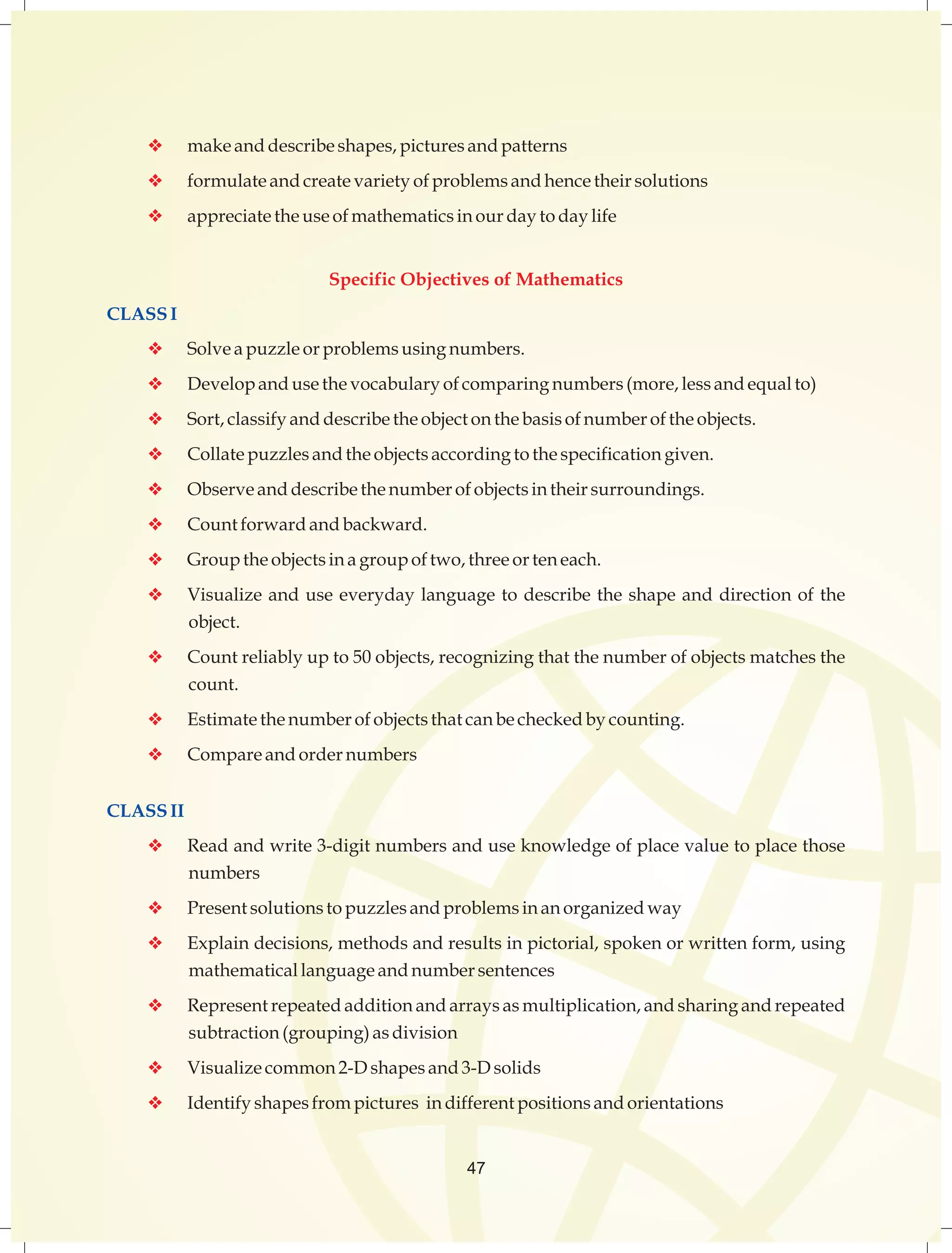

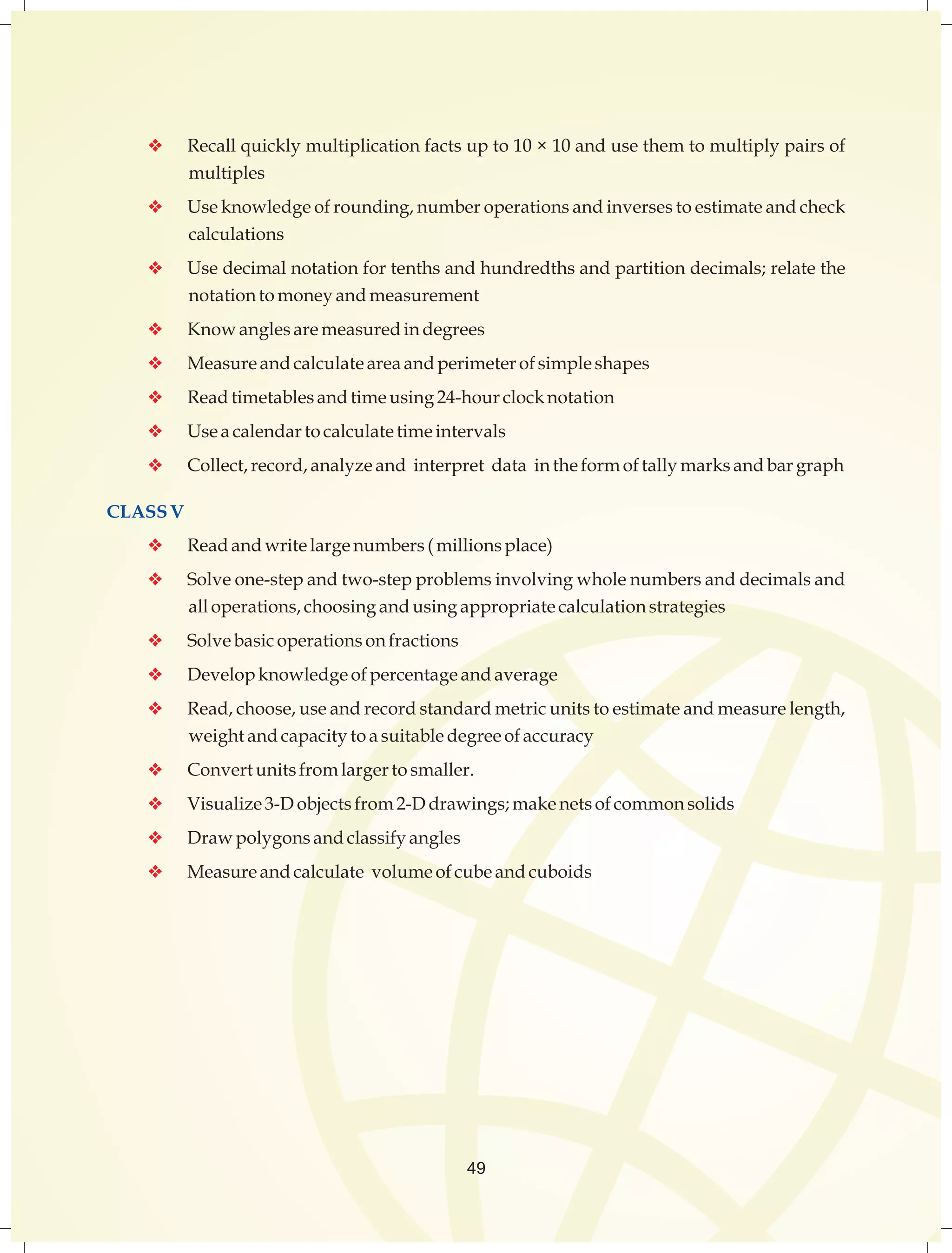
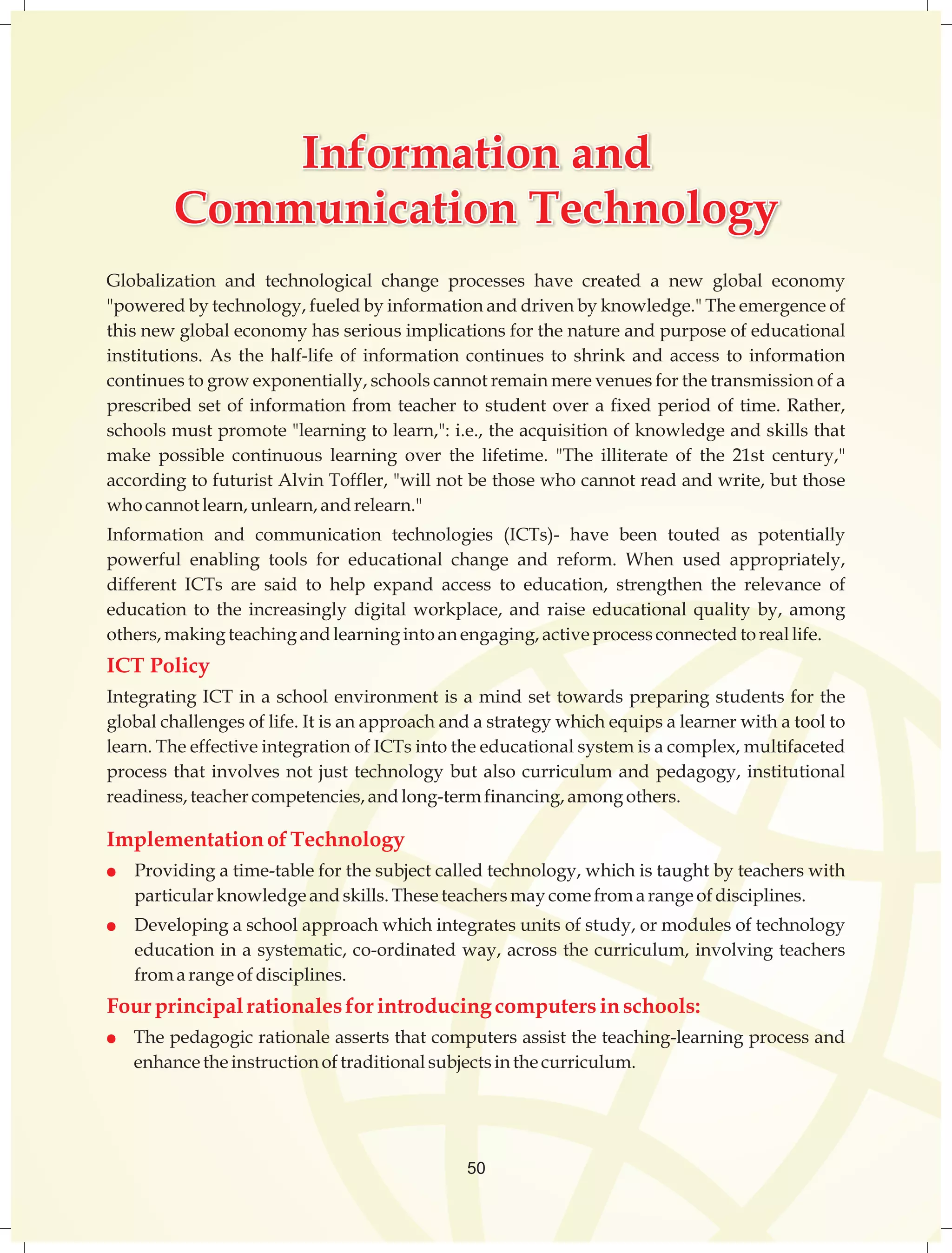

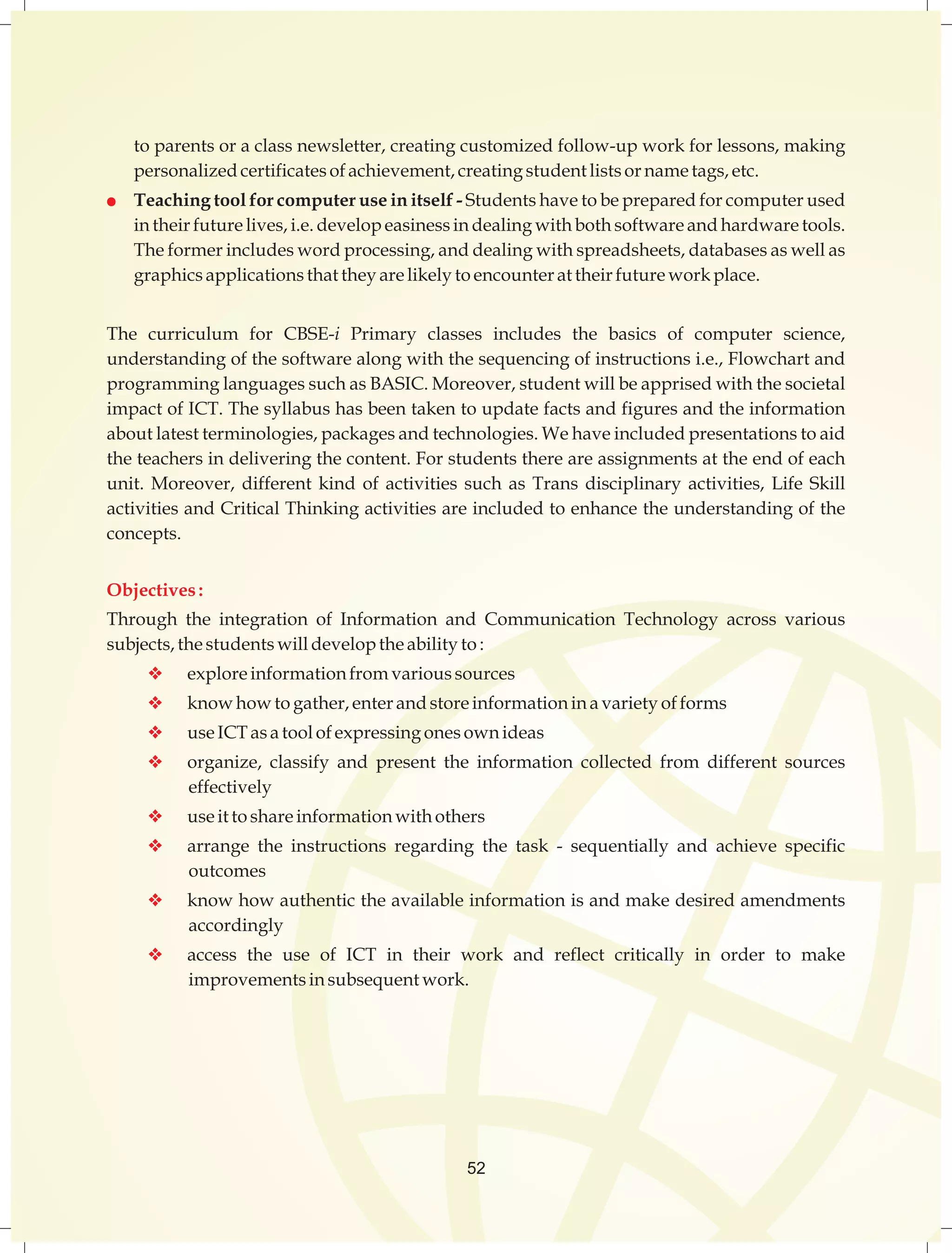


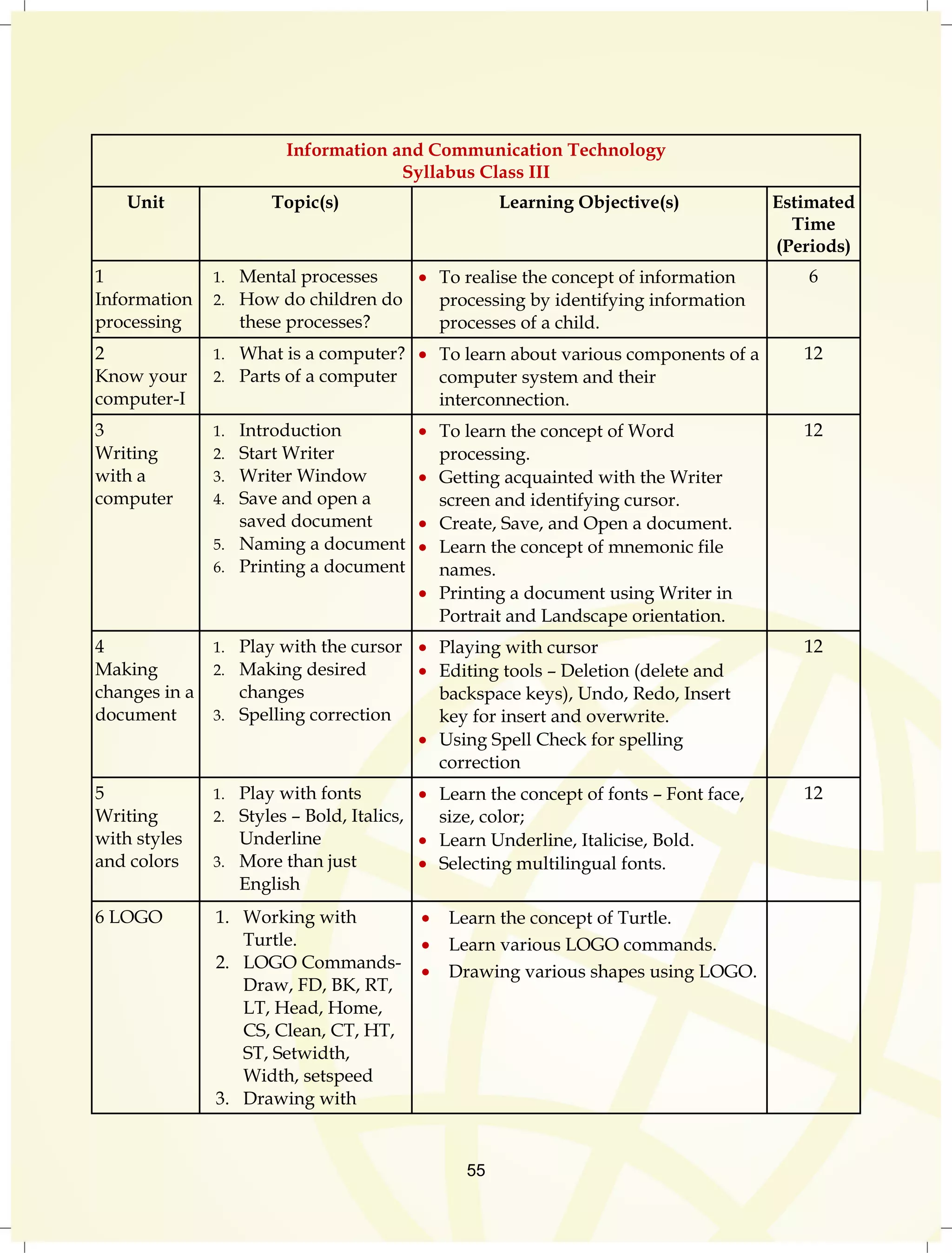


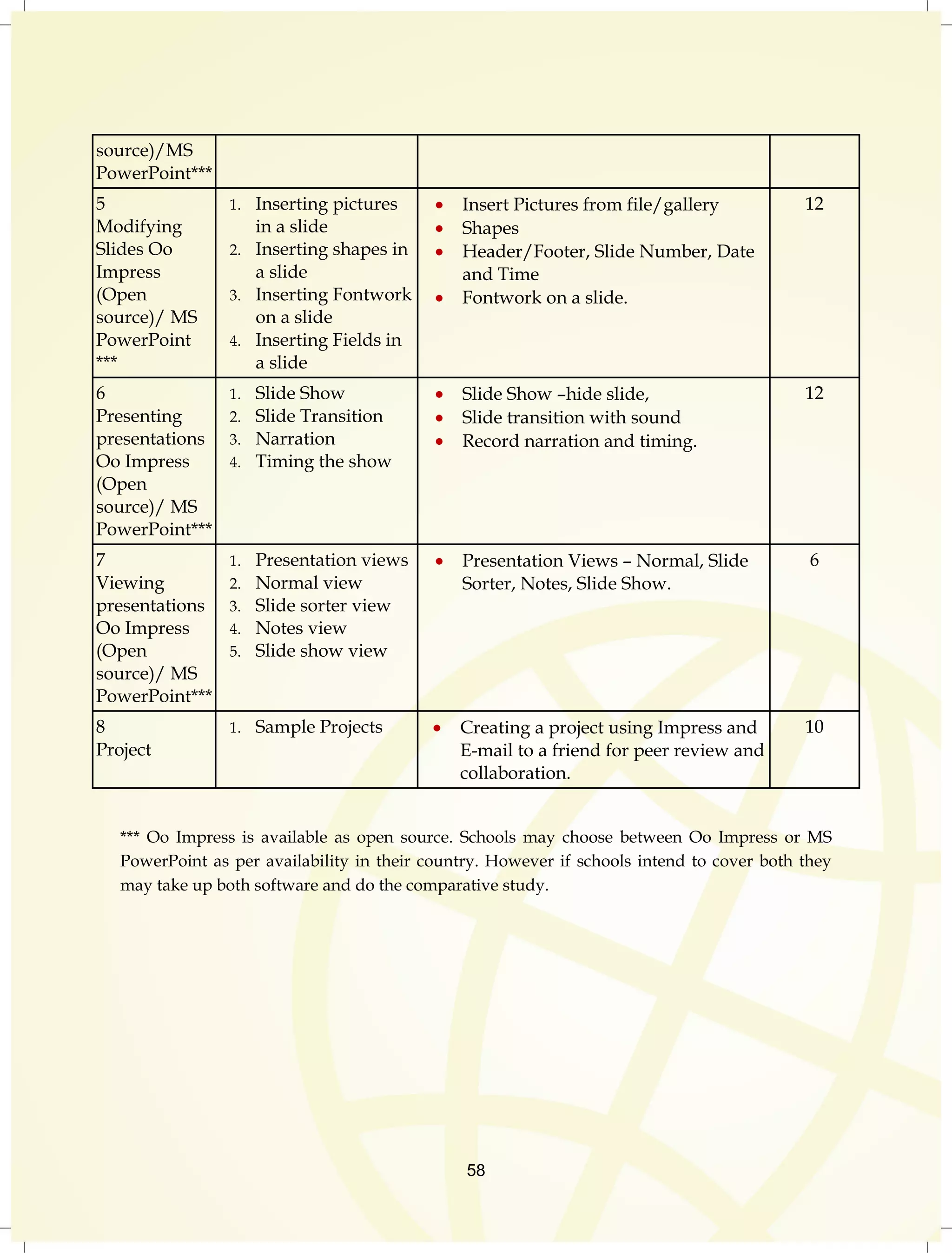


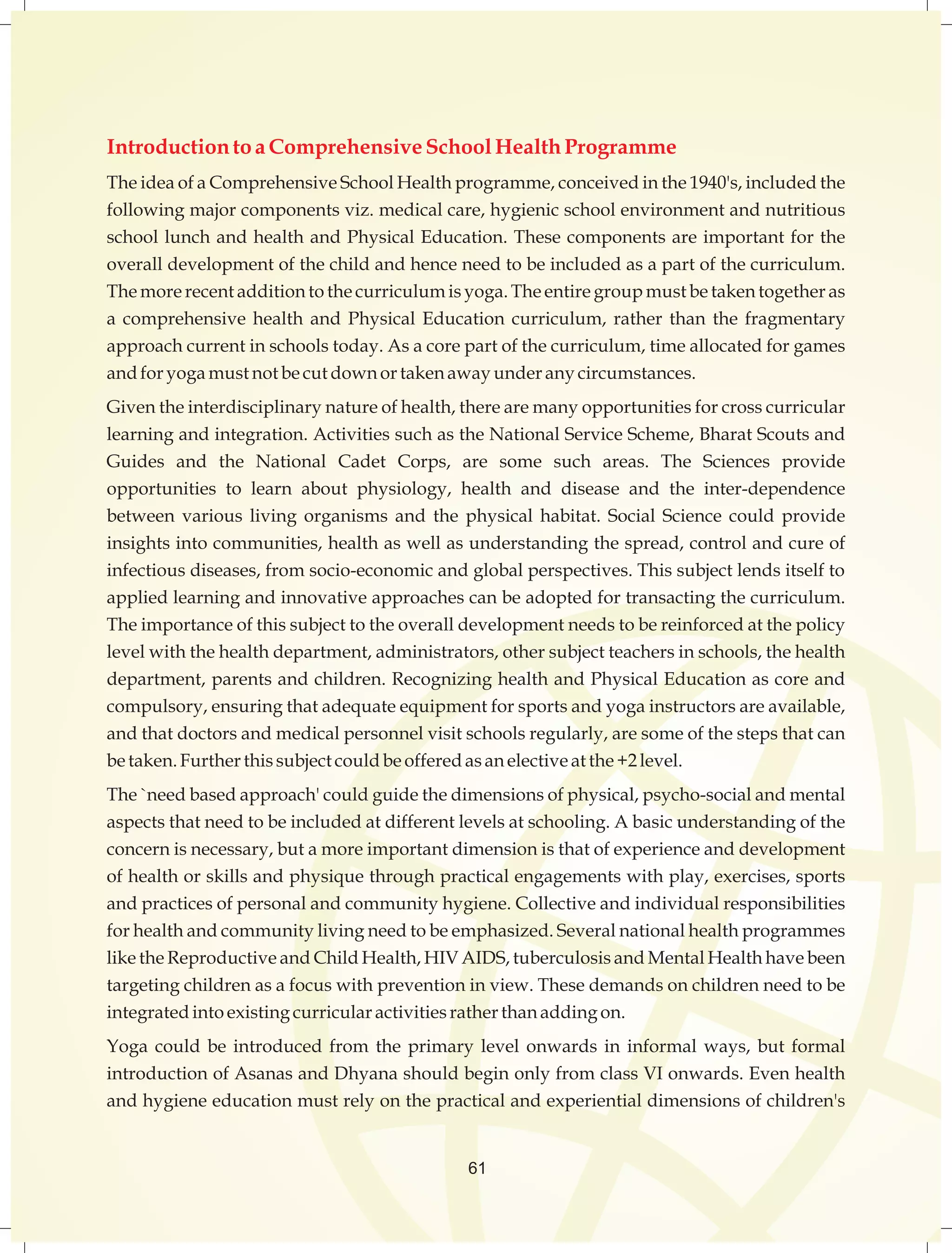











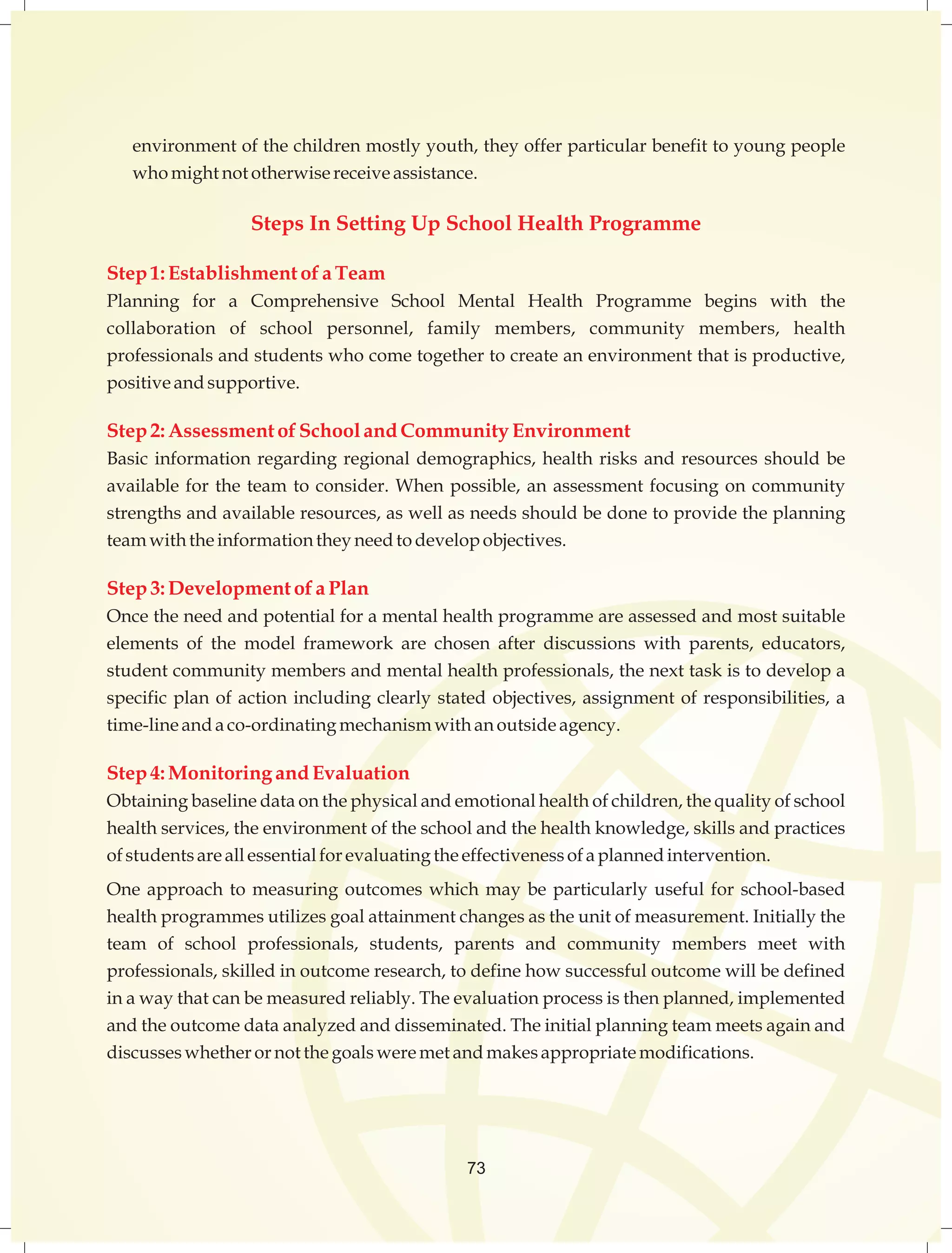


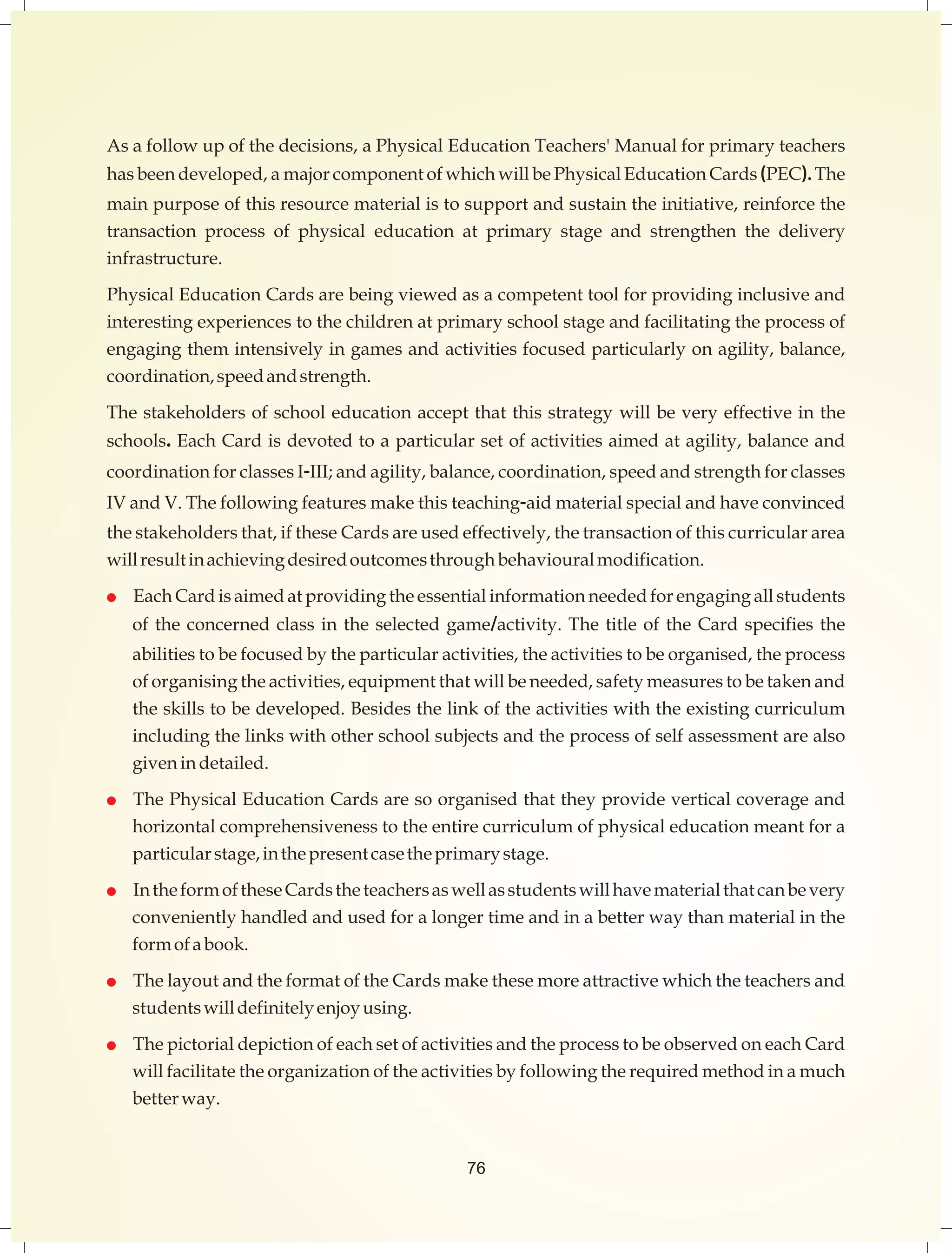


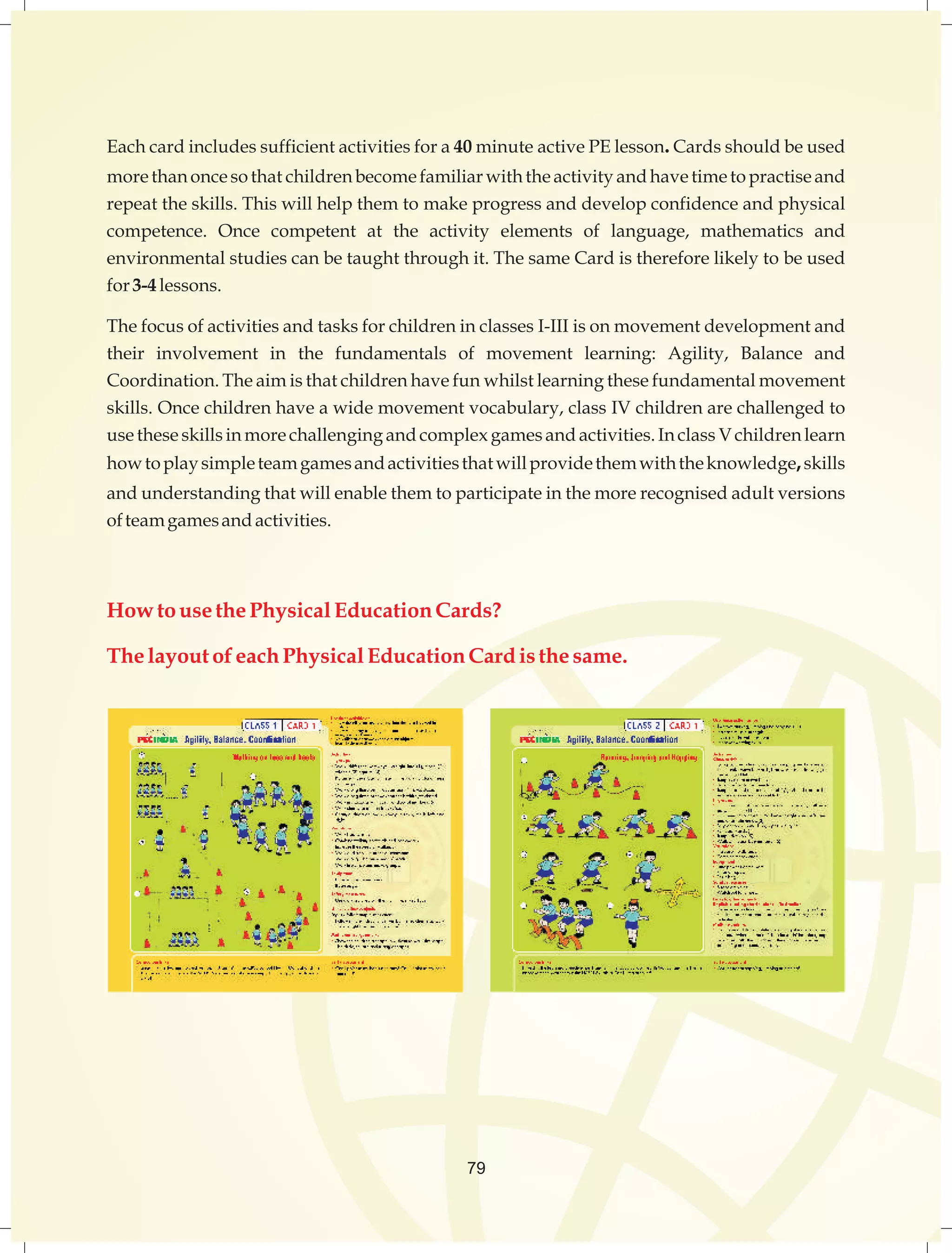
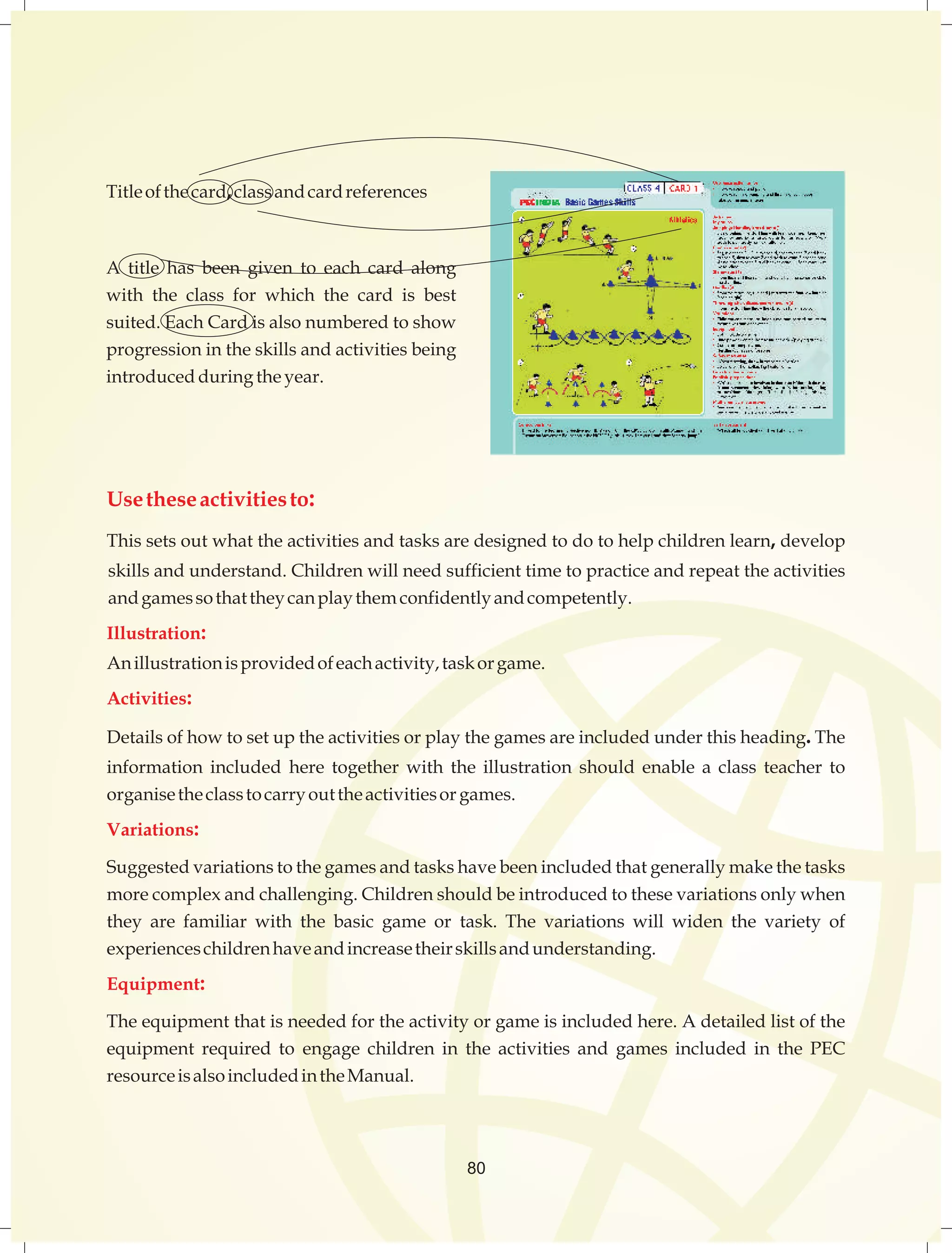
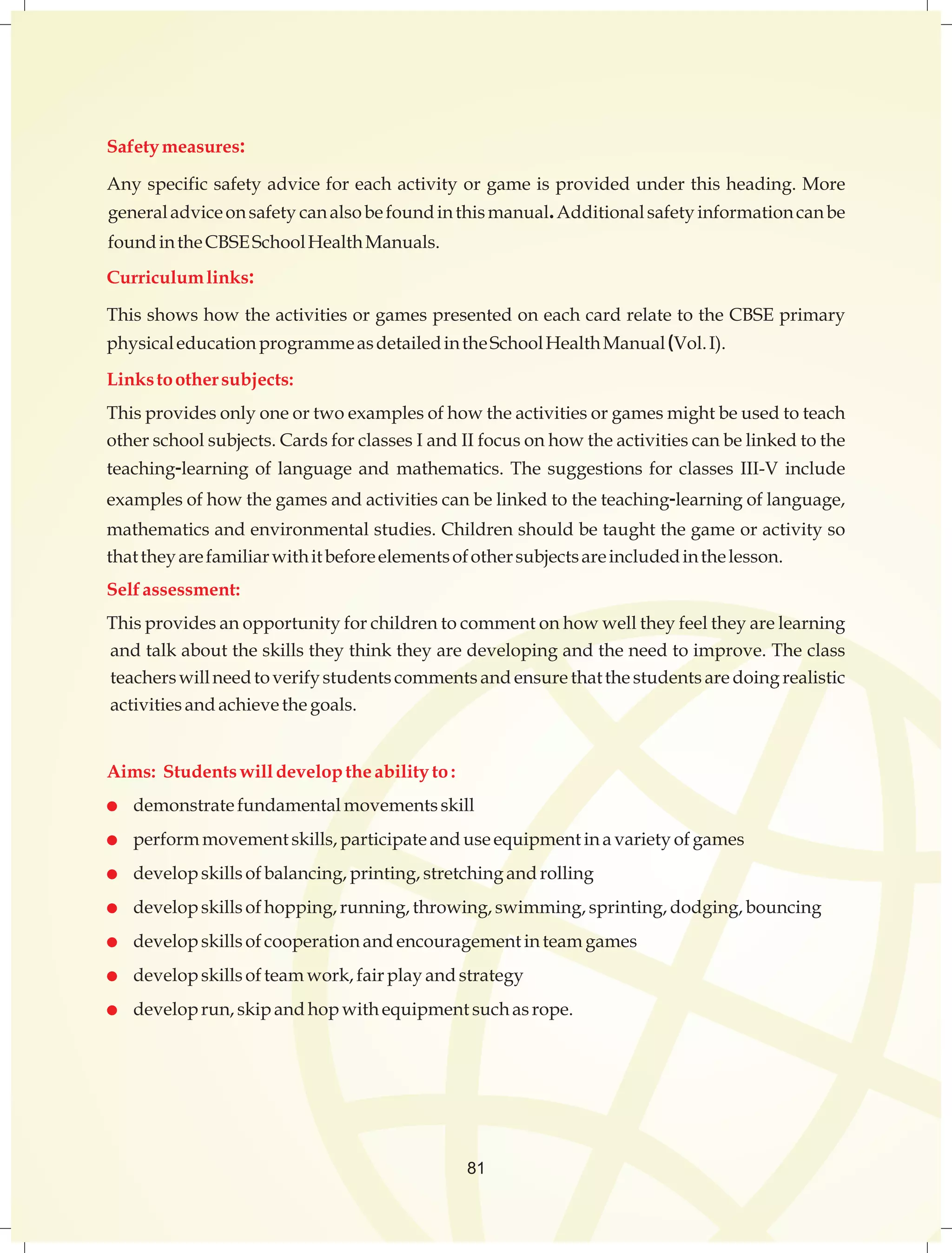



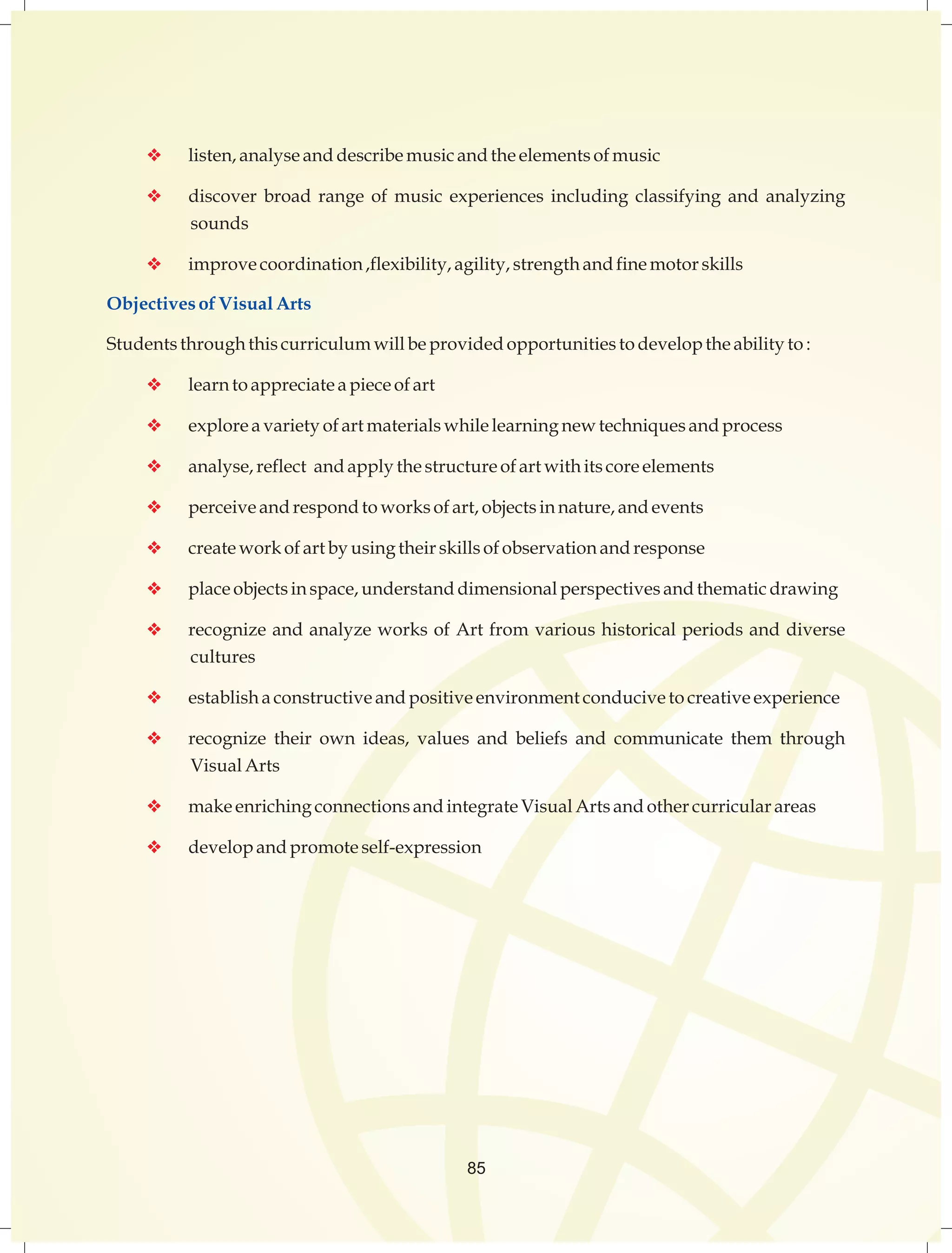



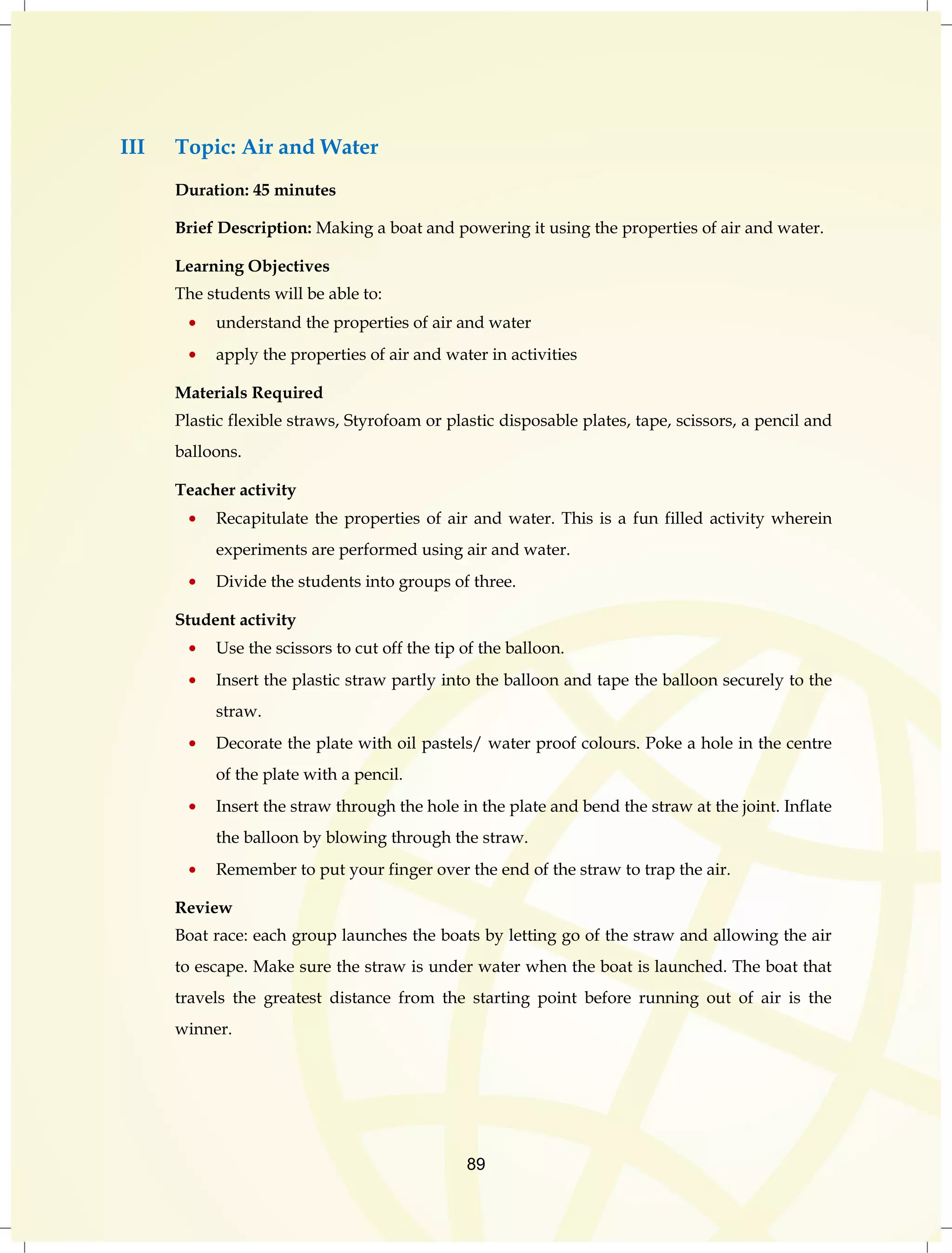






![of Lascaux from http://jamesmdeem .com/cavestory3. htm] Pictures/ PPT of Cave Art,
discussion about early man will add more meaning to the lesson.
Get creative about the way the students experience learning. Provide an actual
experience of cave art by setting up an area for the students where they can draw like
cave men. A corridor or a corner in the art room can be converted into a cave or cave
wall and students can draw on the walls. Dressing them up as cavemen adds to the
experience. An invitation can be extended by the cavemen in the morning assembly to
other classes.
Student activity
Dress up as cavemen. In a segment of the morning assembly, talk about the life and
times of early humans their way of living, their food habits, etc. Invite other classes to
come to the cave and watch the cavemen‟s drawing. Draw the hunters and other things
one wishes to draw. Once the students finish, they trace their handprint near their work
to denote their signature, just as early man used to do.
Review
Make a scrapbook: Students collect and paste picture of early man and cave art.
96
Suggested activities:
Combine line and colour: Draw a simple form, using specific colours, e.g., the
Indian tricolour. Play with different kinds of lines to create a symbolic line
drawing.
Memory Drawing: My family, My mother, My father, My sister and I in the park,
how I spent my summer holidays, etc.
String art: Draw a simple line on a dark colour paper. Apply glue on the line and
lay white string along the drawing, carefully following the line.
Exploring lines in different media: pencil, oil pastel, paint, sketch pens, etc.
Assessment
The students are assessed for their drawing and creative skills, perfection in drawing
different types of lines and uniqueness in creating forms with the help of various lines.](https://image.slidesharecdn.com/cbse-141216024836-conversion-gate01/75/Cbse-106-2048.jpg)

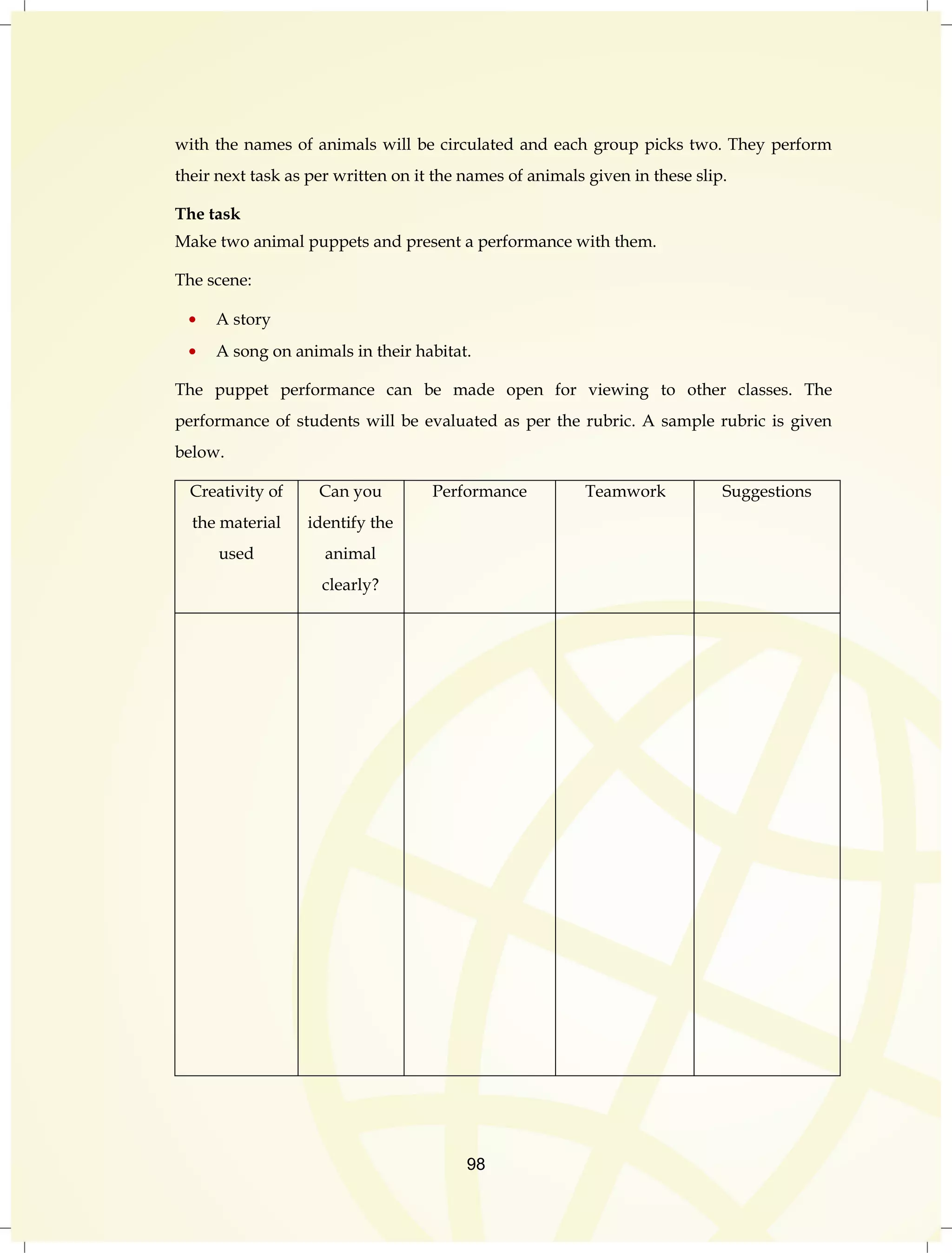




![is across the road). Some of the students ride their riding toys to represent traffic on the
road while the school children cross the road making sure that they don‟t bump into
them. The bus driver (one of the students) stands facing the audience and pretends to by
driving a bus. The other students should line up on one side as if waiting to board the
bus. The bus driver applies the brakes (Students do this with lots of screeching noise)
and mime opening the bus doors. The first student in line boards the bus. The student-teacher
stands beside the students in a queue. One of the students pushes his/her follow
mates while boarding the bus. The student-teacher intervenes to make the students
realize the importance of safety rules.
103
Review
Students fill in the missing blanks on their own getting clues through rhyming
words.
When you‟re sitting on the b____________.
Please sit still, don‟t make a fuss.
Keep your hands beside your‟s____________.
Feet to the front for the whole ride!
When your‟re riding in a c____________.
In the back is where you are.
That‟s the safest place to b____________.
On a booster seat your see!
[Reference: Grade II activity book by Alberta Office of Traffic Safety]
Assessment
Assess the students based on their responses to the class activity and classroom
interaction on „Safety on Road‟.](https://image.slidesharecdn.com/cbse-141216024836-conversion-gate01/75/Cbse-113-2048.jpg)
